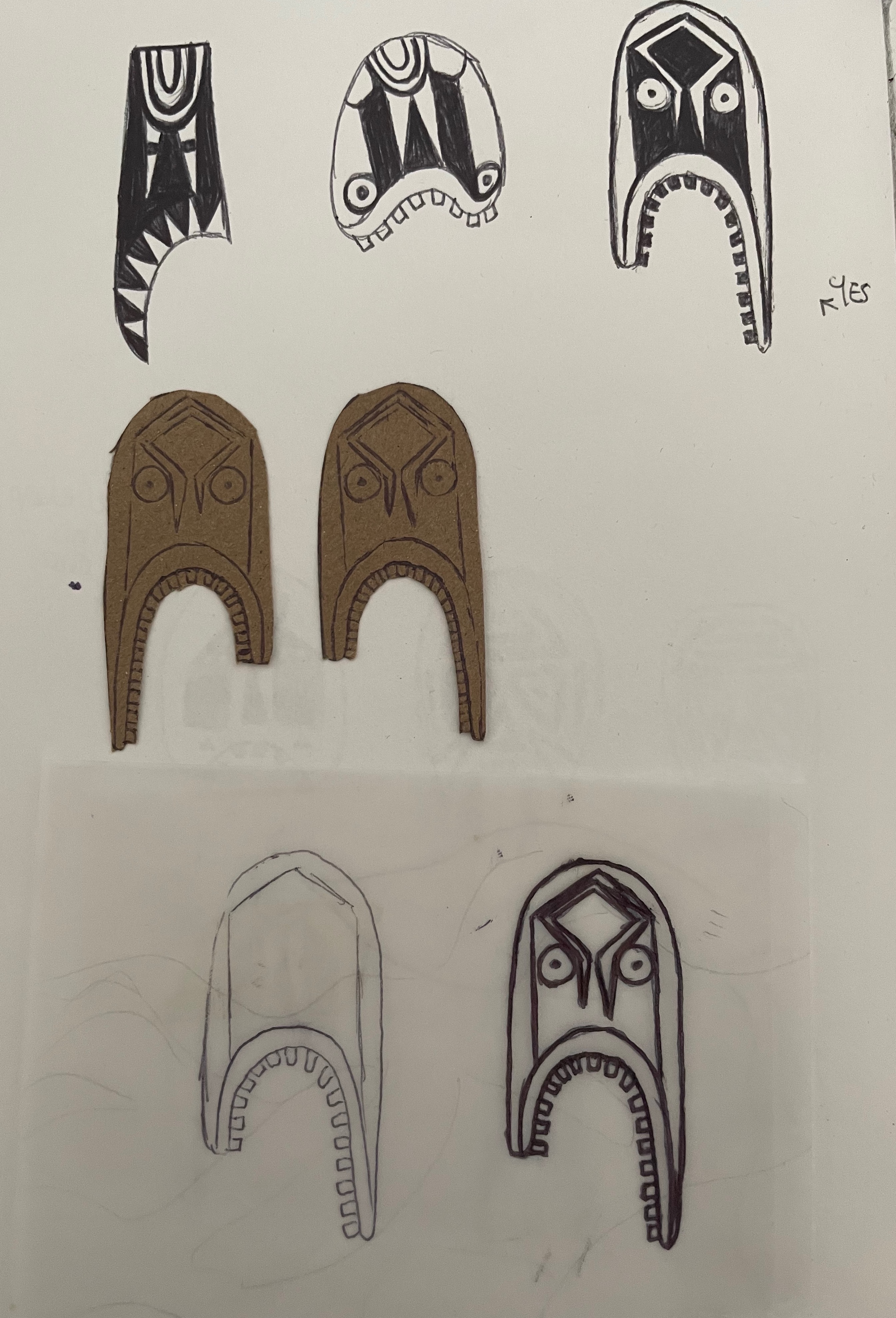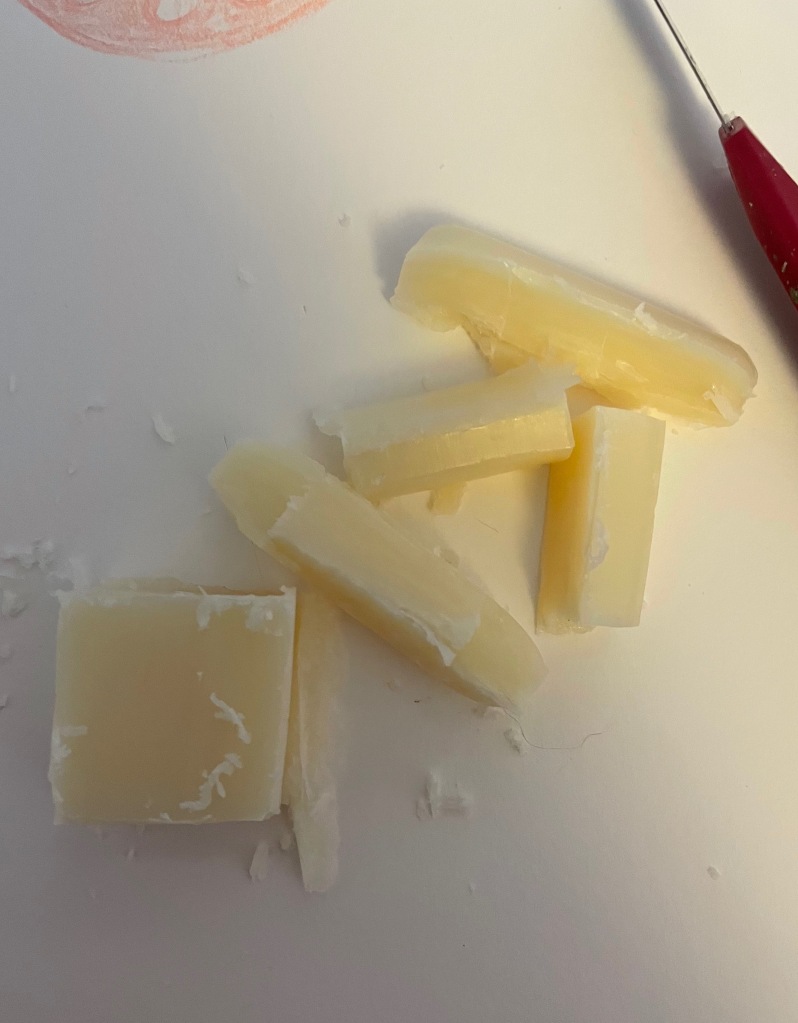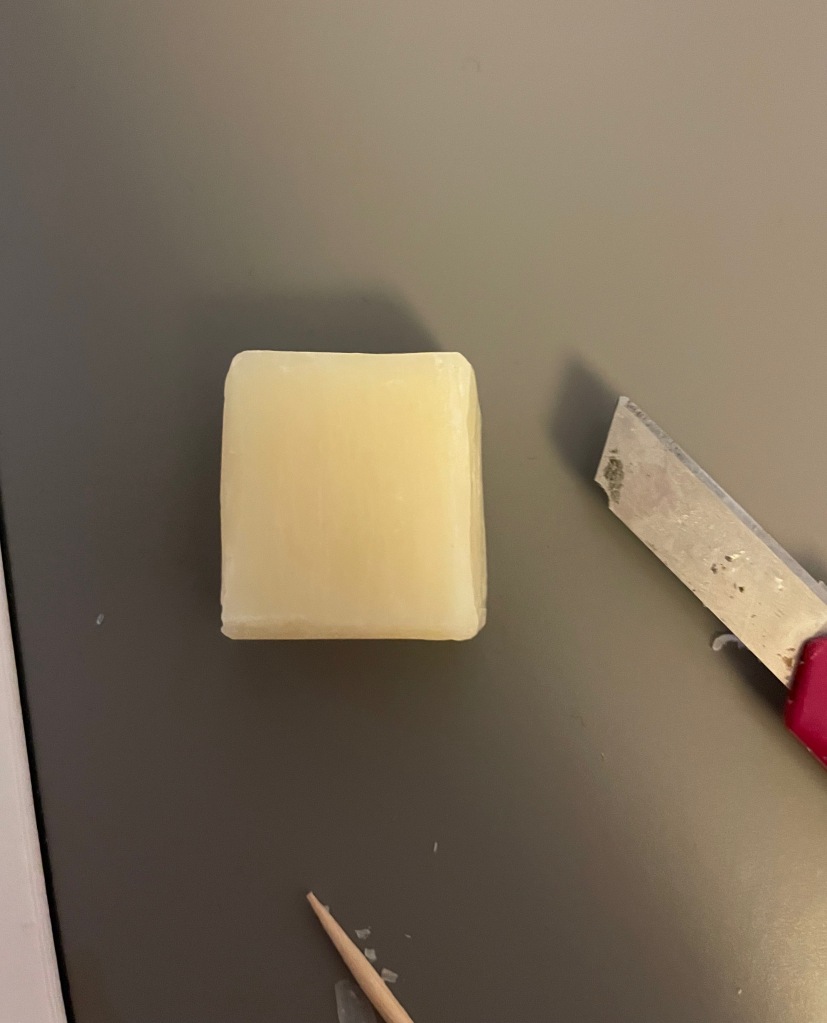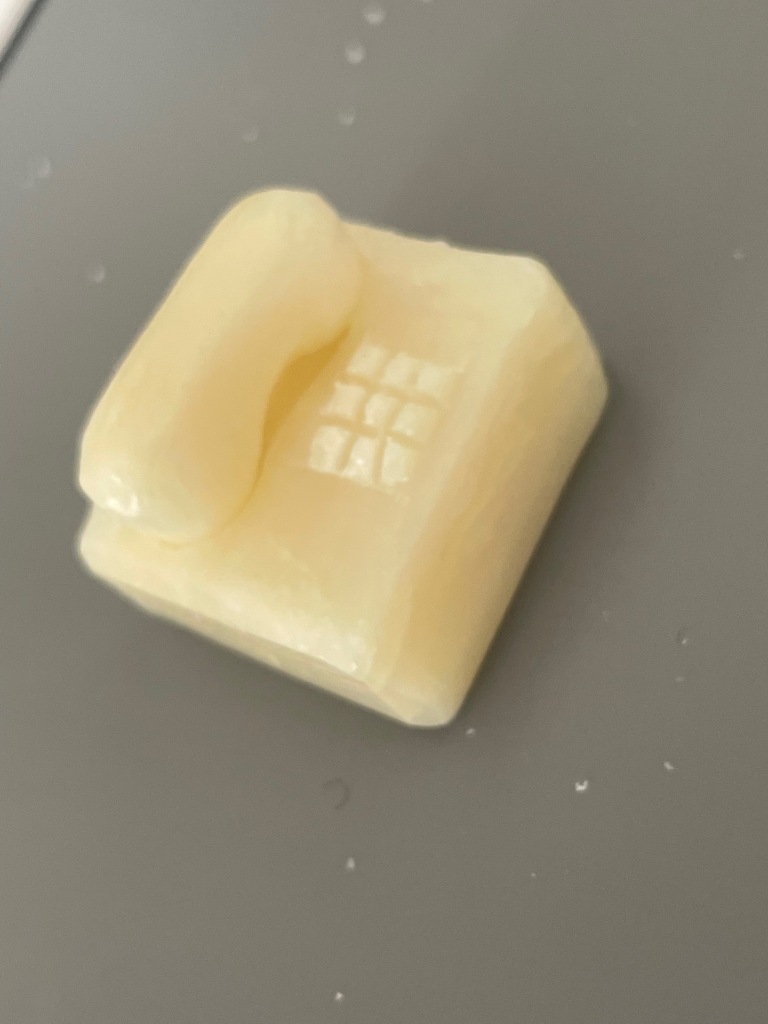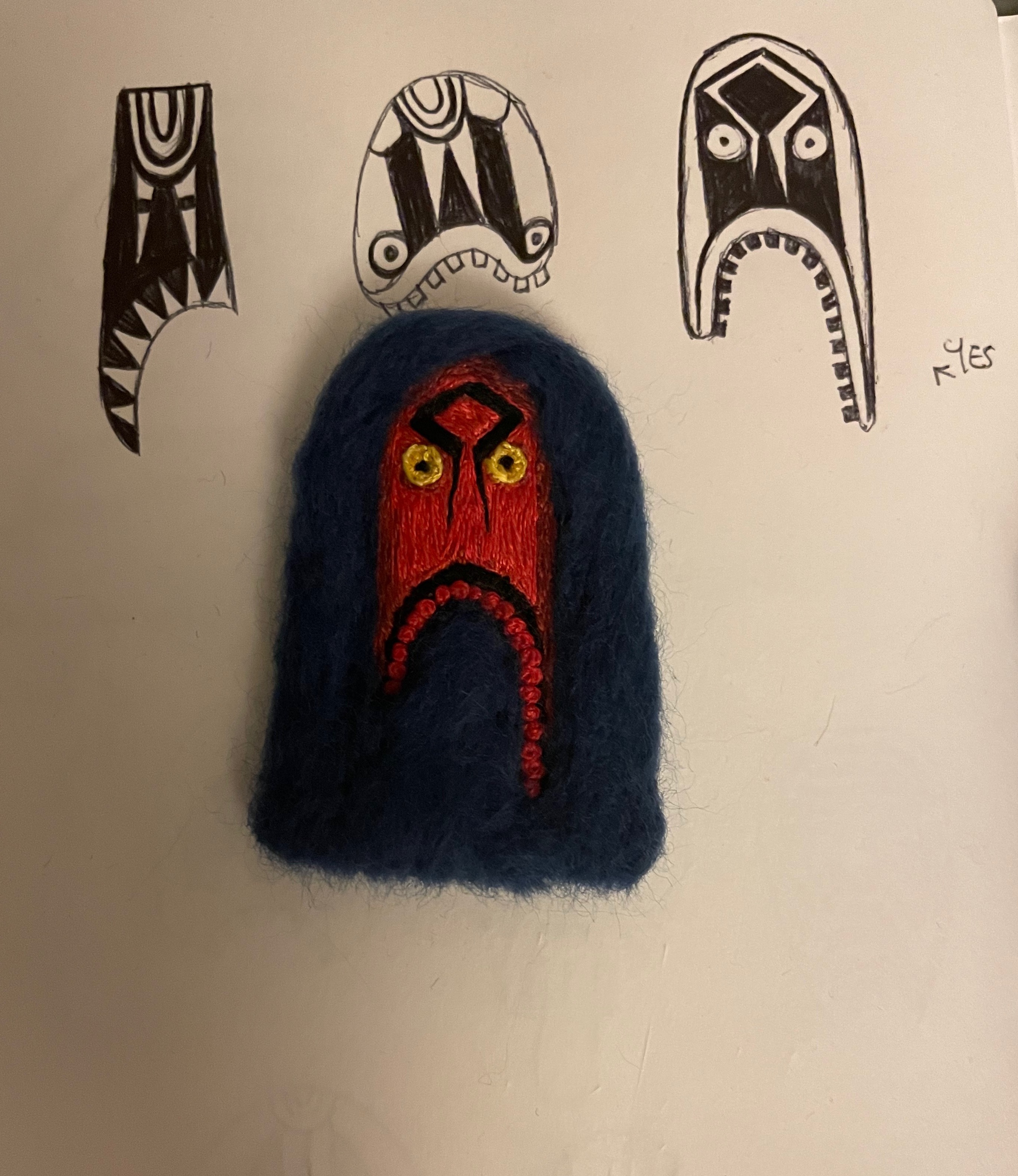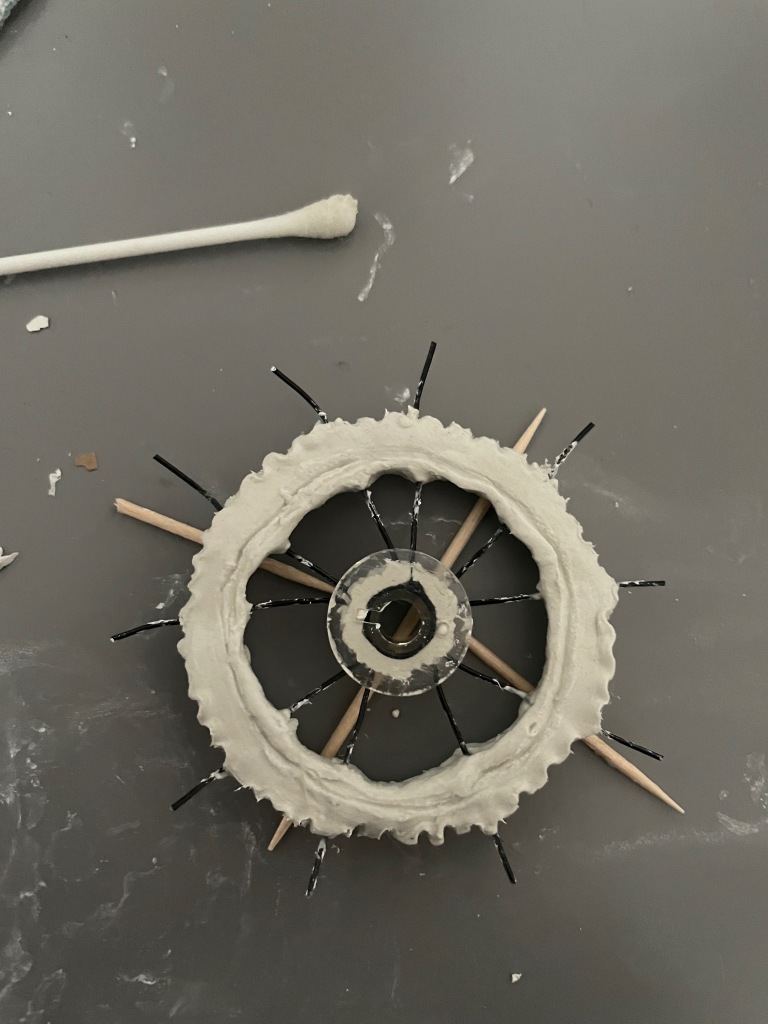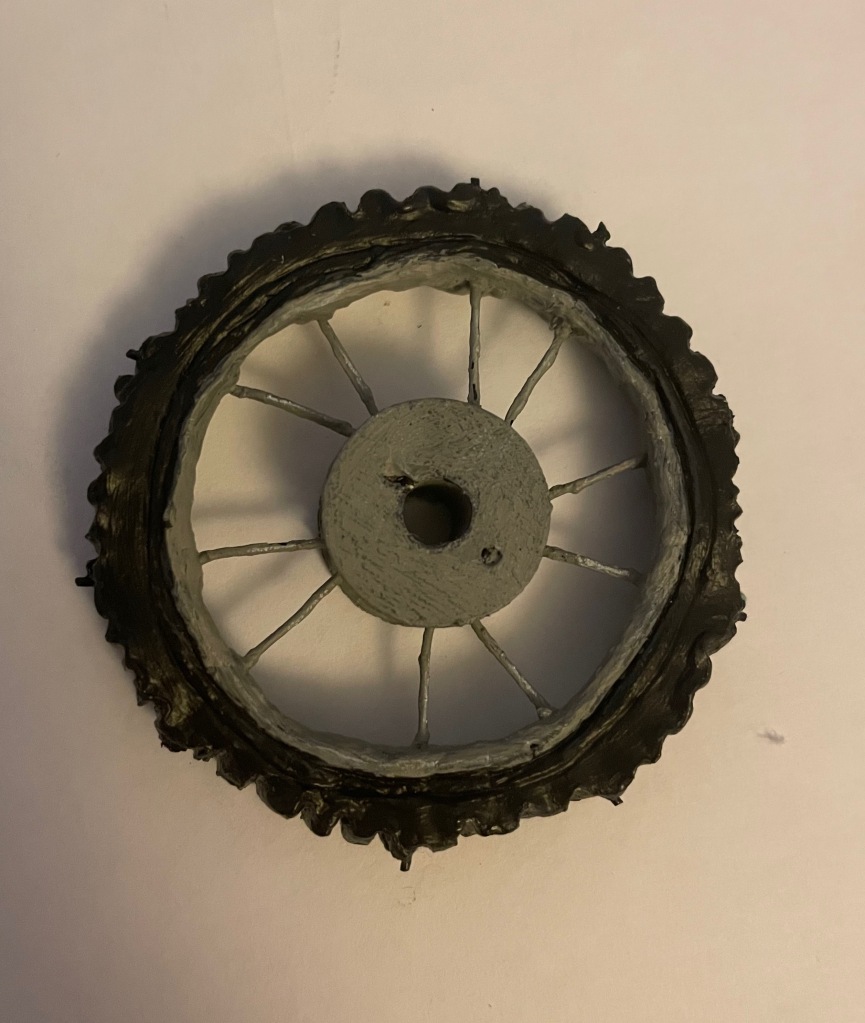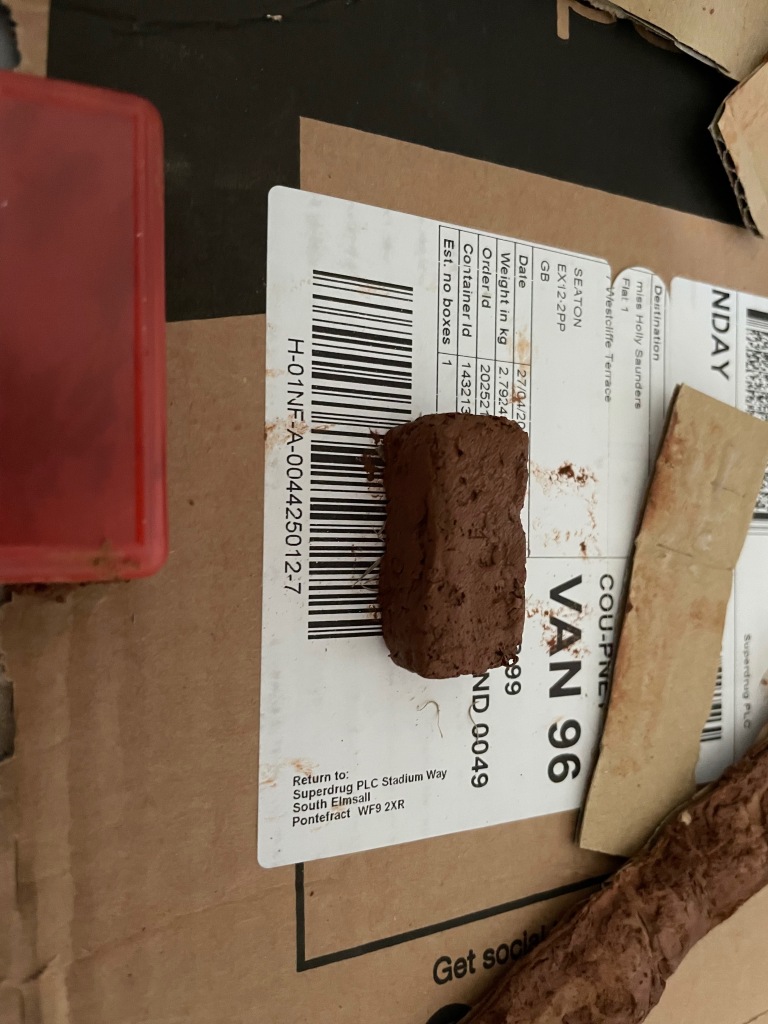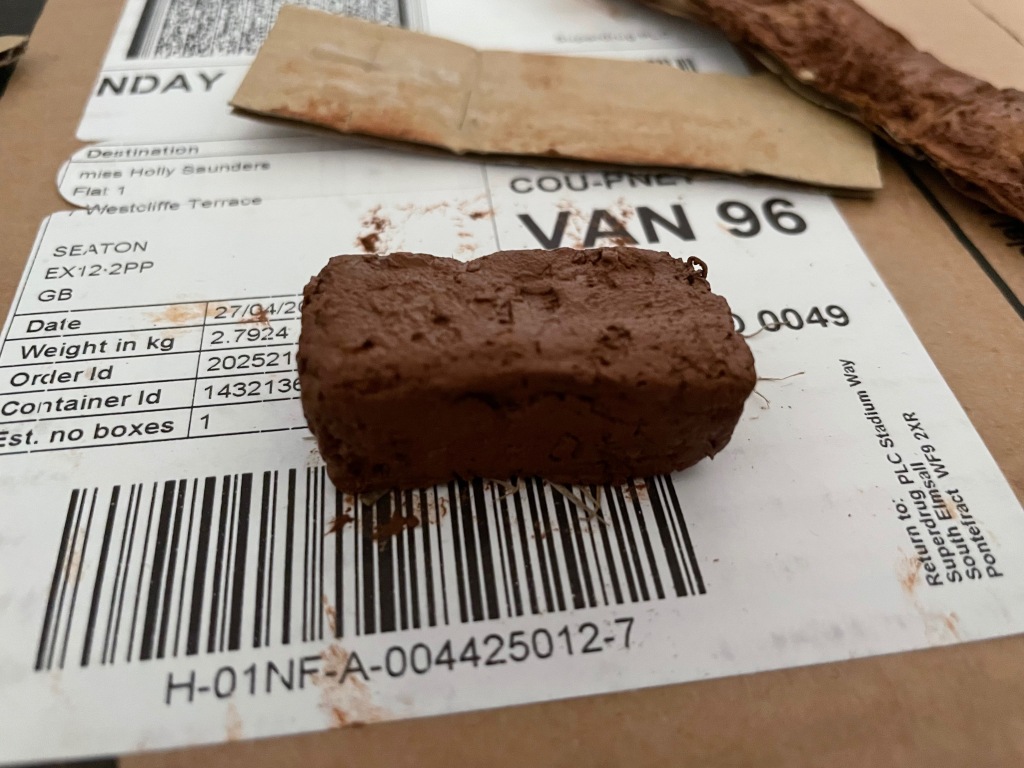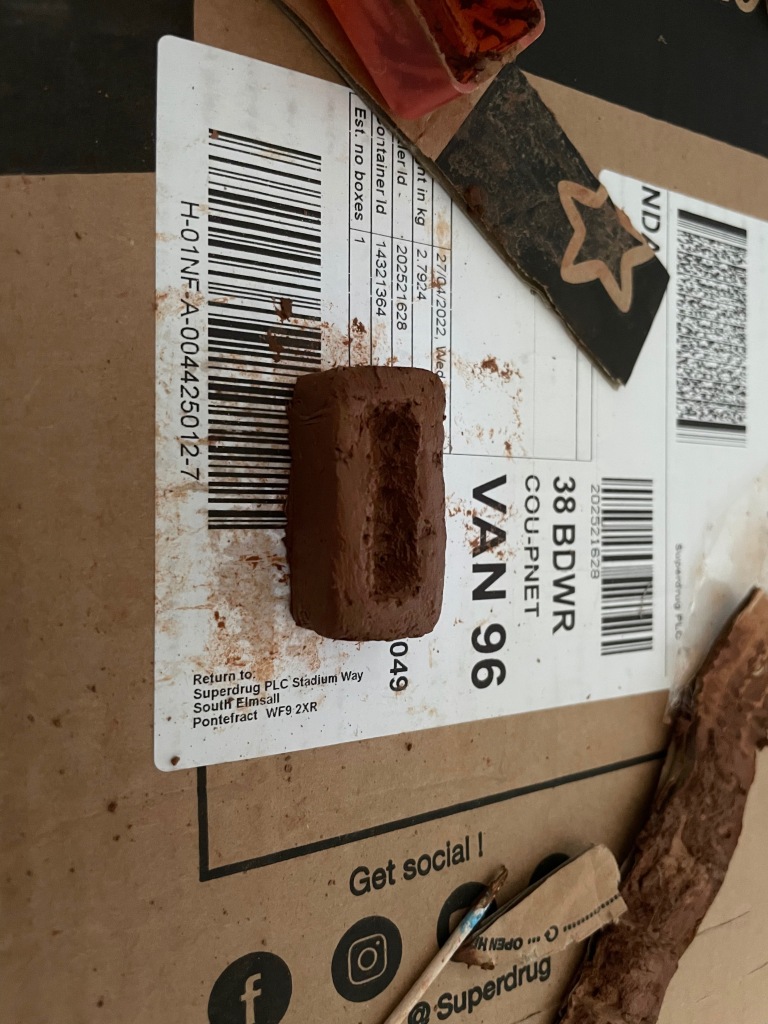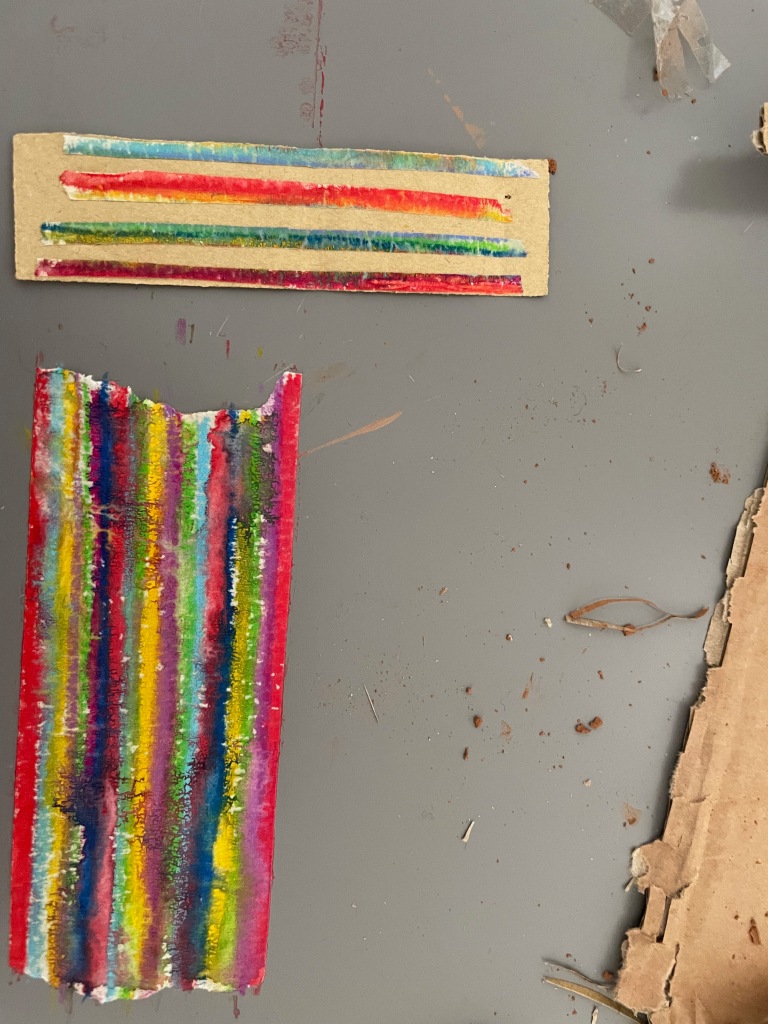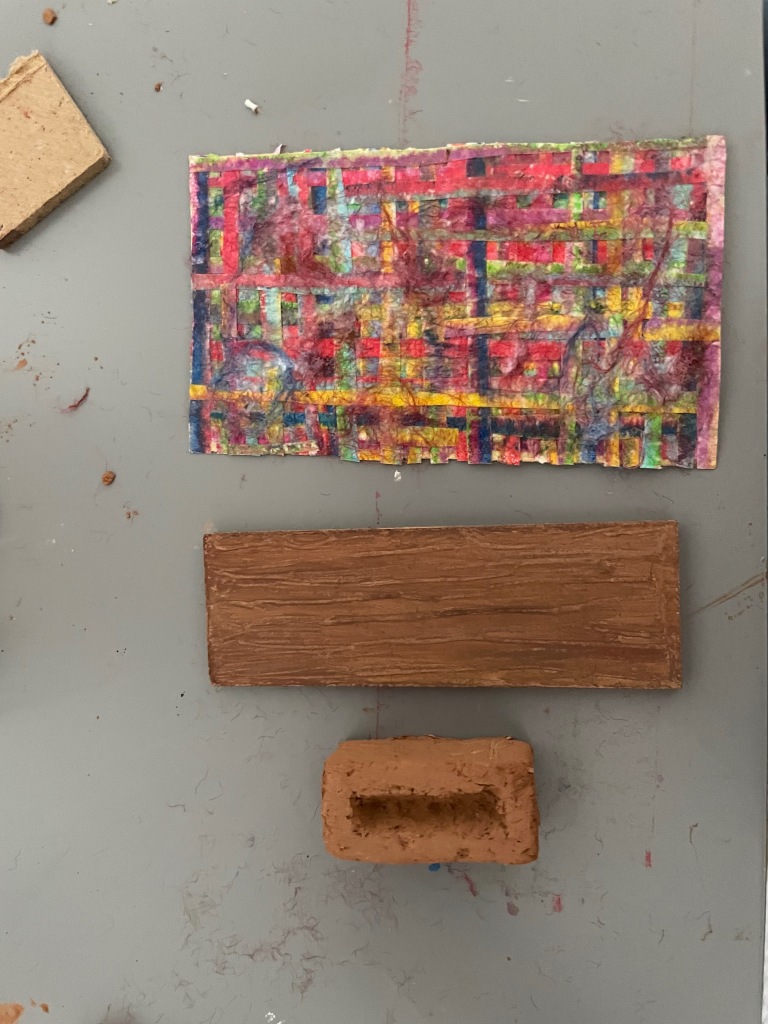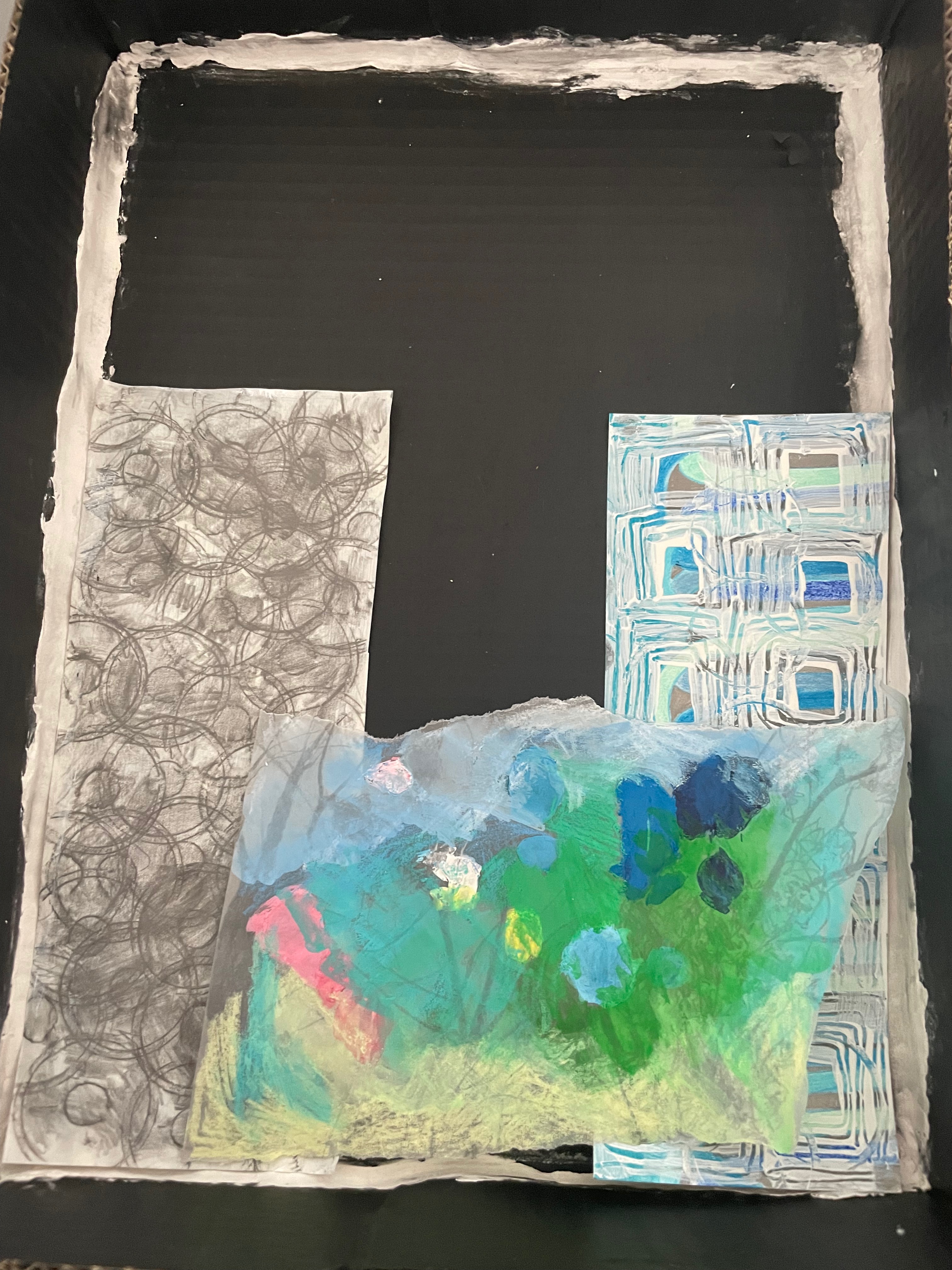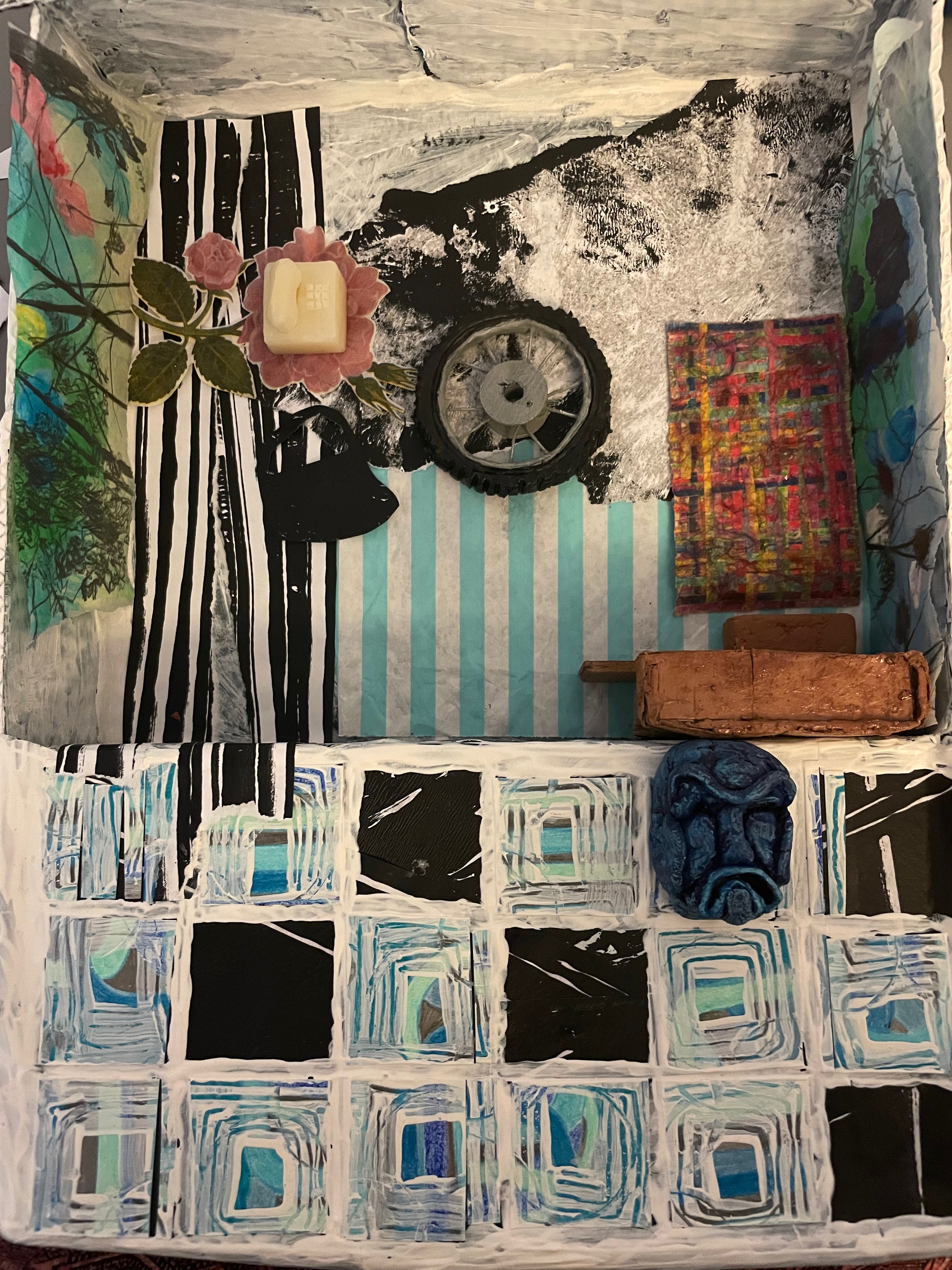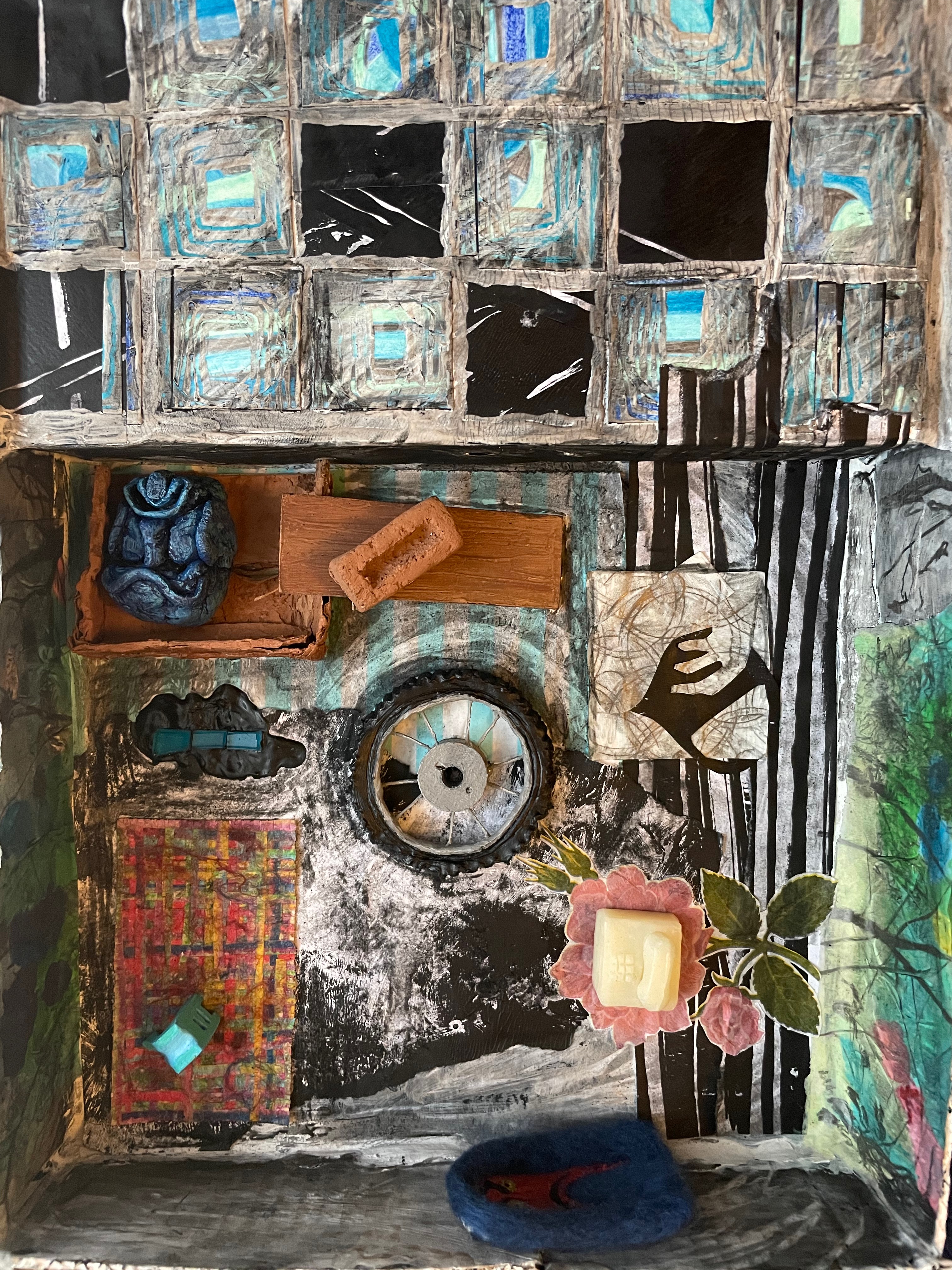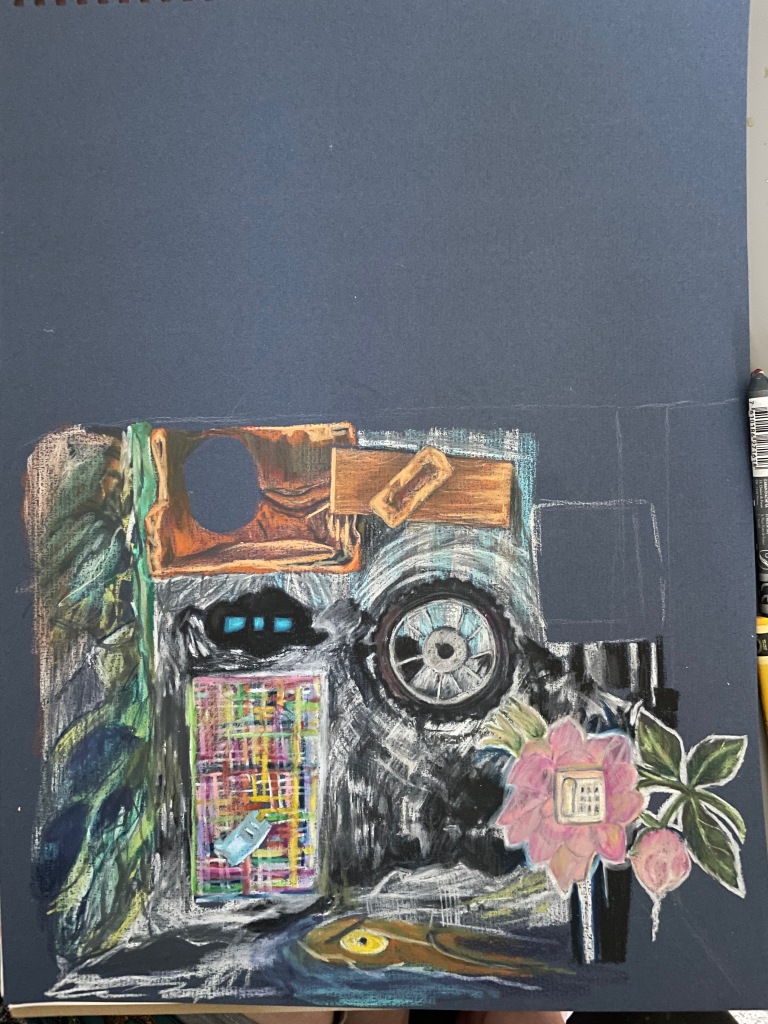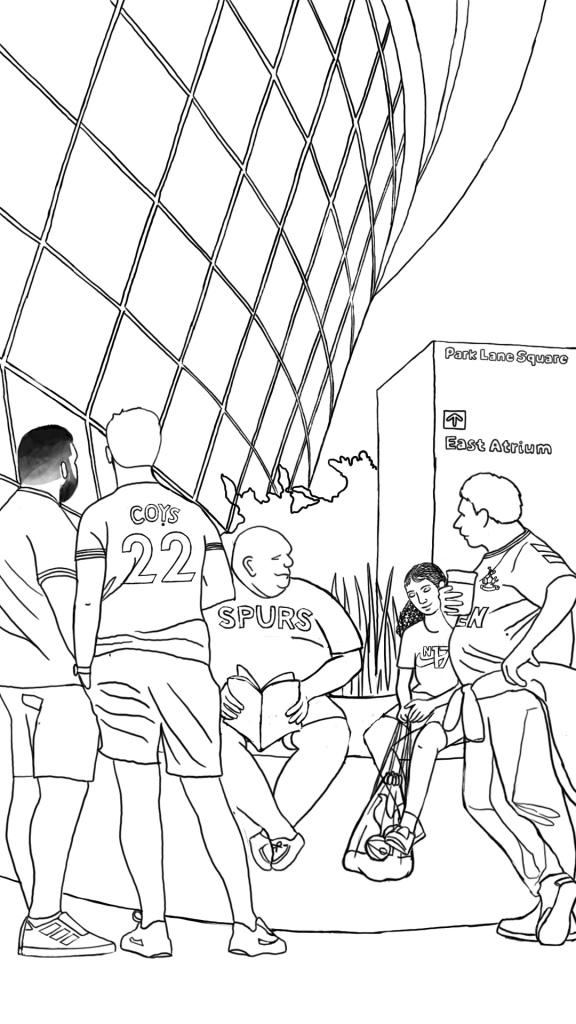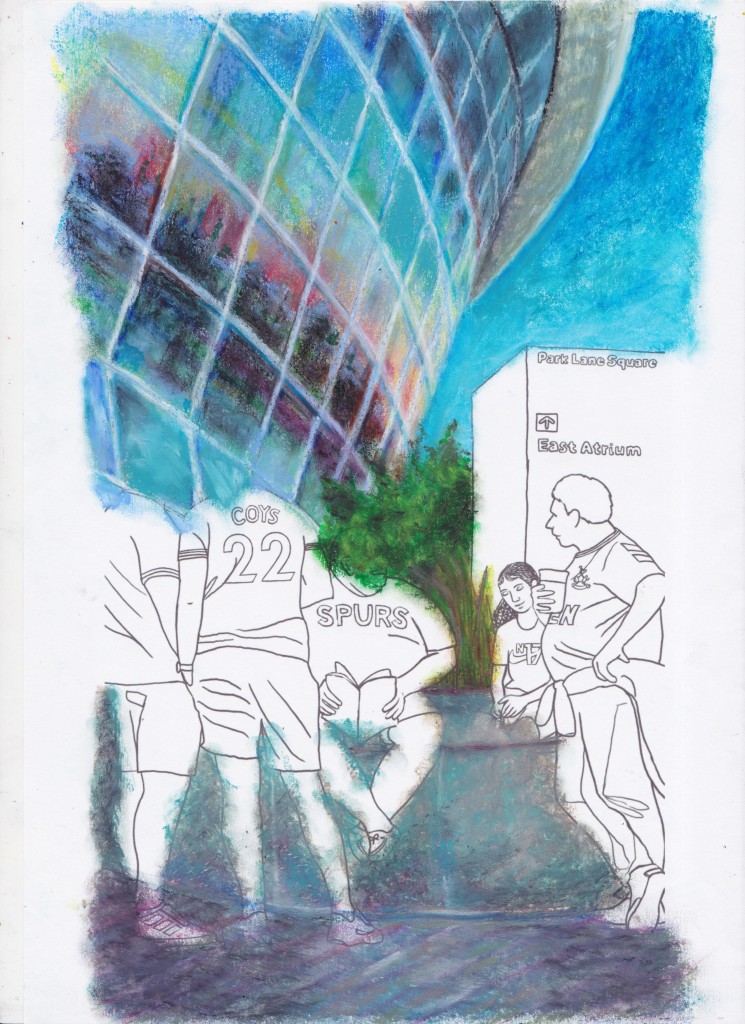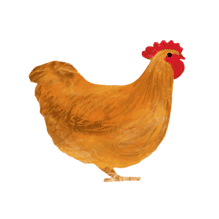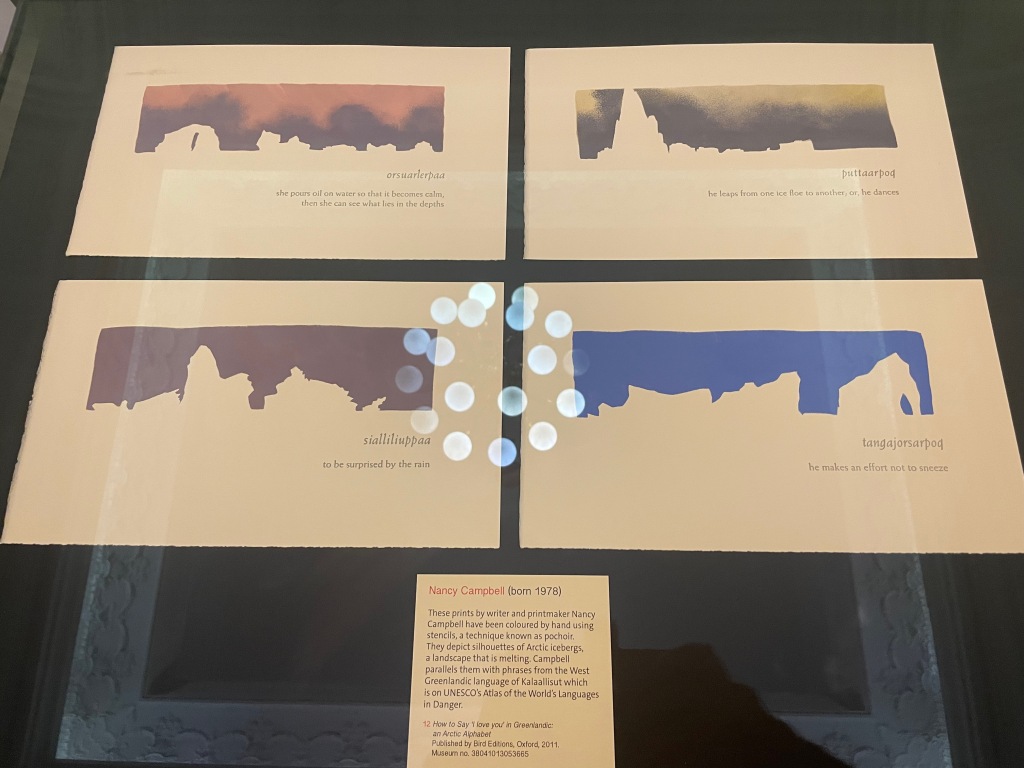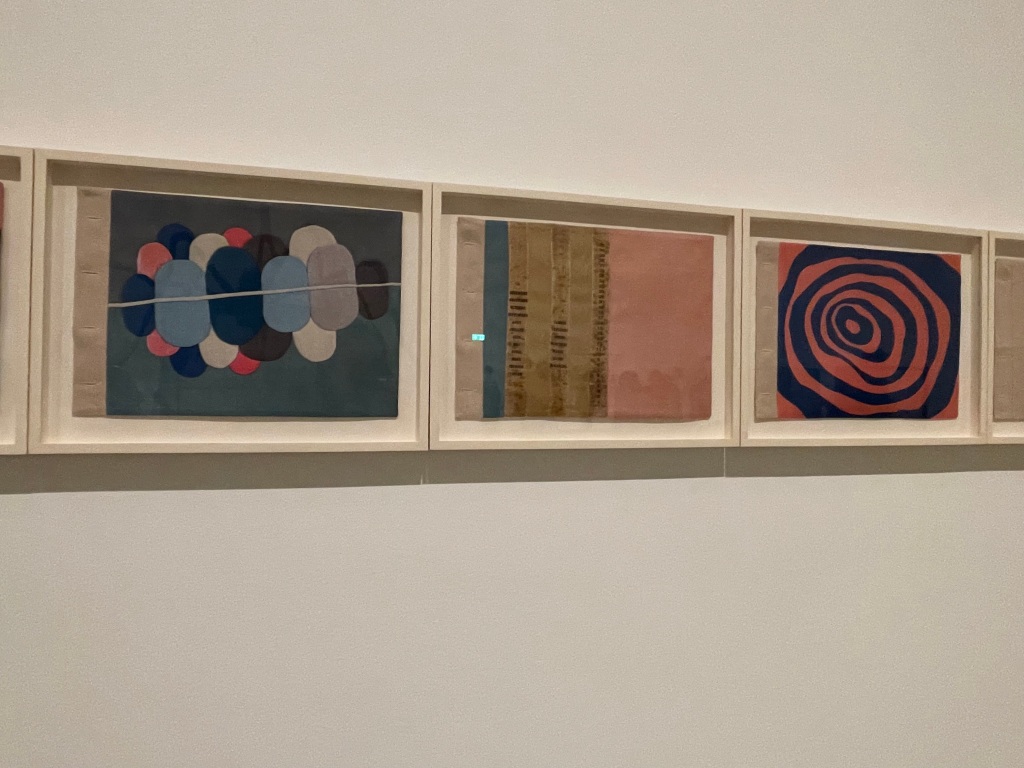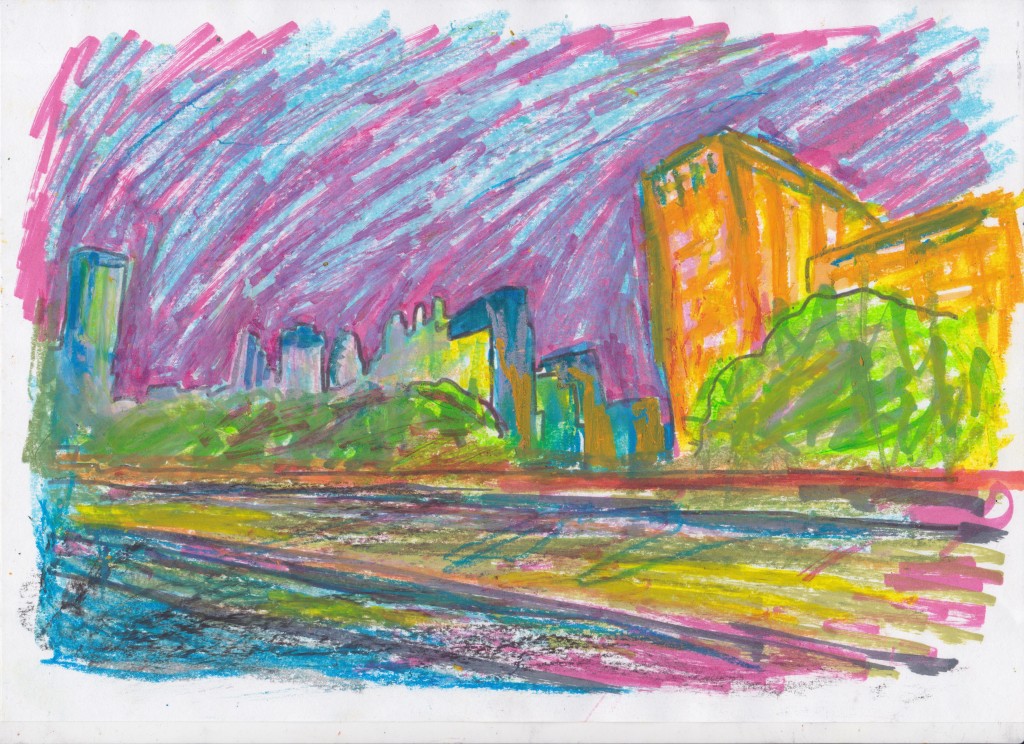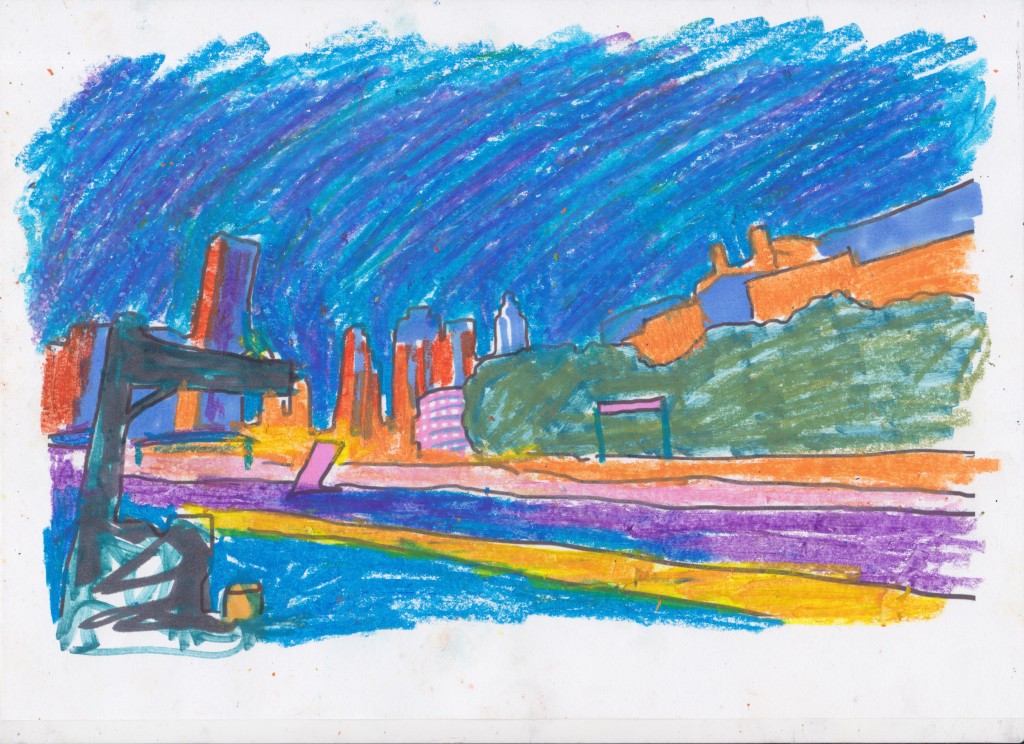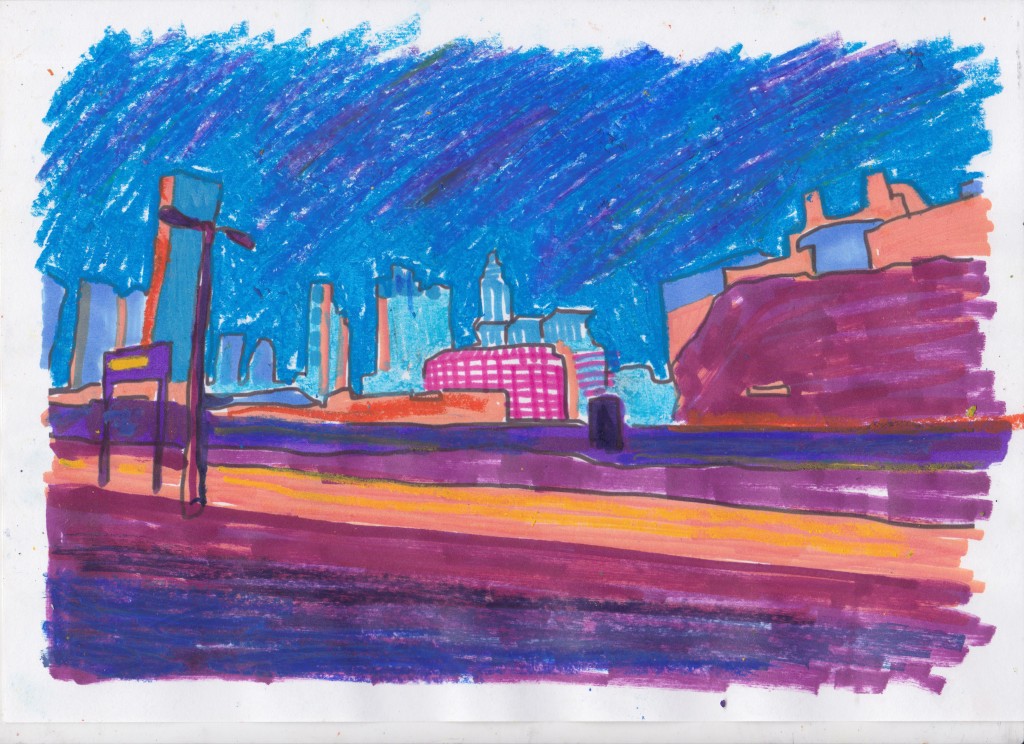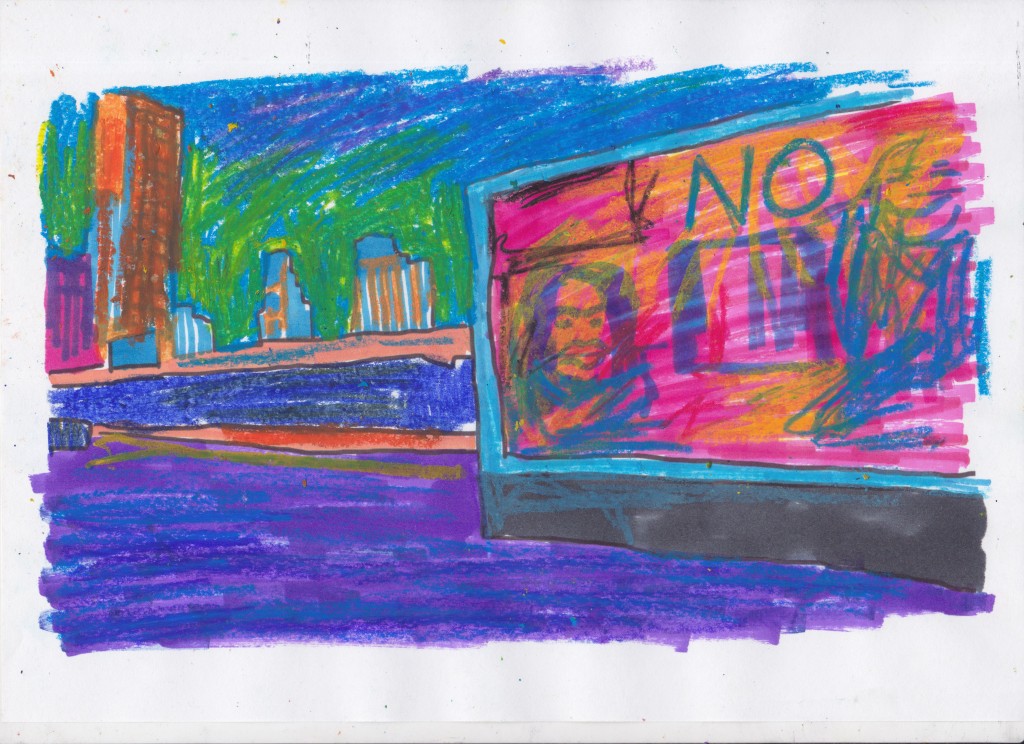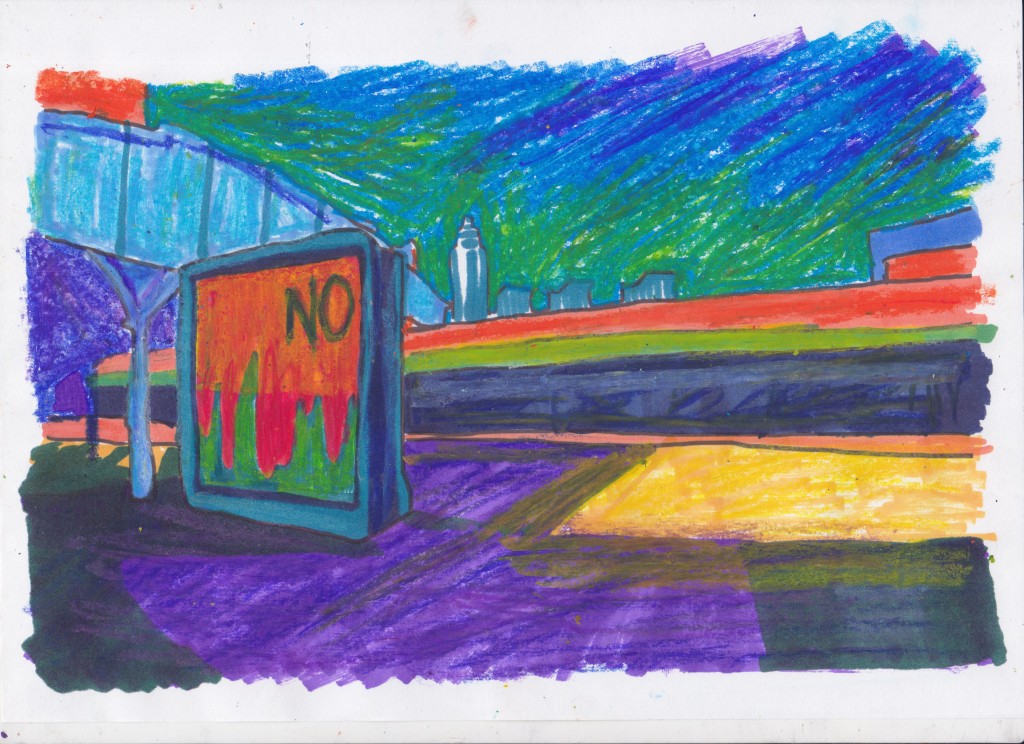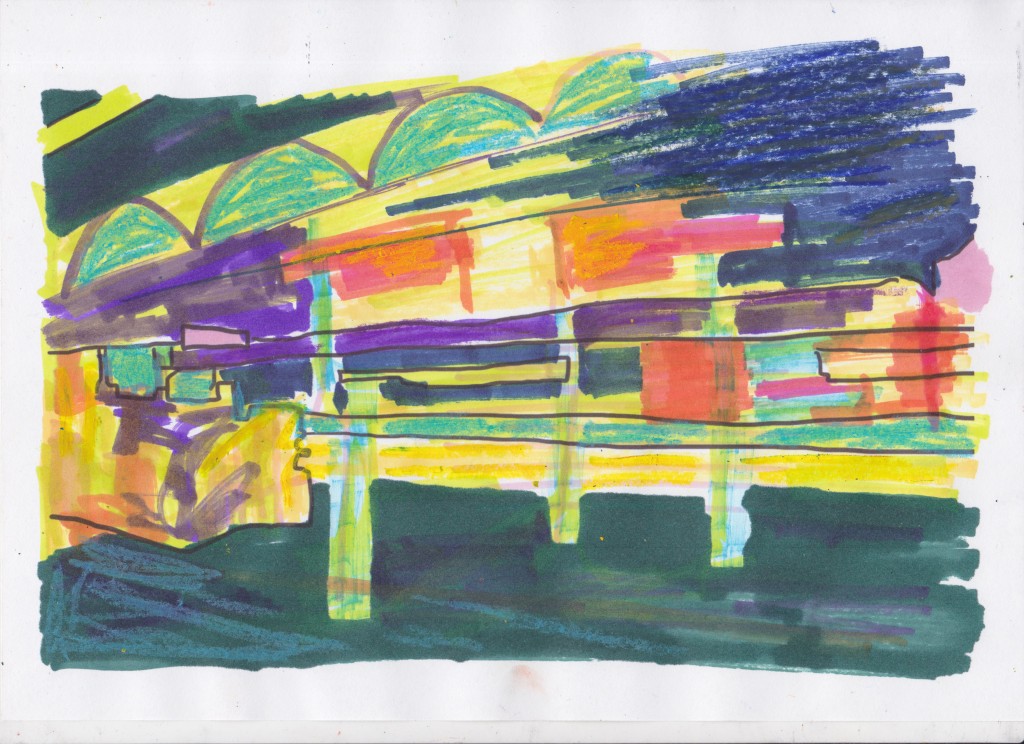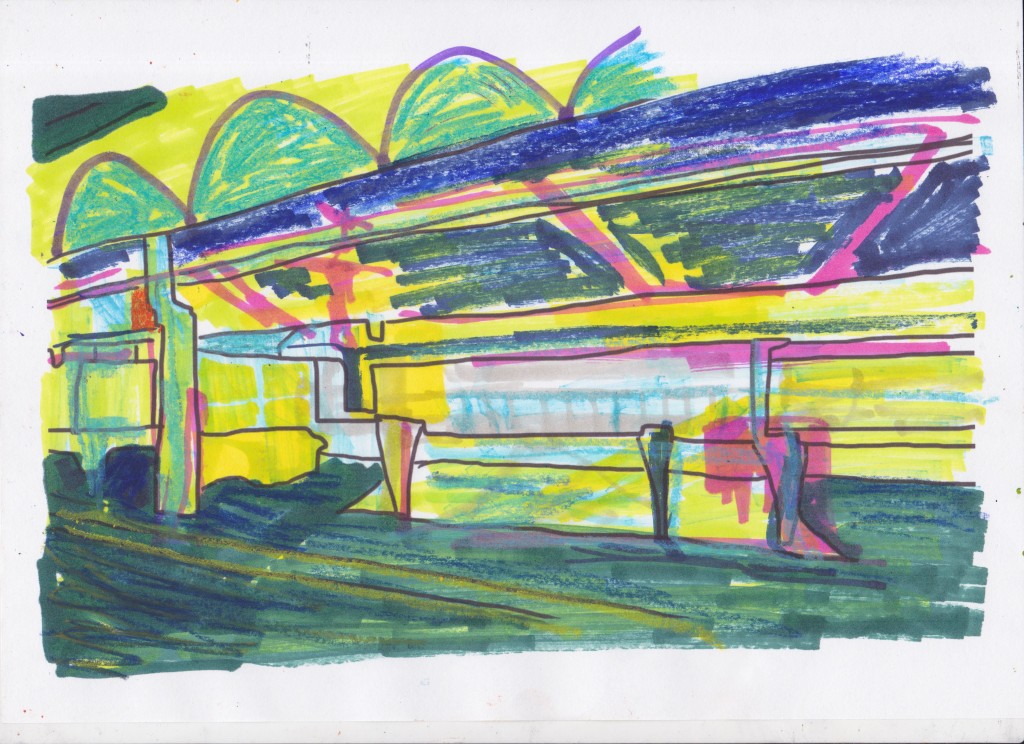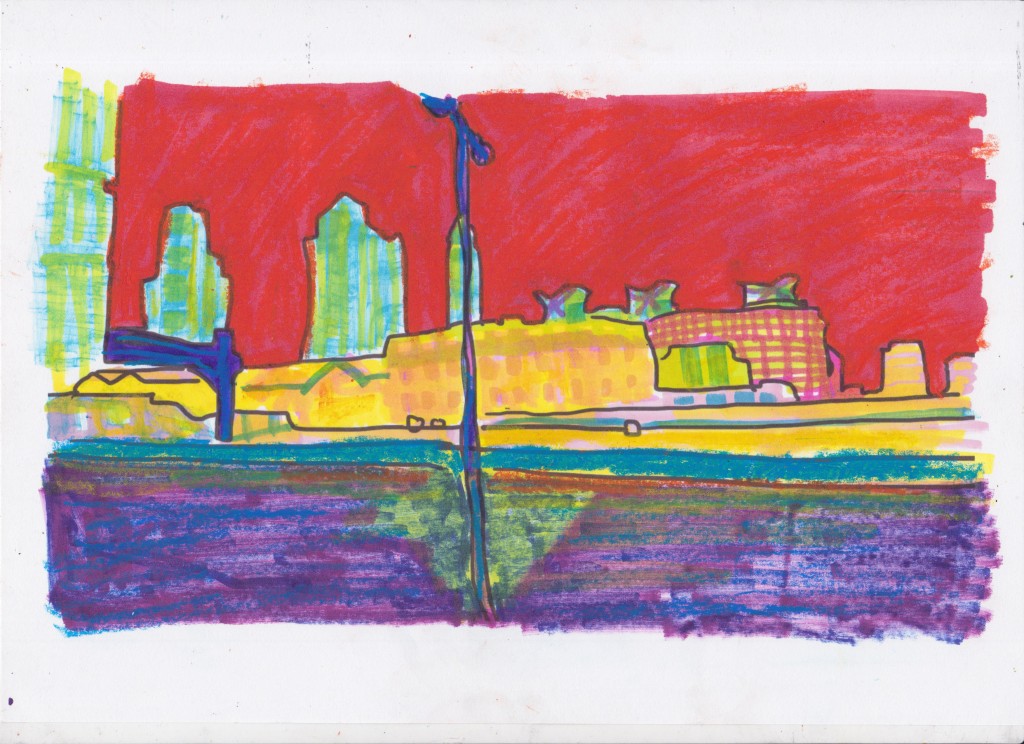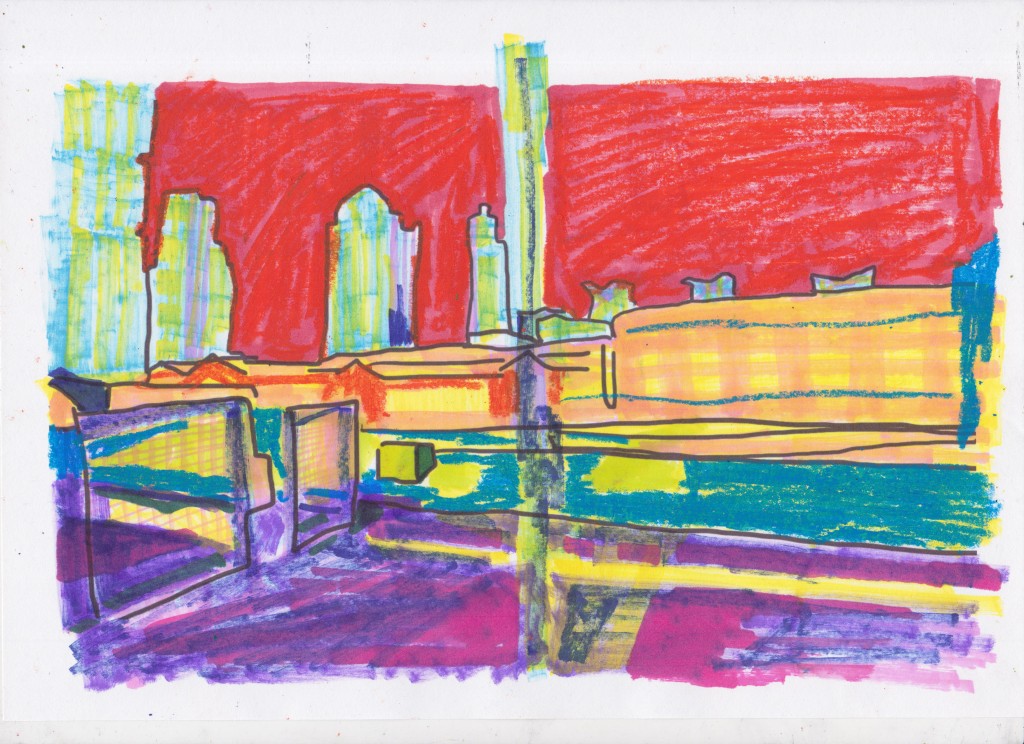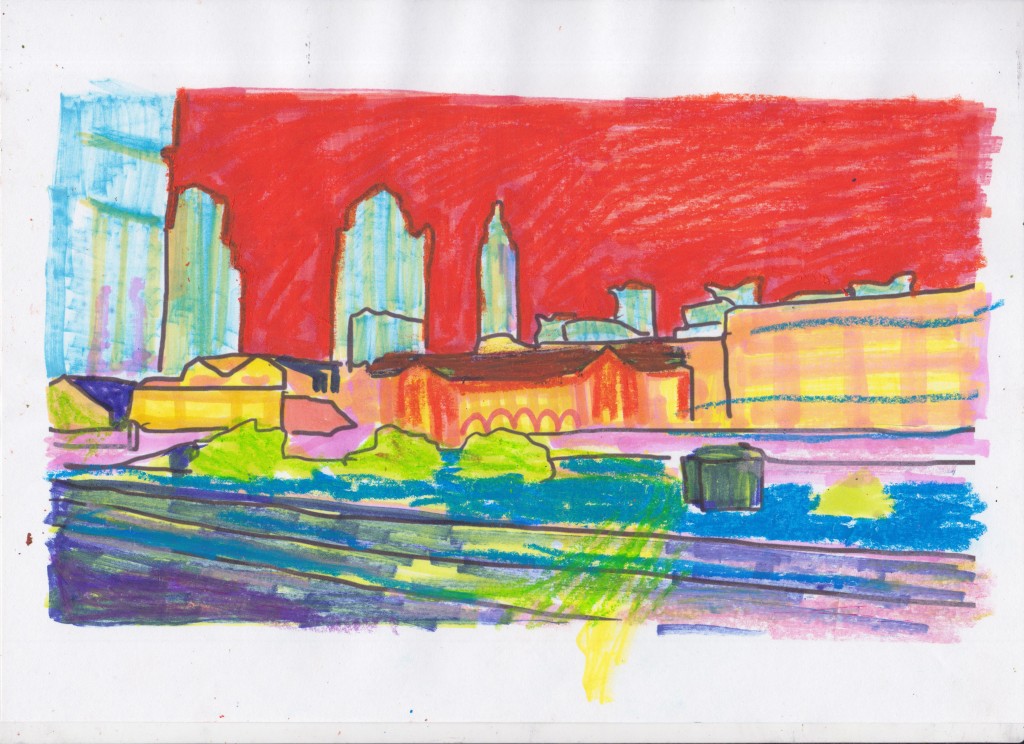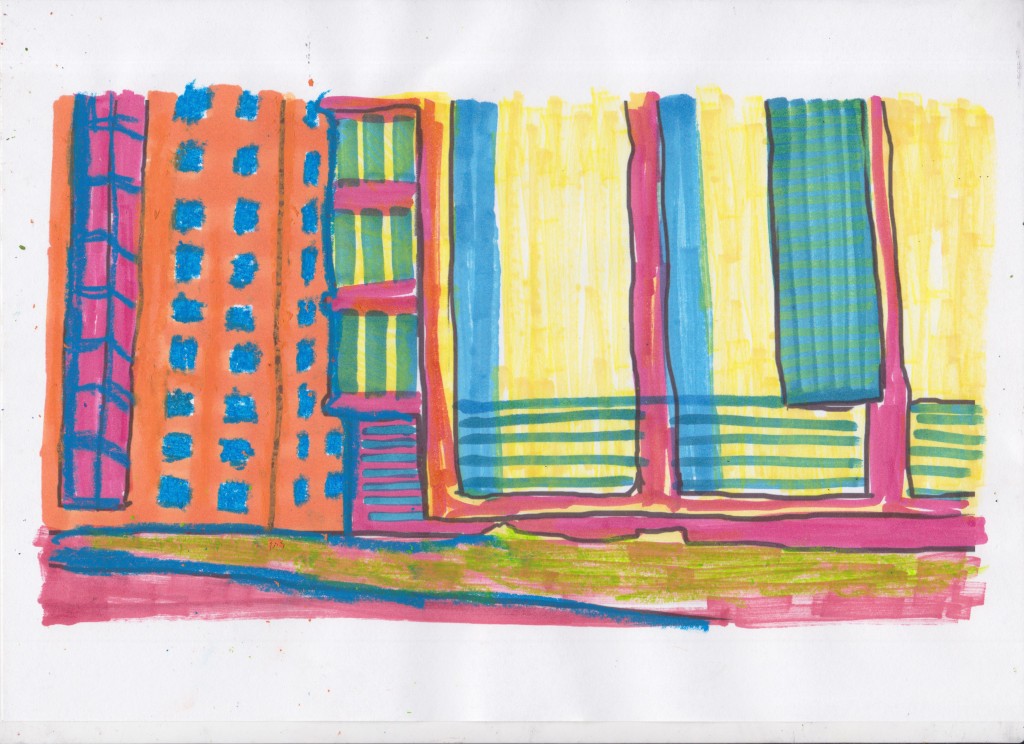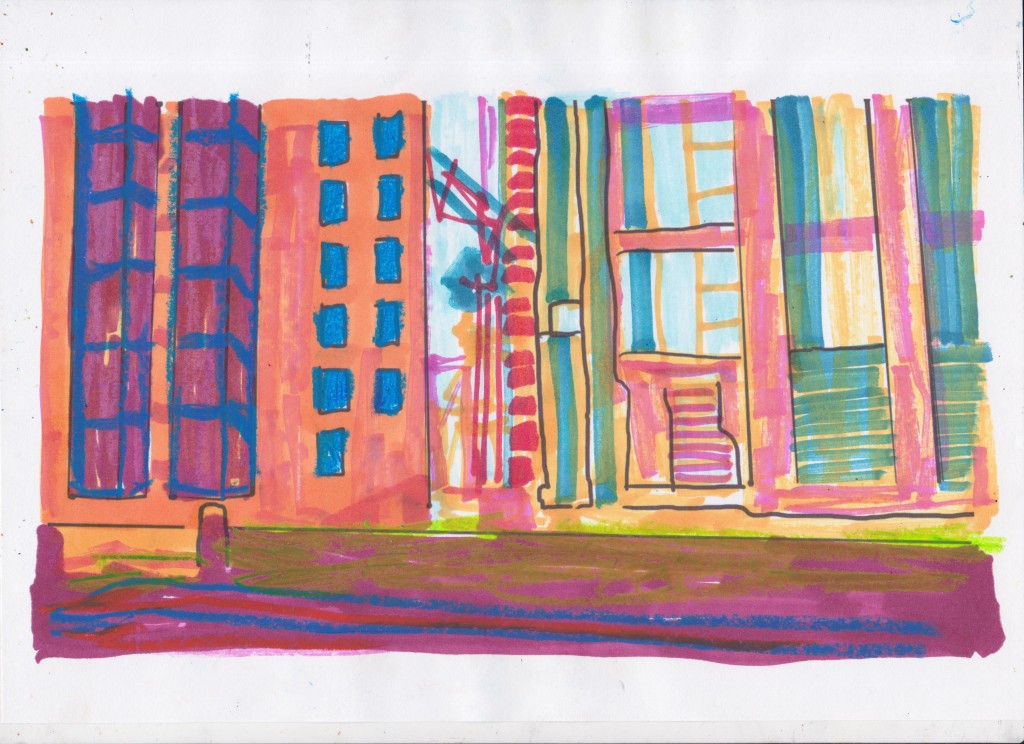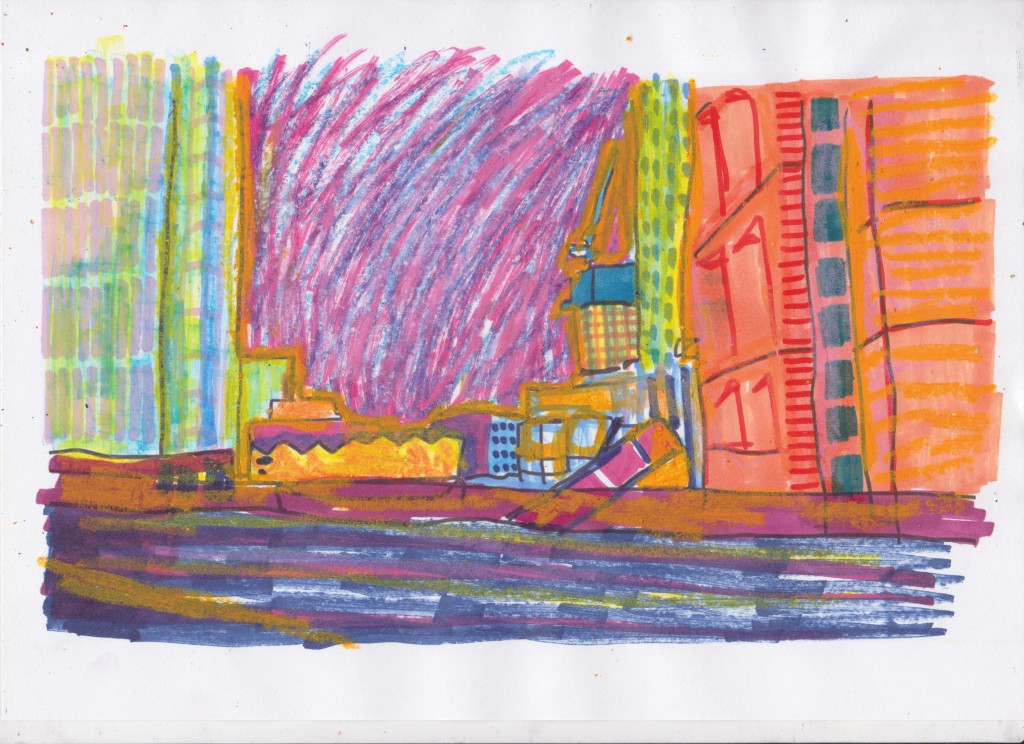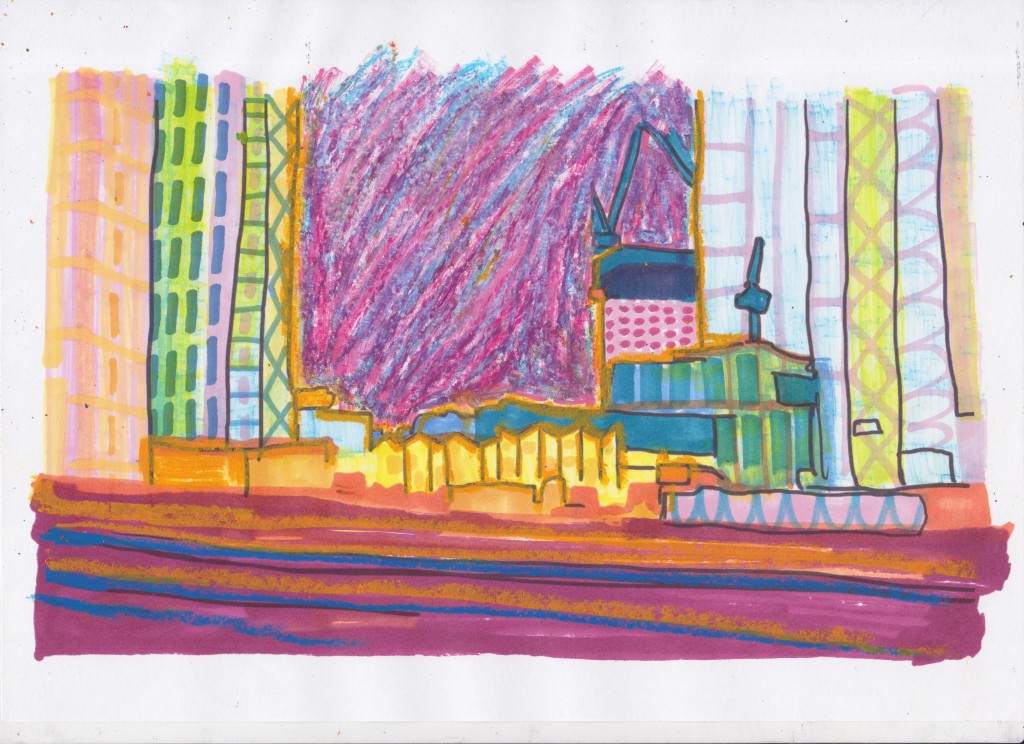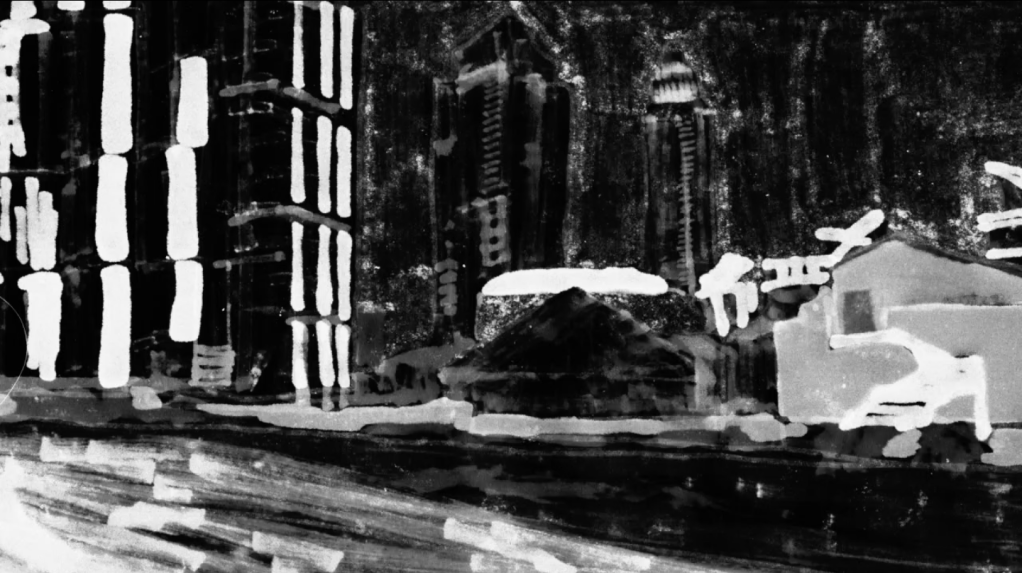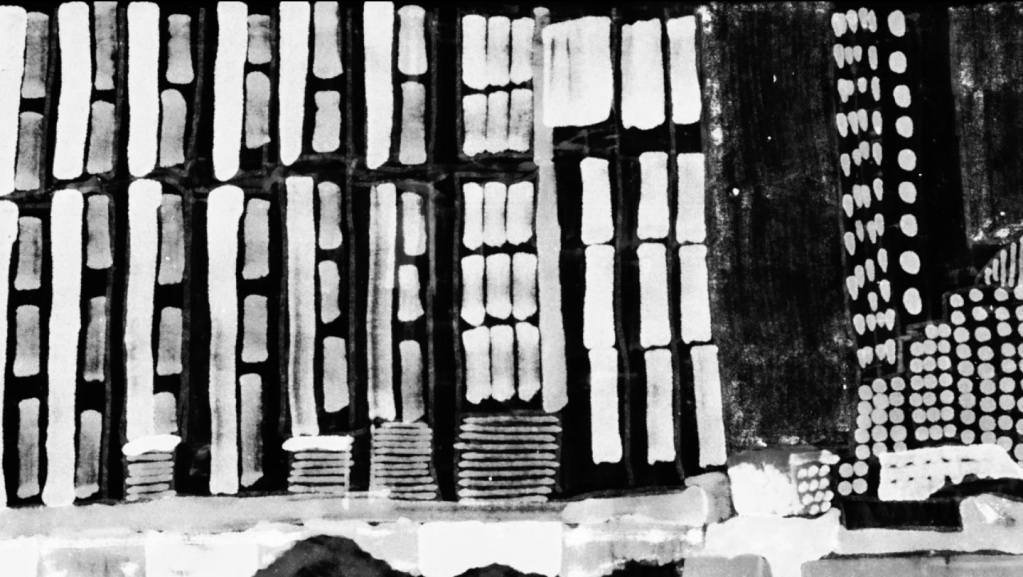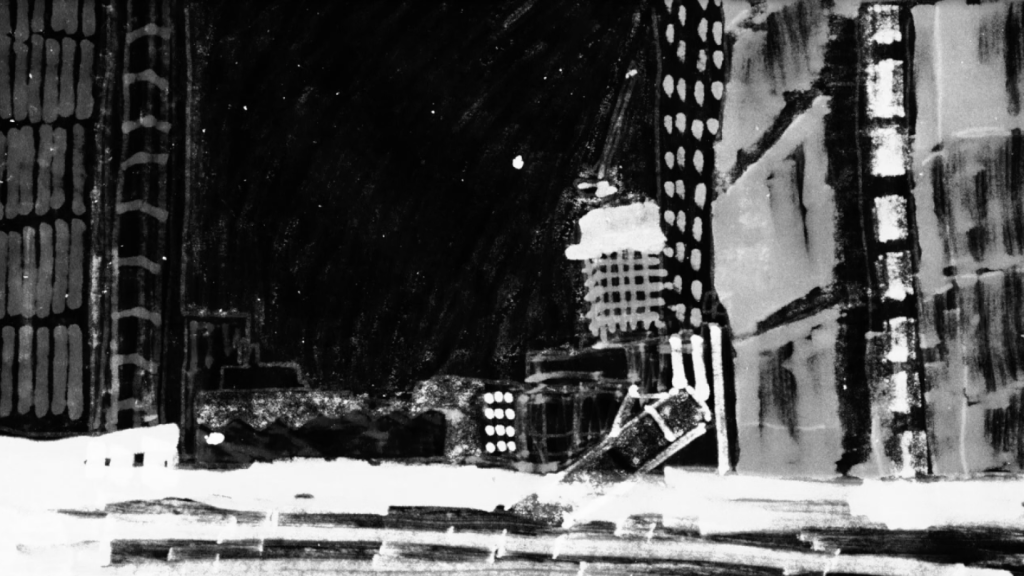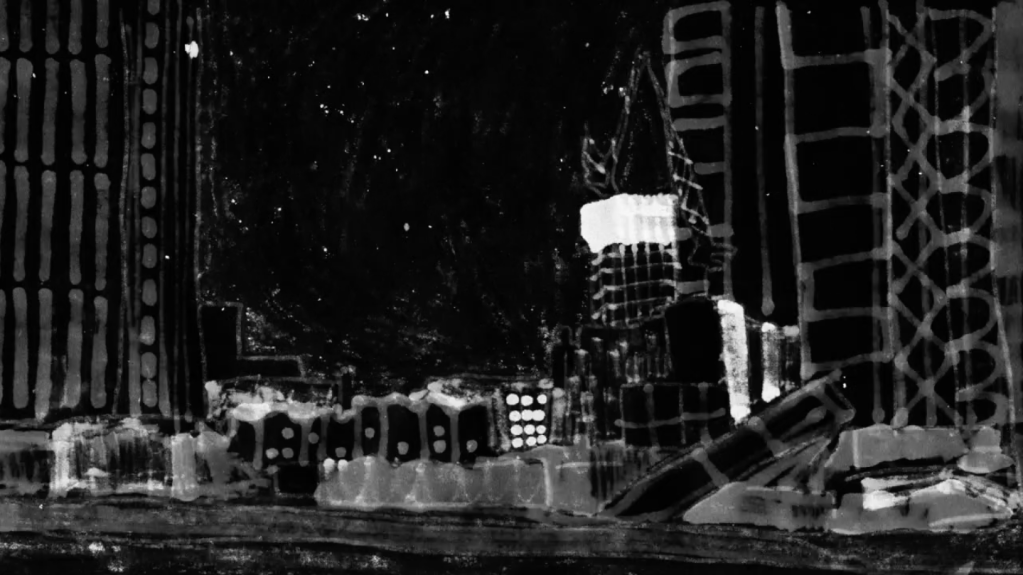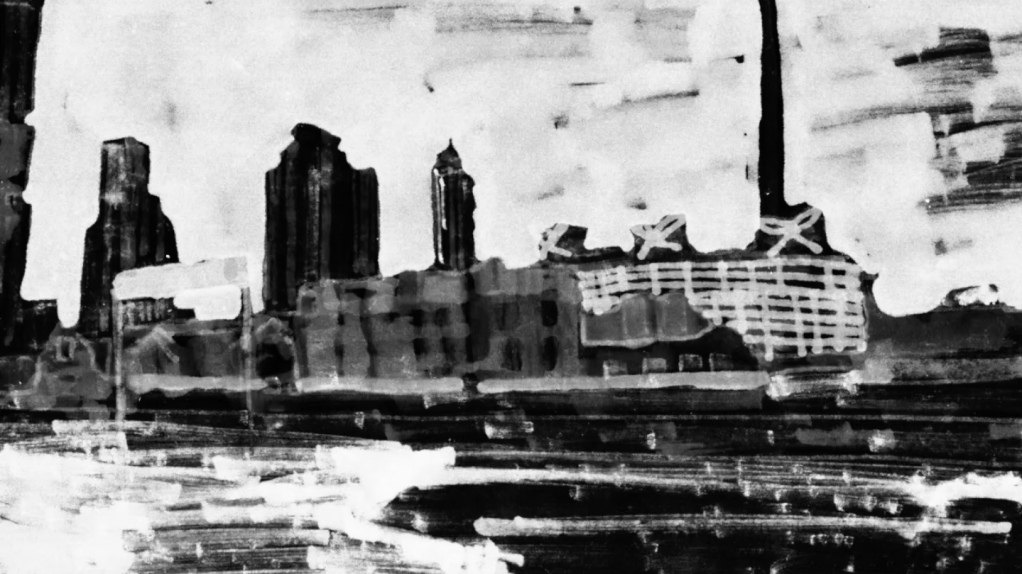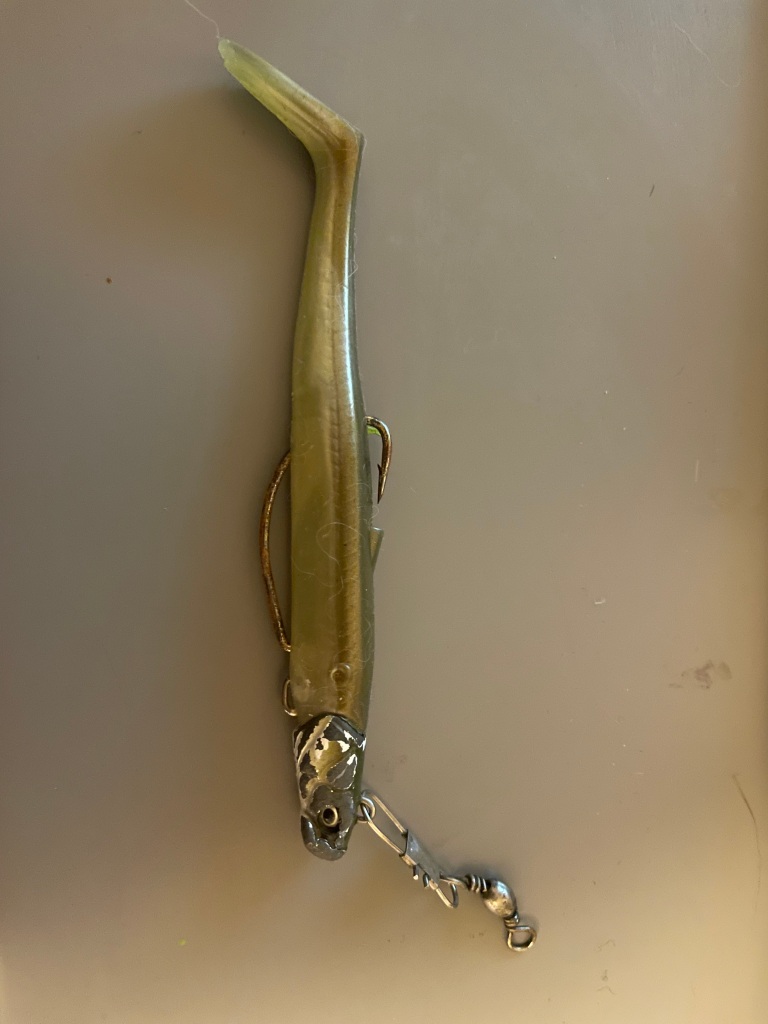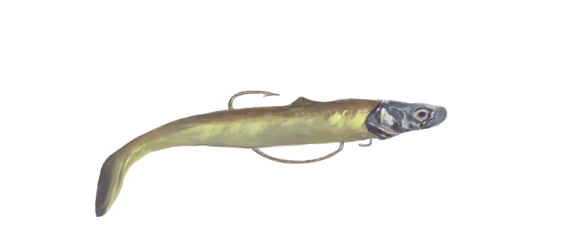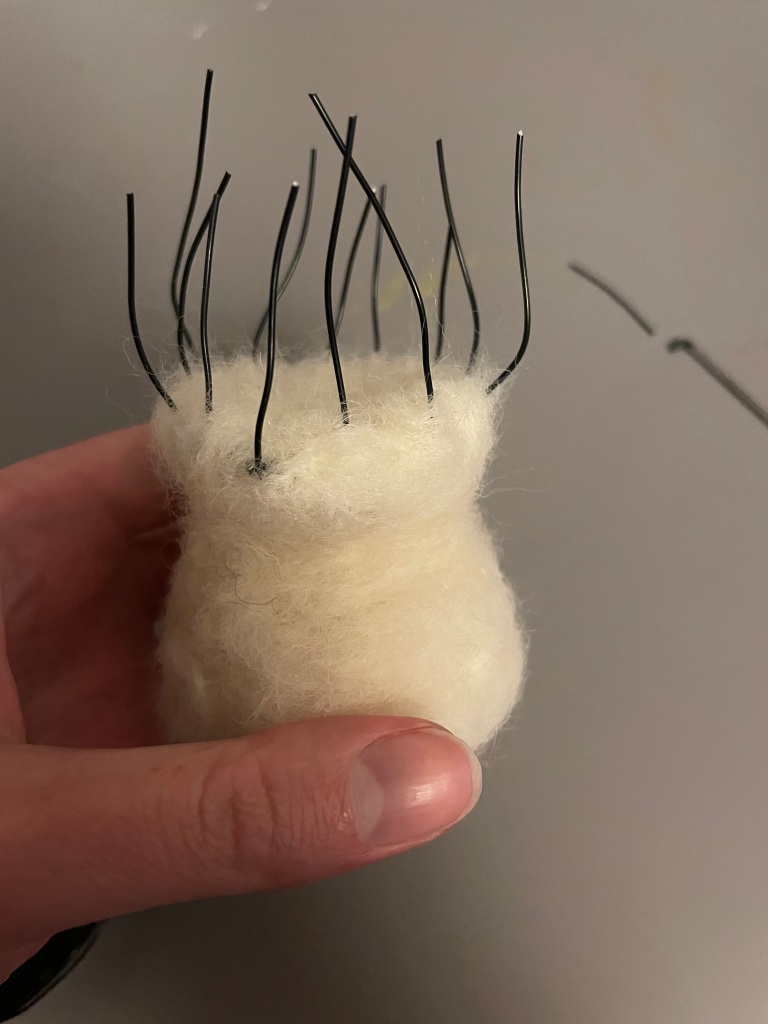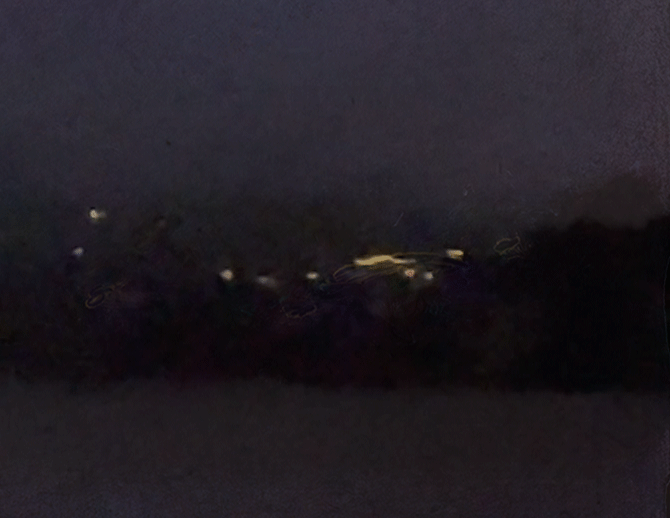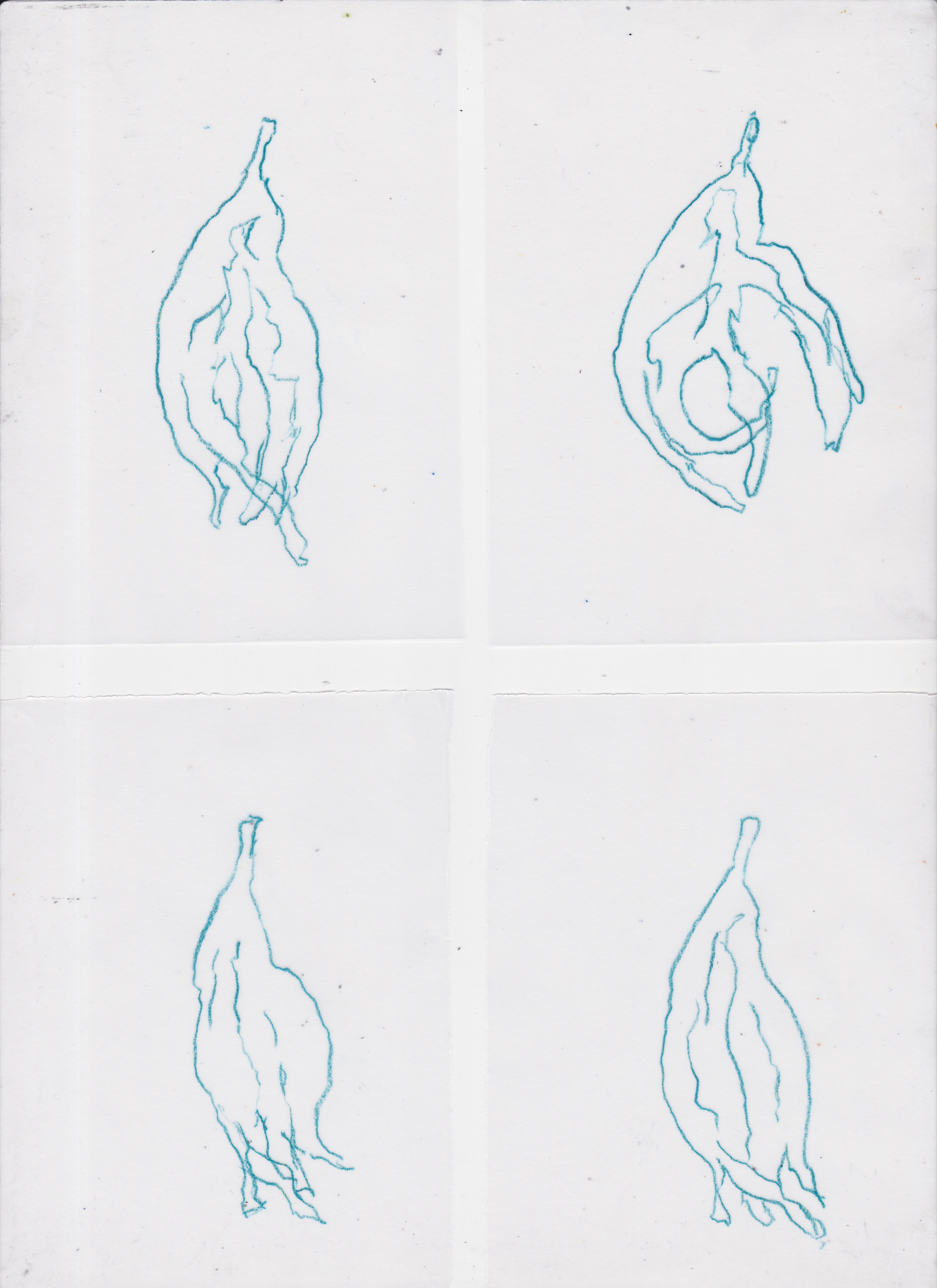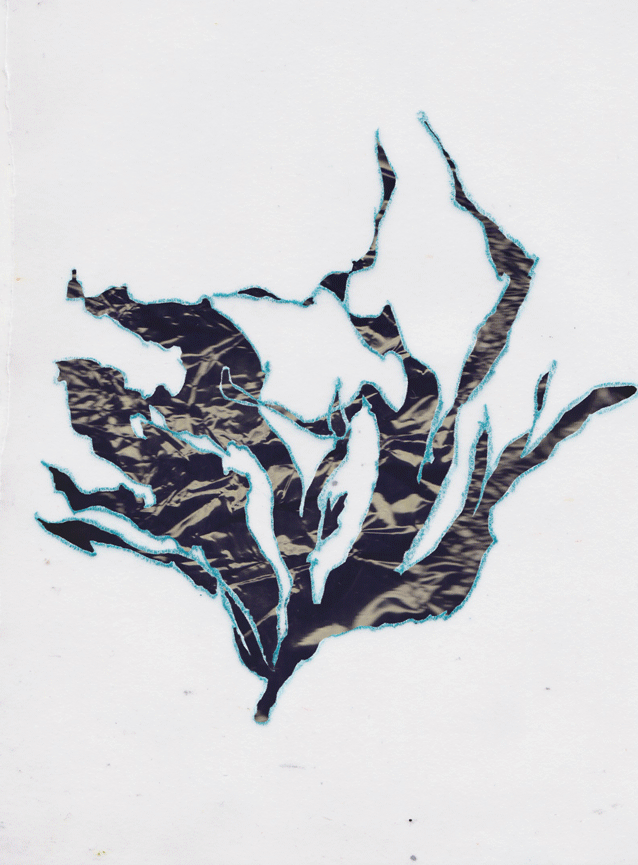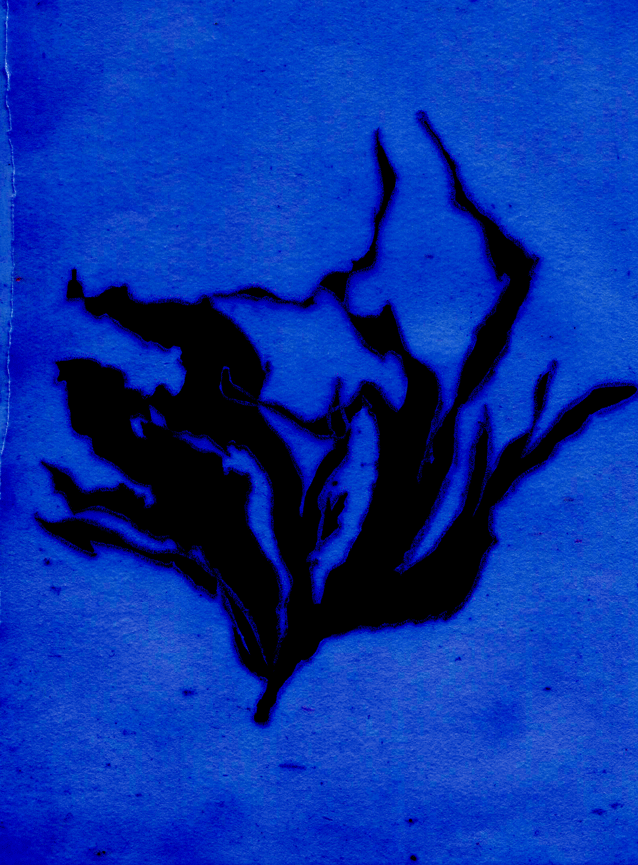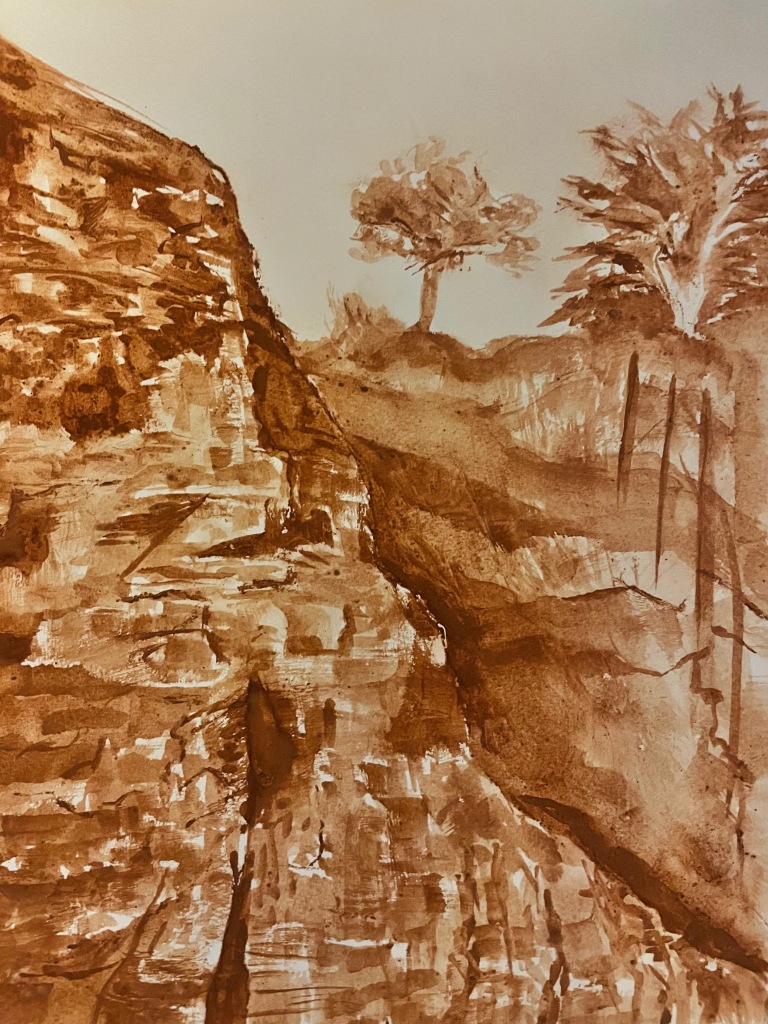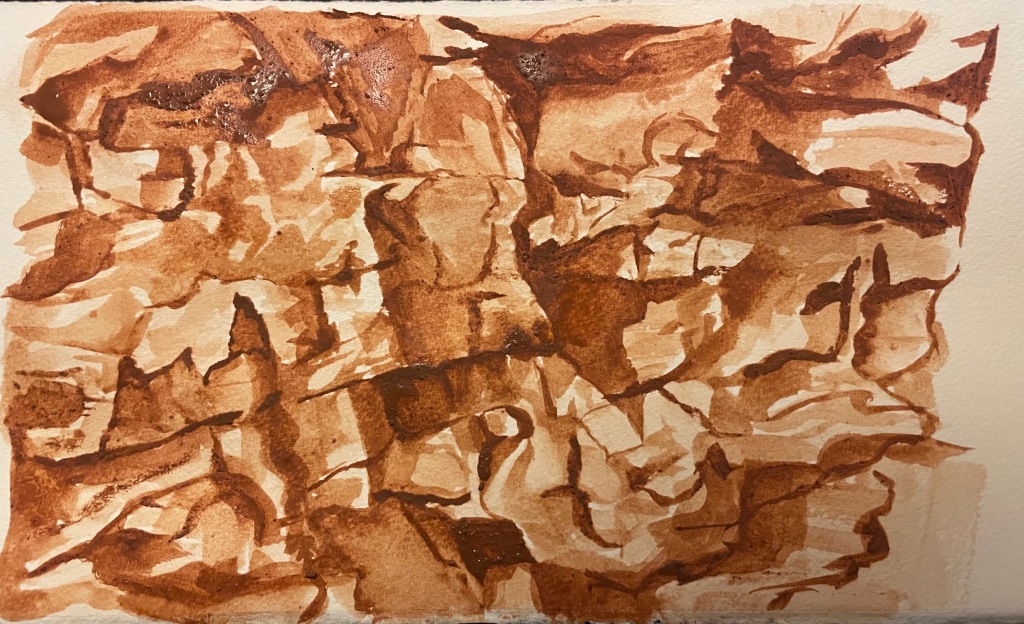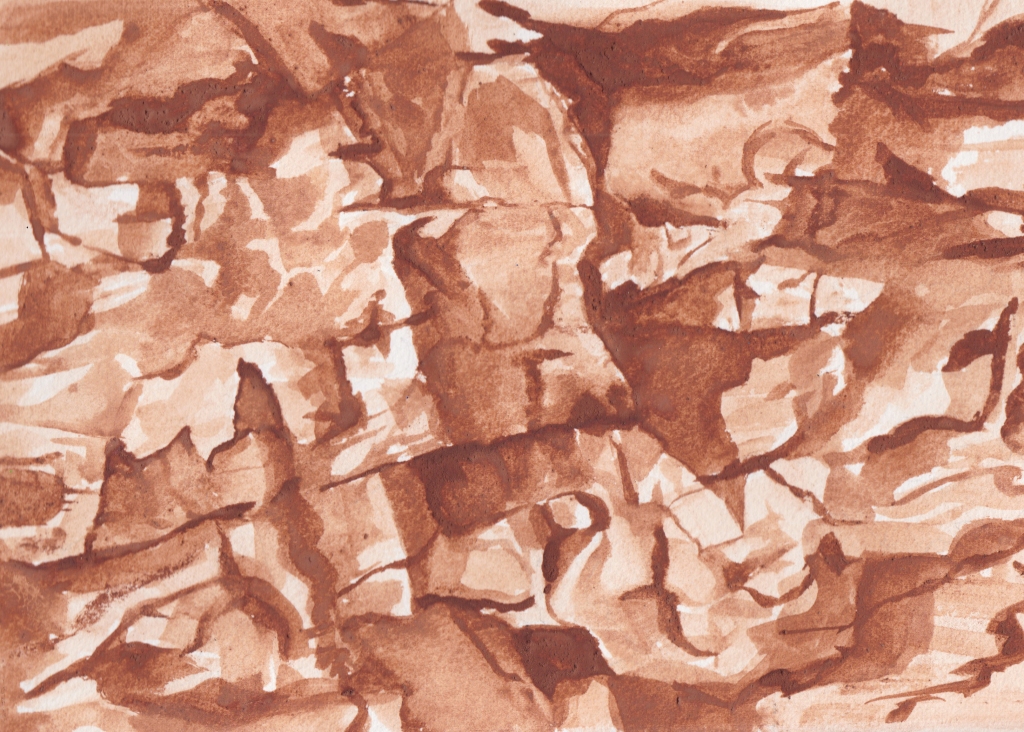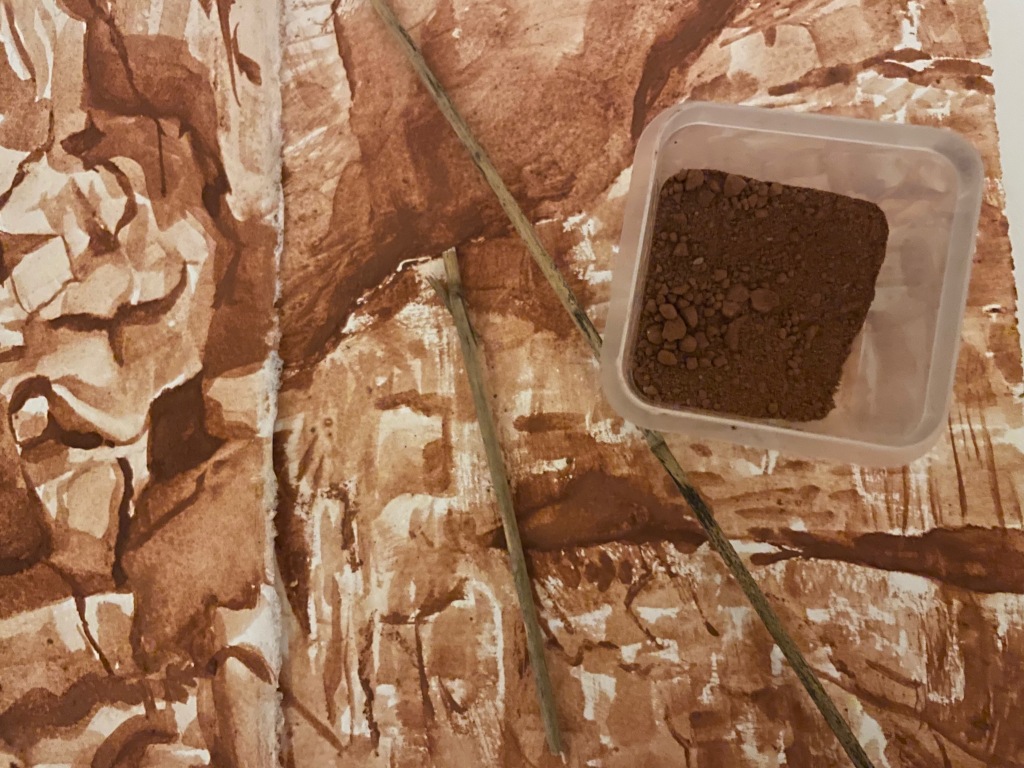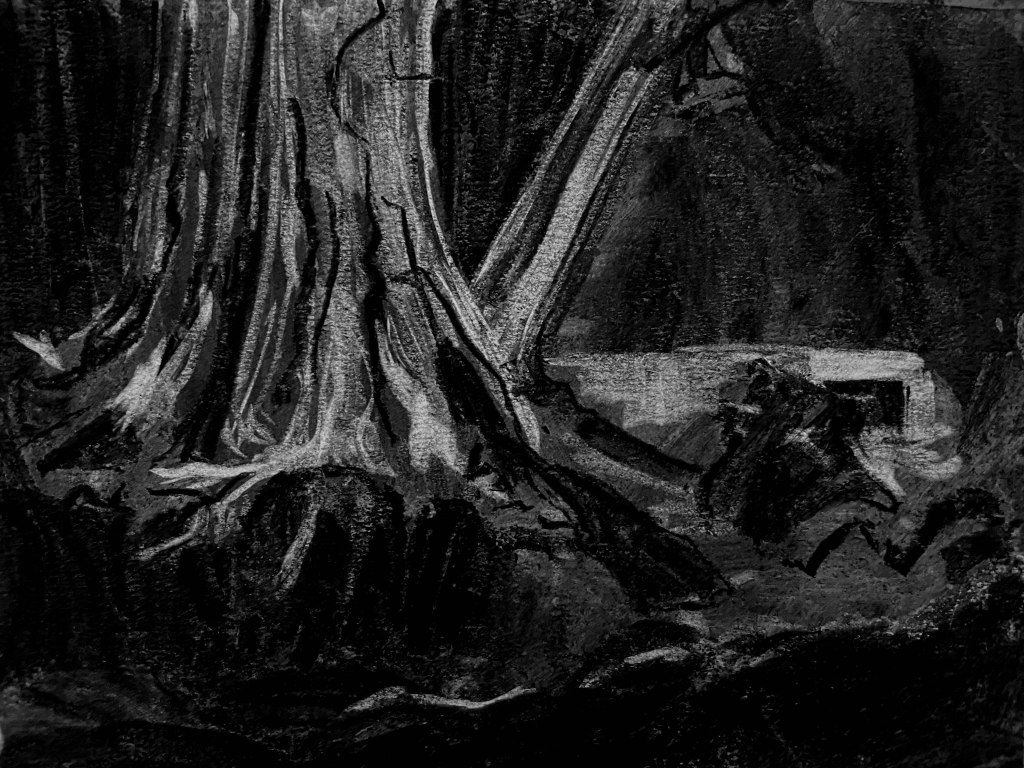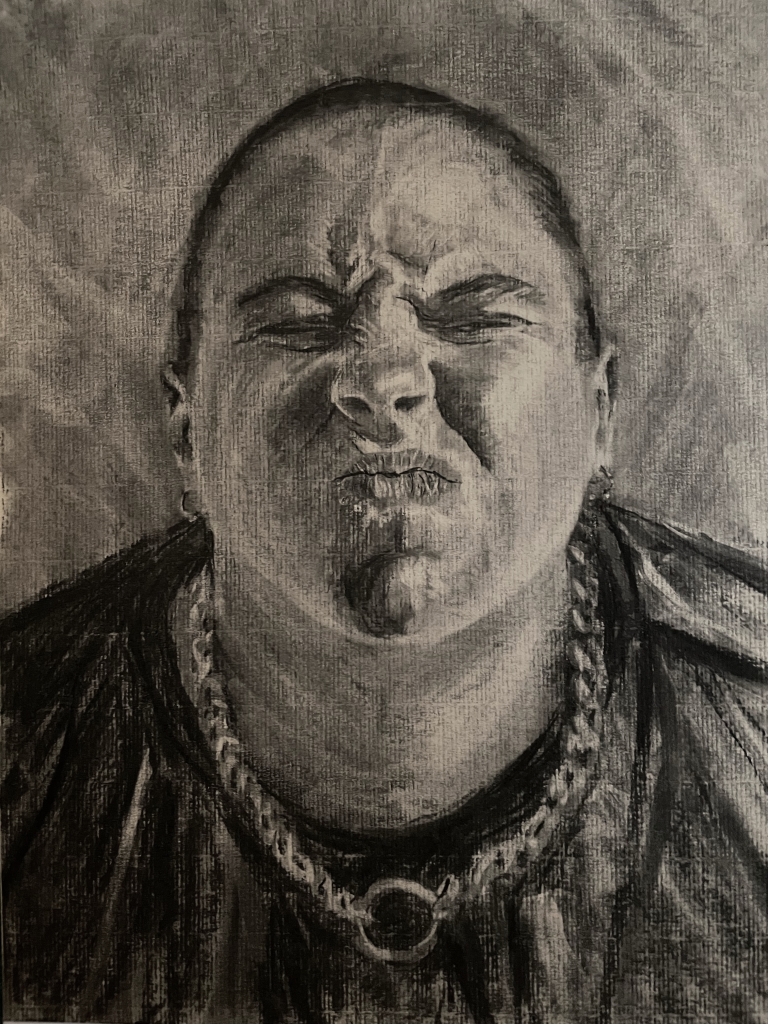After talking to my tutor, we decided it was a good idea to make my work so far for the Parallel Project into Assignment 5.
I borrowed William Kentridge’s process of creating an animation in charcoal from one sheet of paper, taking a photograph to make up each frame. I was very worried about doing this as the entire image is a lot to think about when animating, and how would I know that what I was producing was any good if I can’t replay it? My tutor reminded me that I had done something similar with my crow animation (see Parallel Project page), which gave me the confidence to accept the challenge of working with an entire scene at once. I really love the way Kentridge’s work does not hide his process, he can erase the charcoal but faint signs of what was there before are still present, e.g. a boy hopping across rocks (San Francisco Museum of Modern Art , 2010). This is a completely different approach than what I usually read and see, in for example Richard Williams’ Animators Survival Kit, there is an obsession with creating the “illusion of life” which is strict in its goal of getting the audience to forget that they are watching drawings. It was very freeing to discover that this is doesn’t have to be the case, and I decided that whatever I ended up drawing, I wasn’t going to try and hide that the images are only charcoal on paper. I later found the work of Daisy Jacobs, her film The Bigger Picture revels in how the characters are two-dimensional drawings and pairs them with real three-dimensional sets and props in order to exaggerate this (Jacobs, 2014), sometimes for comedic effect.
When it came to knowing what to draw, I didn’t know where to begin. Creating a storyboard was the opposite of what I wanted to do, I had a feeling it would be stifling and it would minimise the chances of having happy accidents, or going off in a direction I hadn’t expected. I found the article recommended by my tutor on Animism by Grace Ndiritu very interesting, and it helped give me starting place for my drawings. Ndiritu explains her realisation that “[she] was created out of the exact same stuff as…the tree blowing outside the window” (Ndiritu, 2021) which made me wonder whether I could try and mentally inhabit the river, and draw what the river feels/thinks. In my research I had found that last year, raw sewage was being released into my local river continuously for over 40 days (even more, depending on how many sewers are taken into account), so over 1/12 of the year. I also discovered via the Rivers Trust that even treated sewage is harmful to the river, so even “good behaviour” is poisoning the water (The Rivers Trust, 2022). I started my drawing/animation by trying to imagine the river as an alive being, responding to being continuously poisoned. She would be angry, wanting revenge, but then this might give way to feeling powerless. I started the drawing with this in mind and just let it develop naturally.
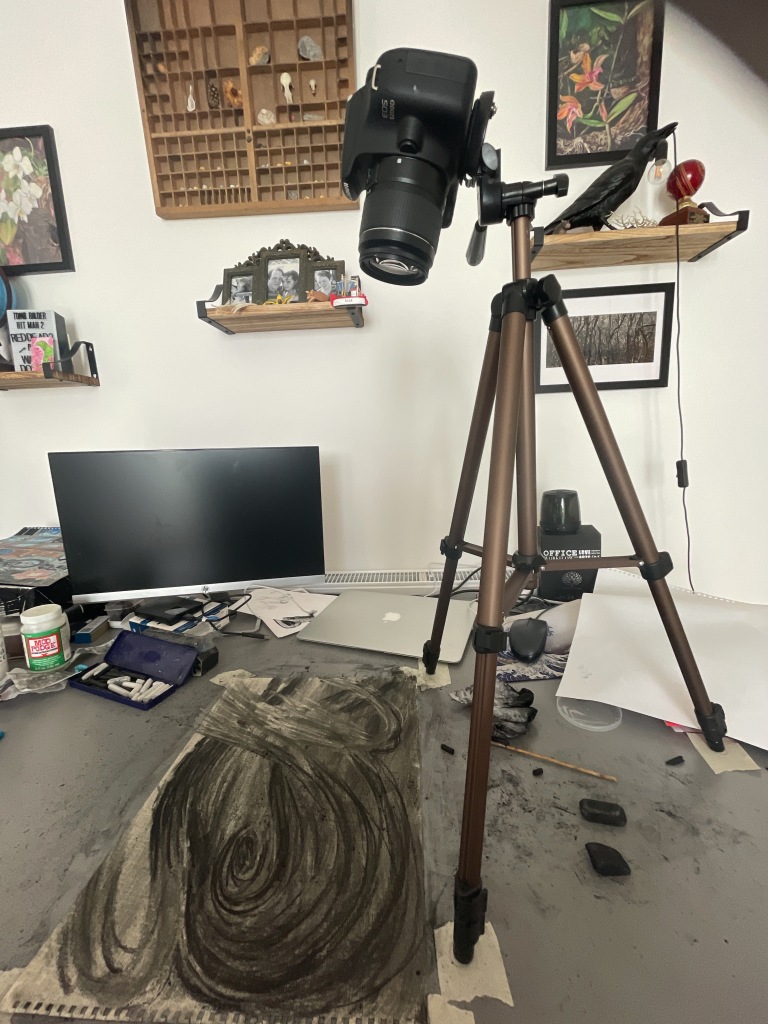
Towards the end of this drawing session, I had accumulated a lot of charcoal dust, which I began to arrange and sculpt into shapes. Quickly running out of camera battery, I added some final sketches thinking about the the pollution of the water. I really enjoyed this way of drawing, once the drawing was gone, that’s it, it was gone, which is great for someone like me who ums and ahs over everything – I just had to accept that I couldn’t go back and fiddle with bits of the drawing. I also enjoyed just going at the page with a solid eraser, which was suggested by my tutor, and not a tool that I regularly use. It was interesting to be able to draw by erasing, usually I use a putty rubber and that doesn’t tend to feel like drawing, more like fiddling.

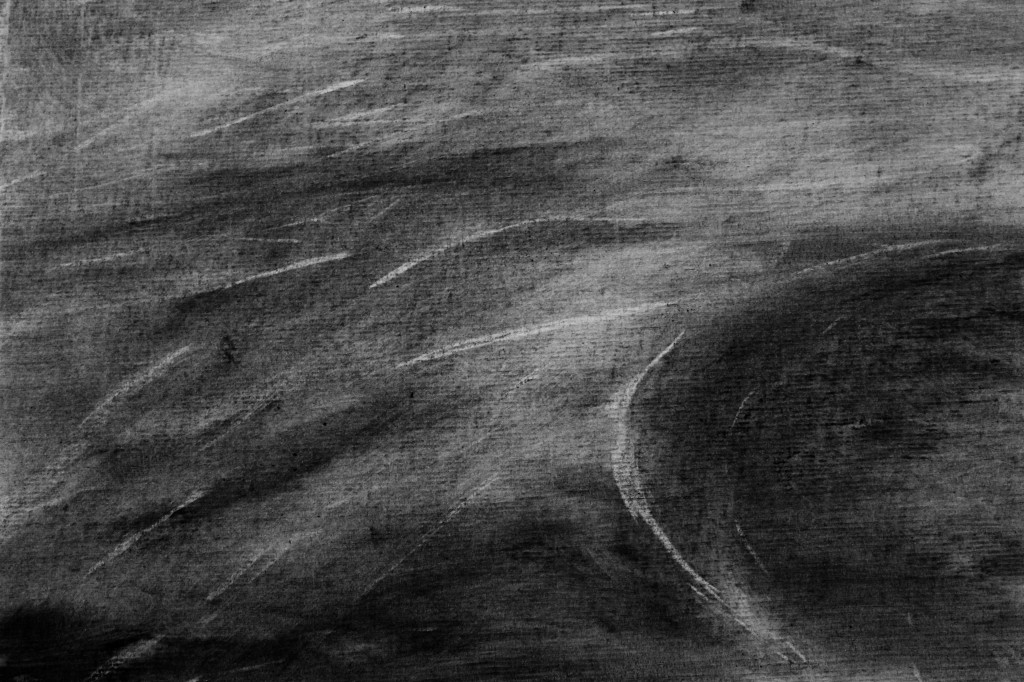
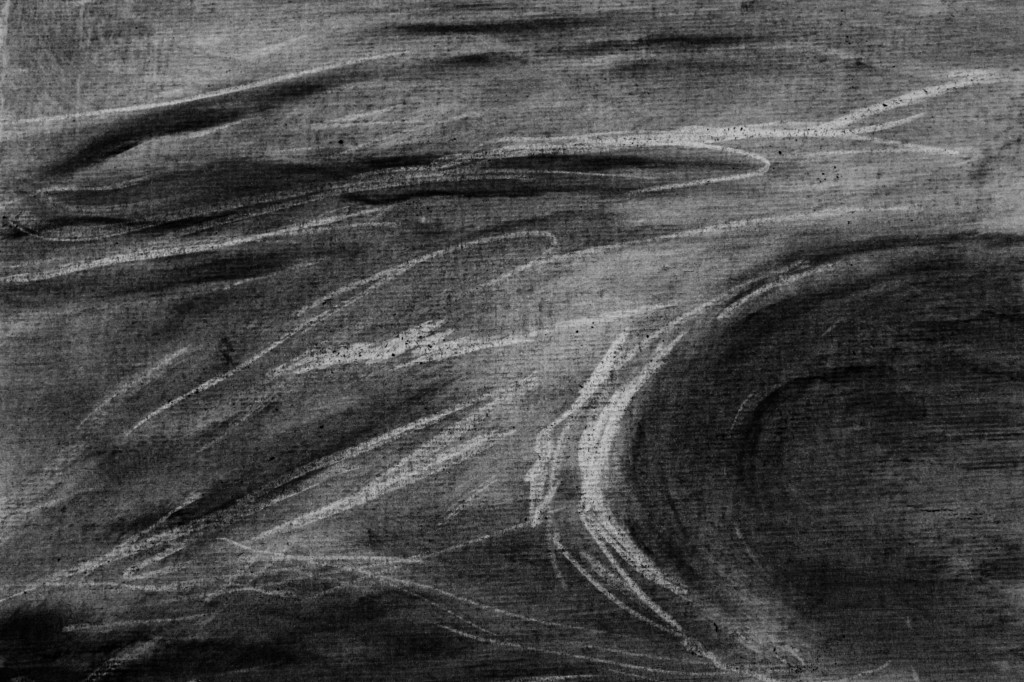
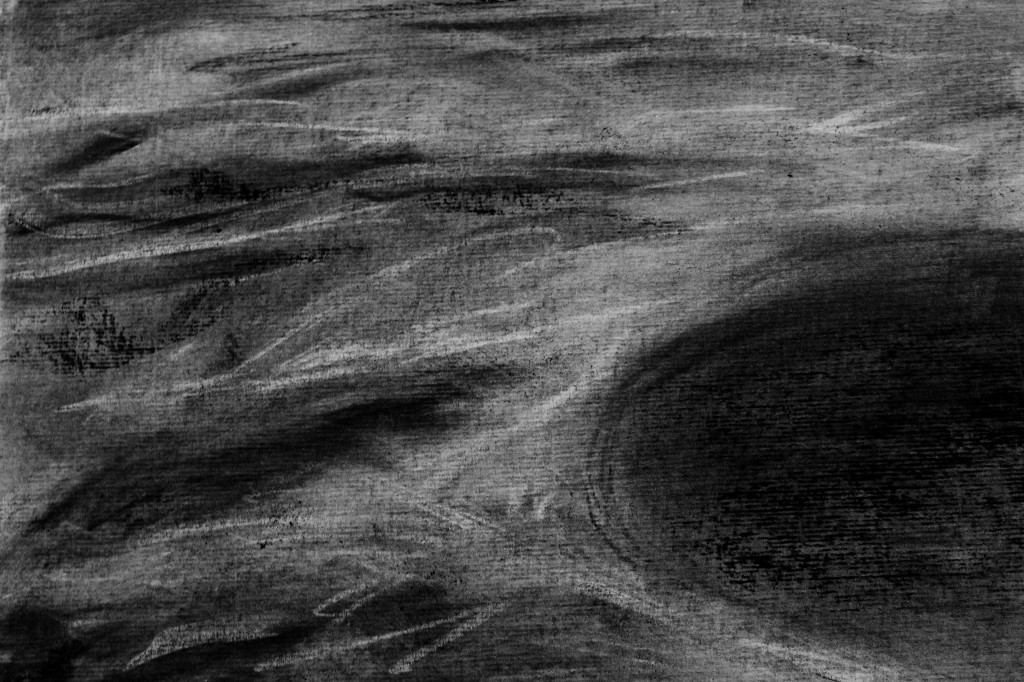





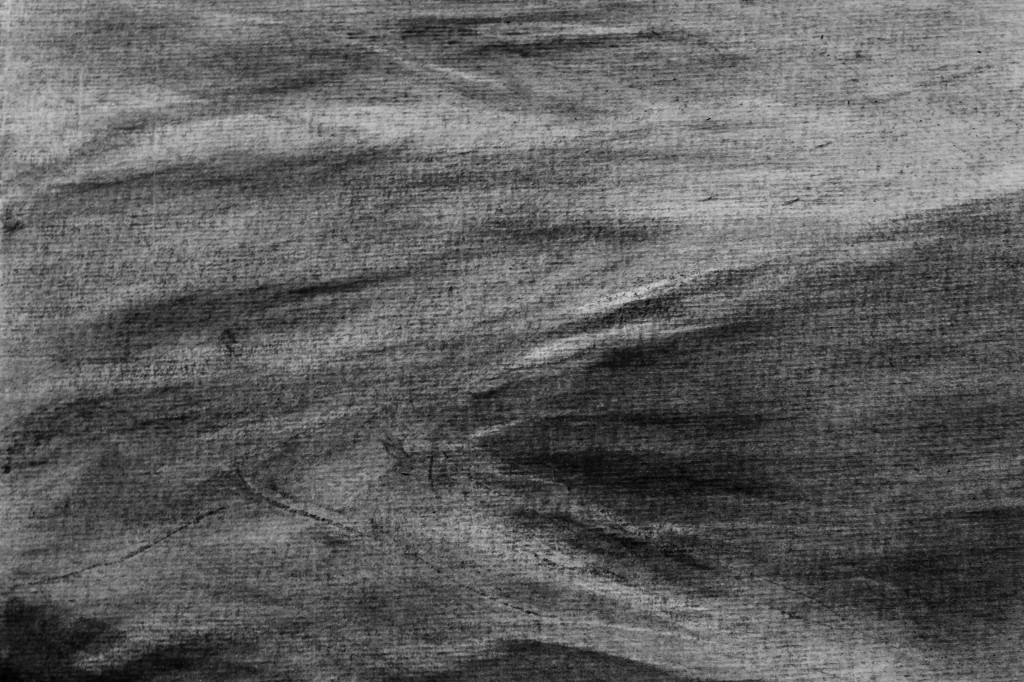
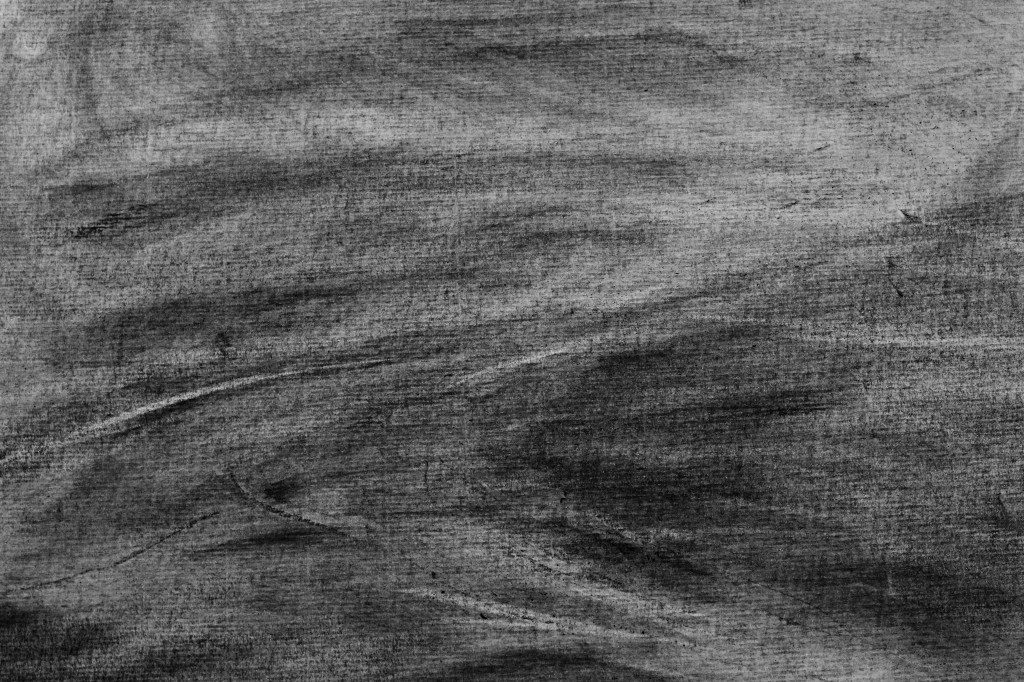

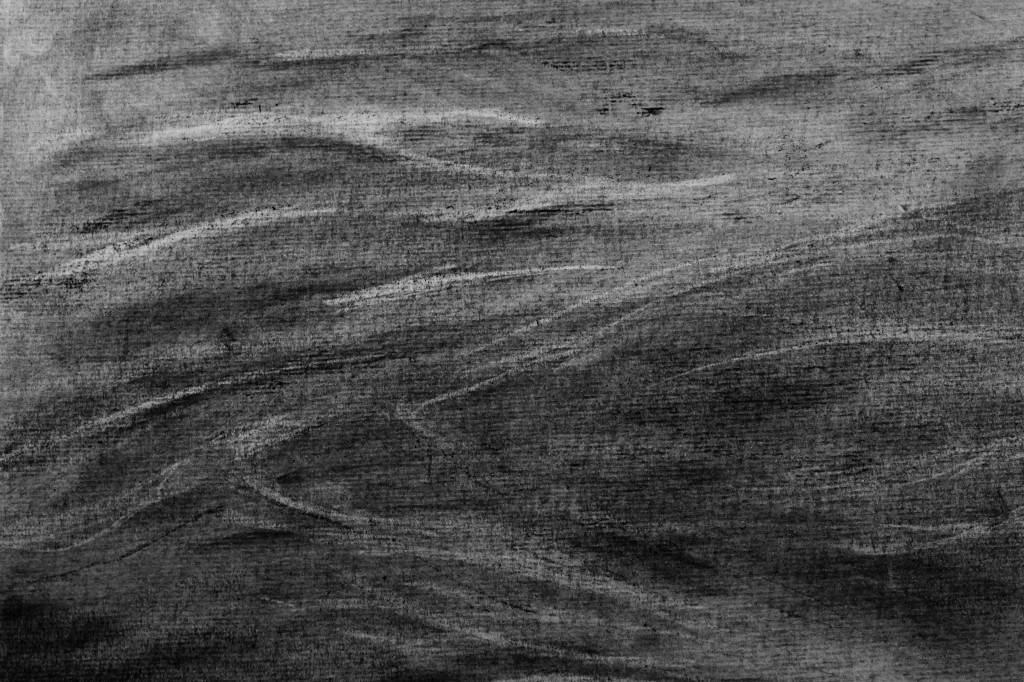





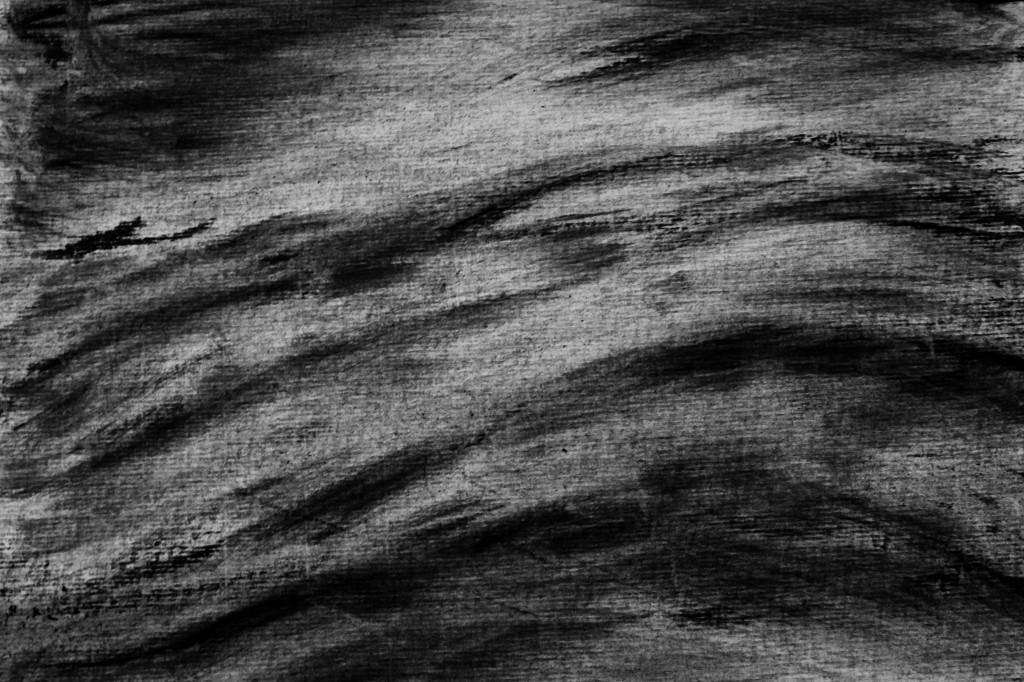



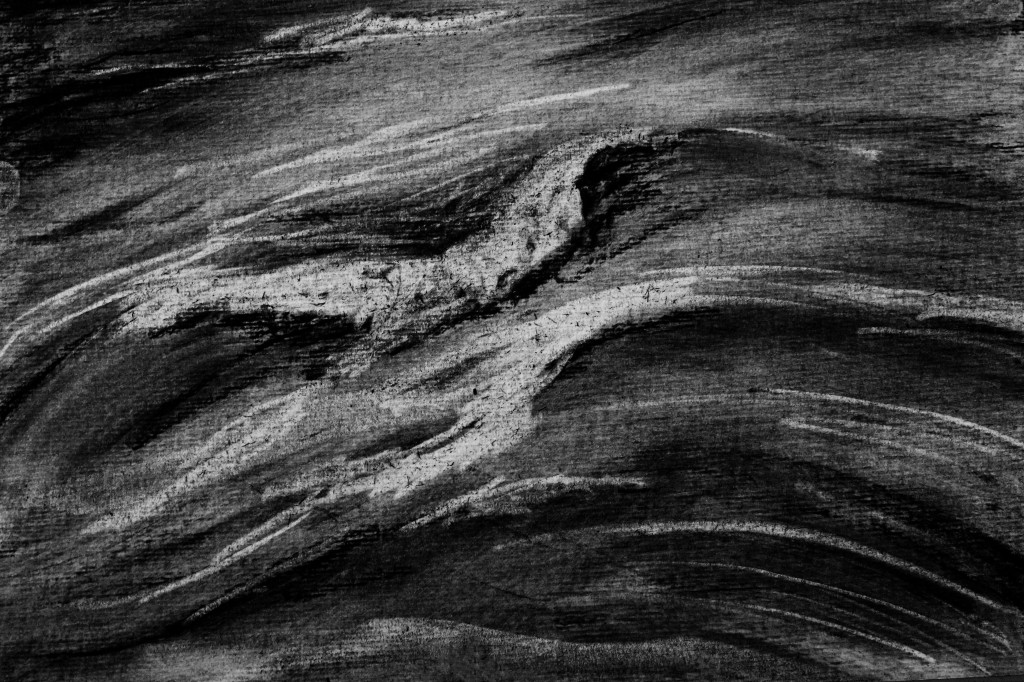
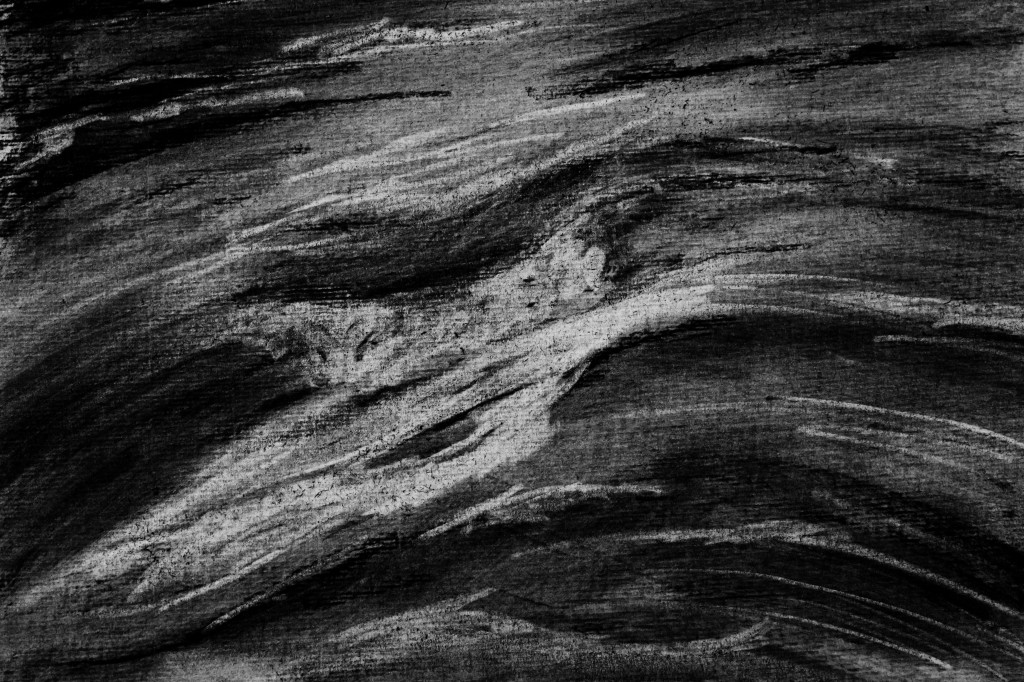



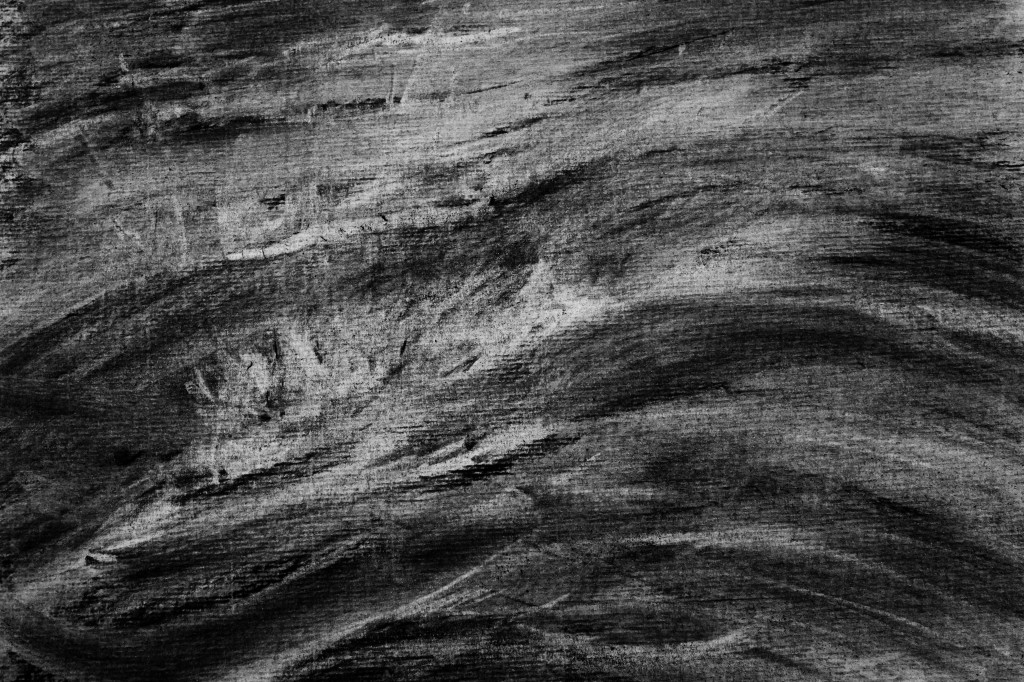

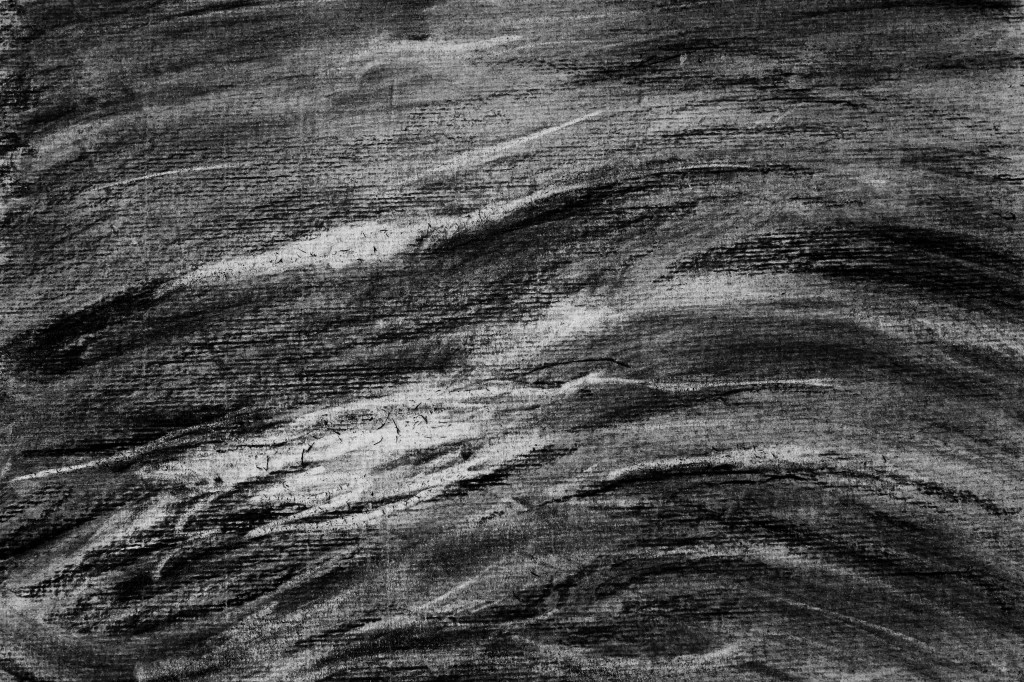
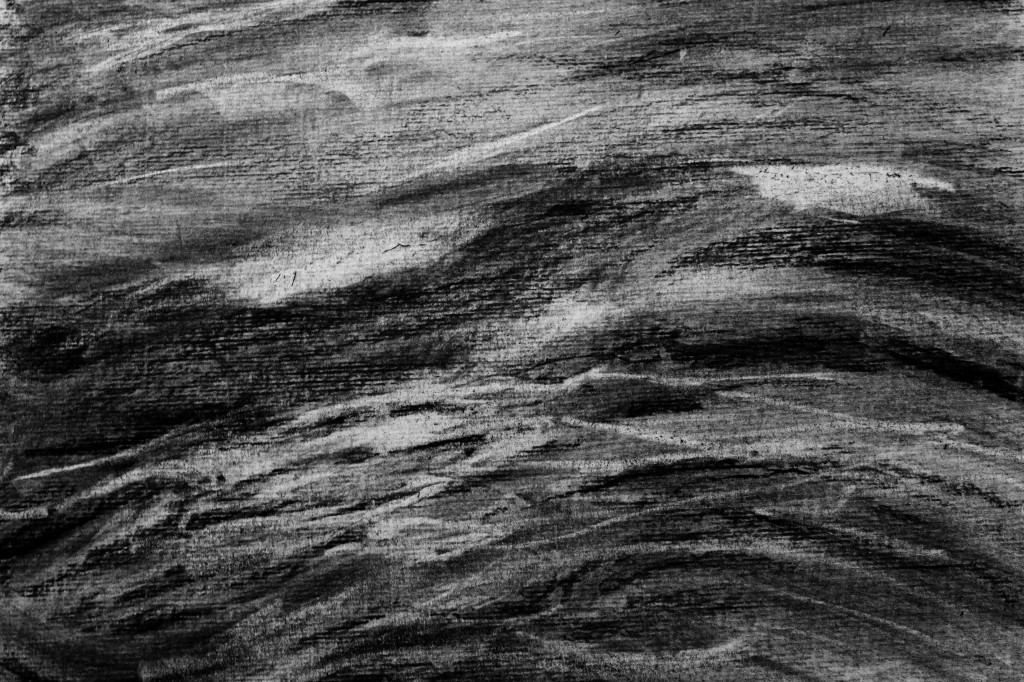

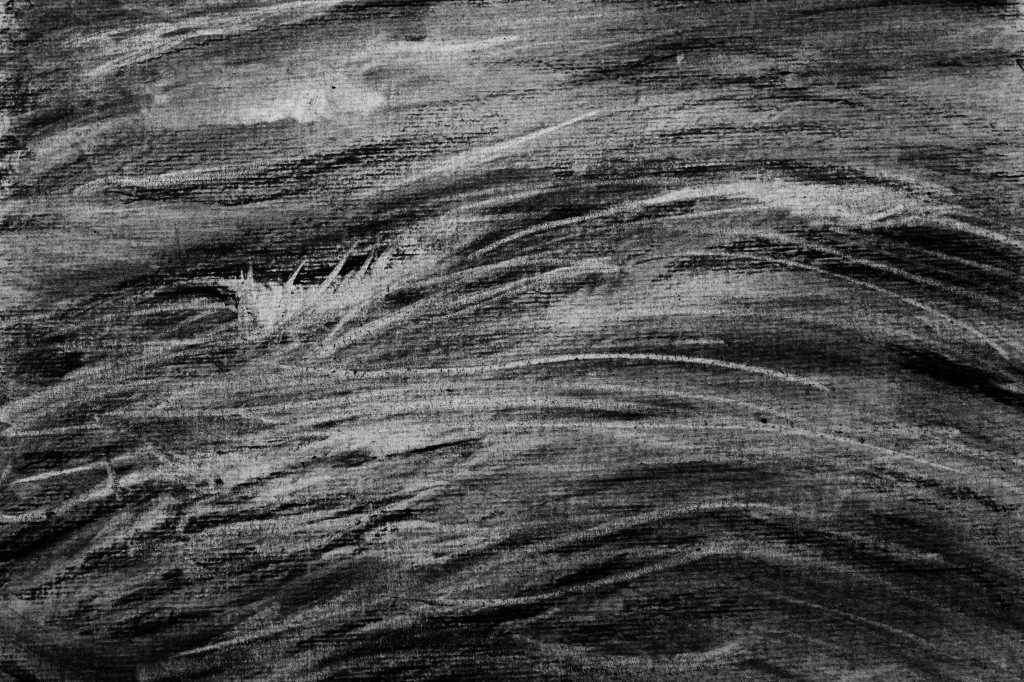
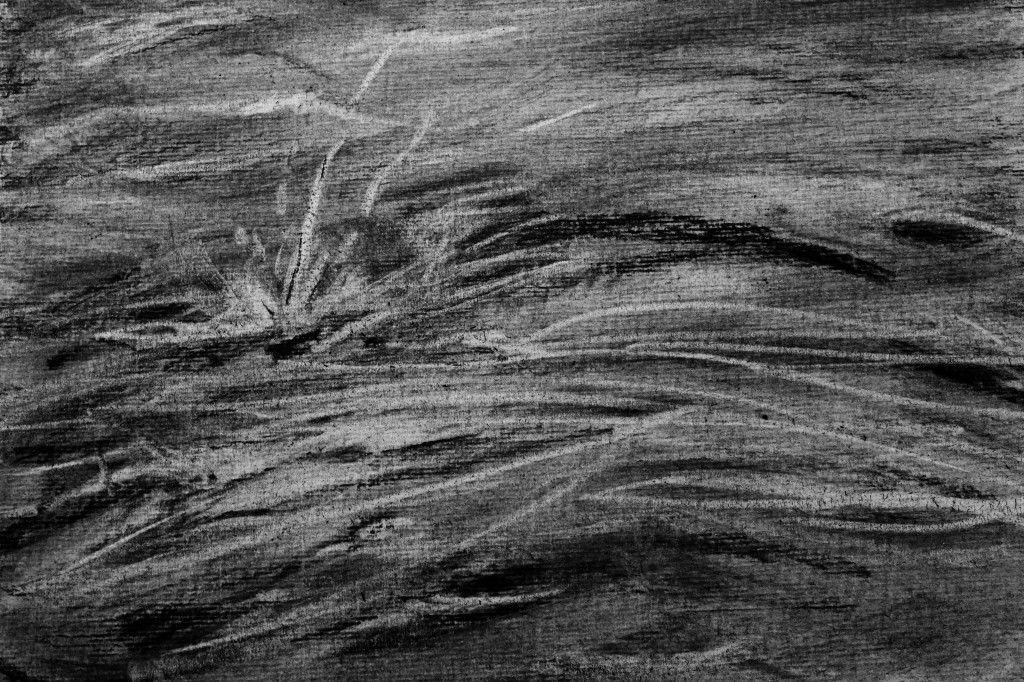


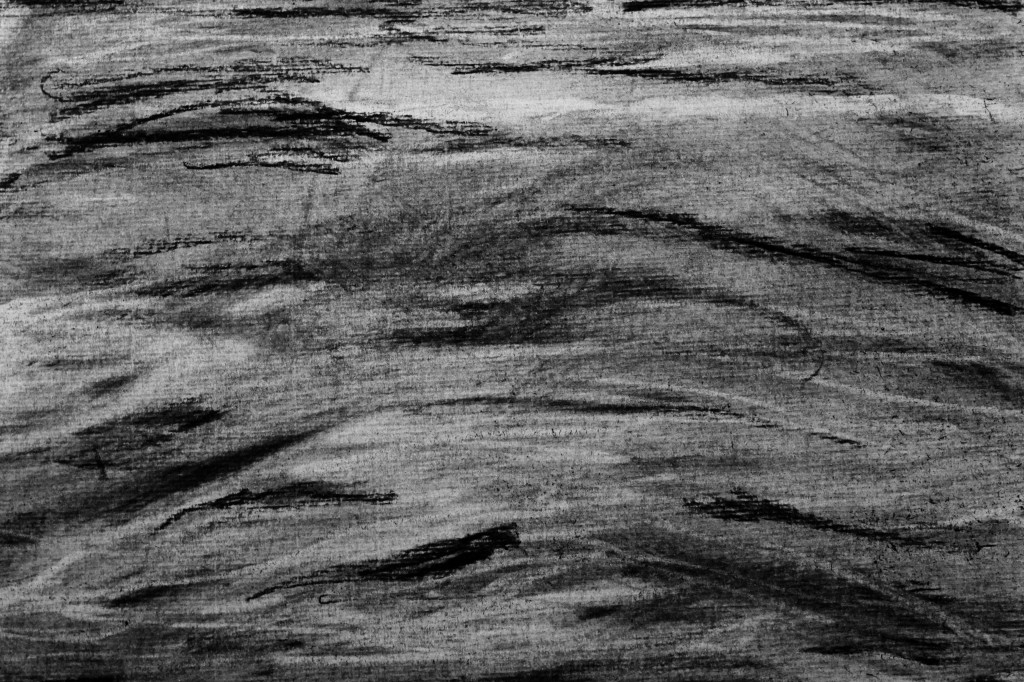
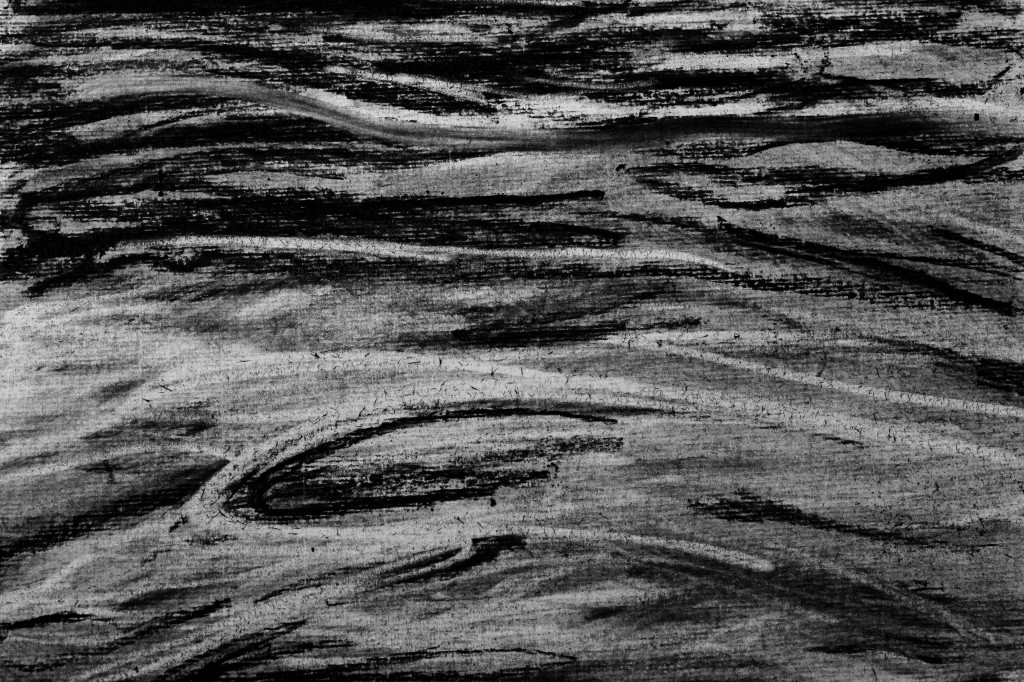


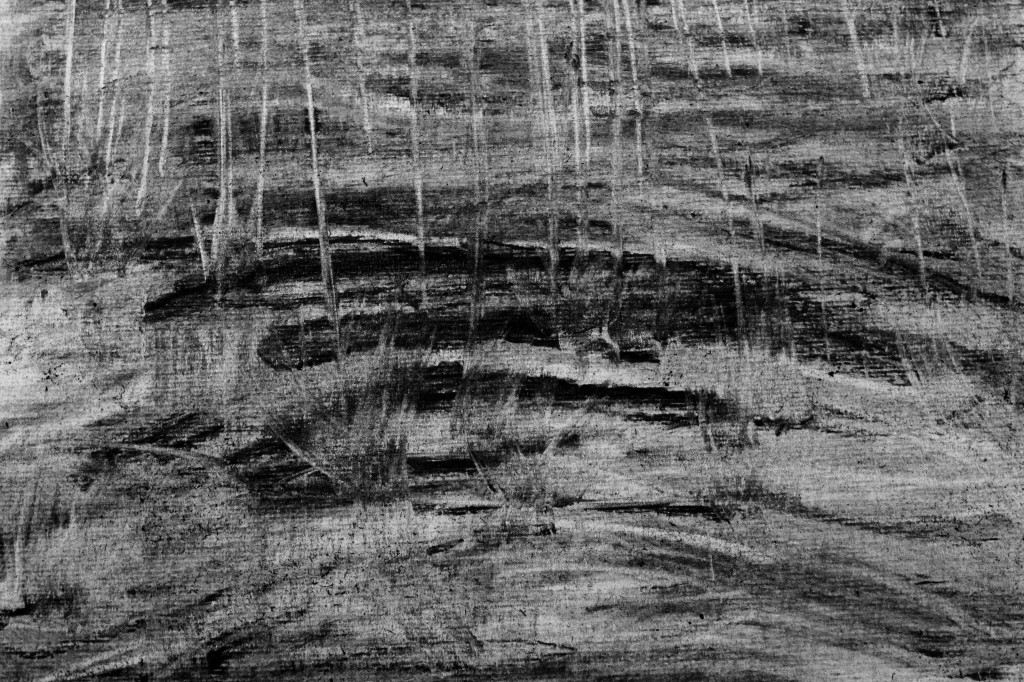











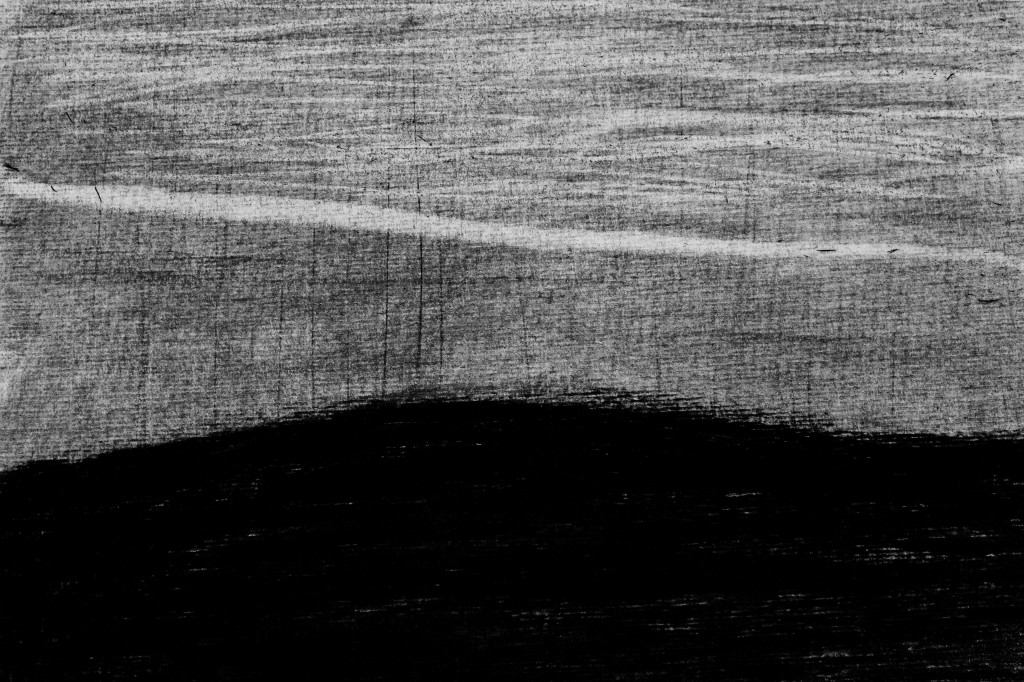
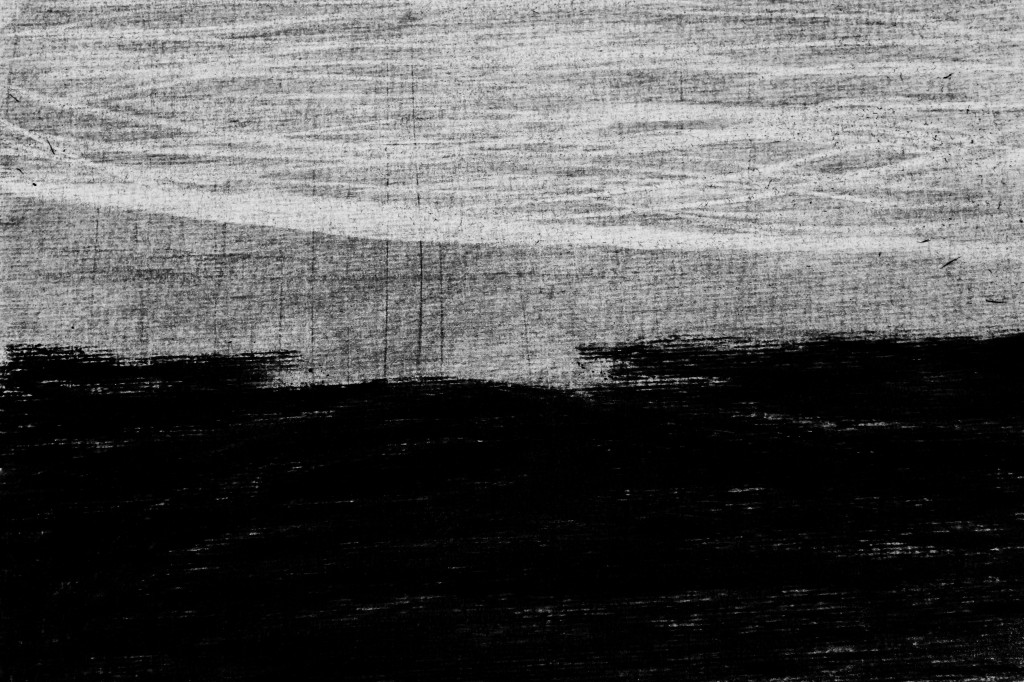
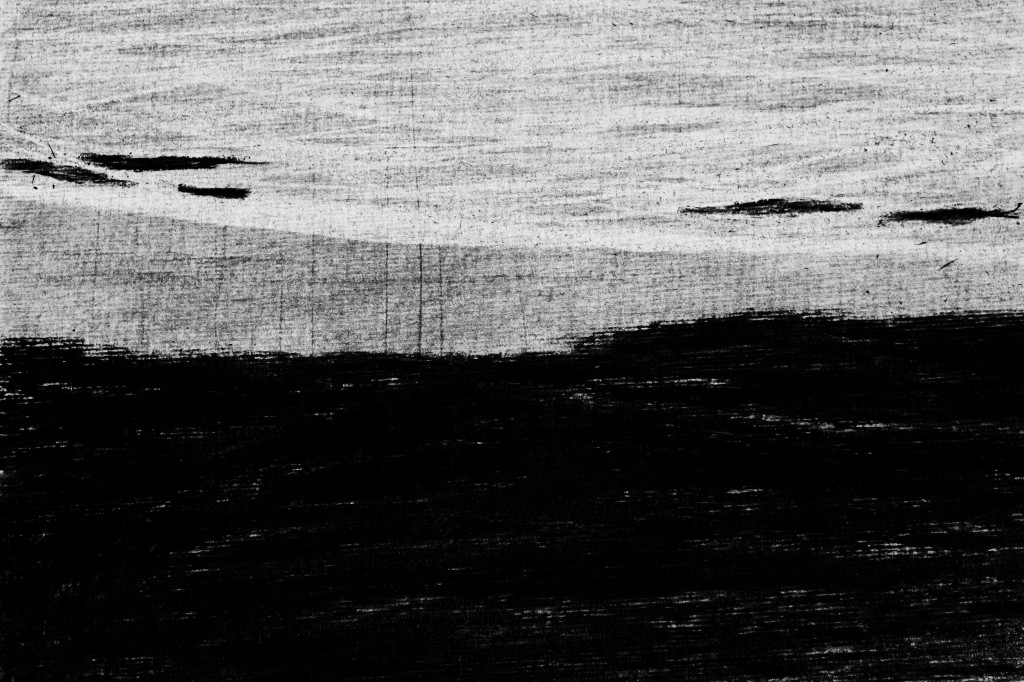





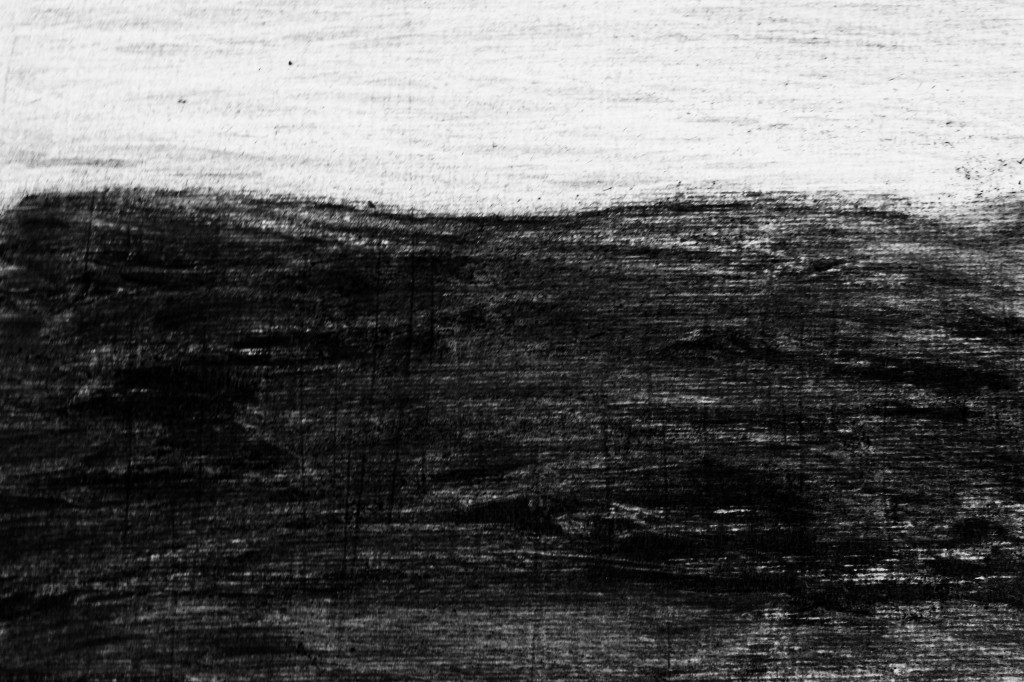

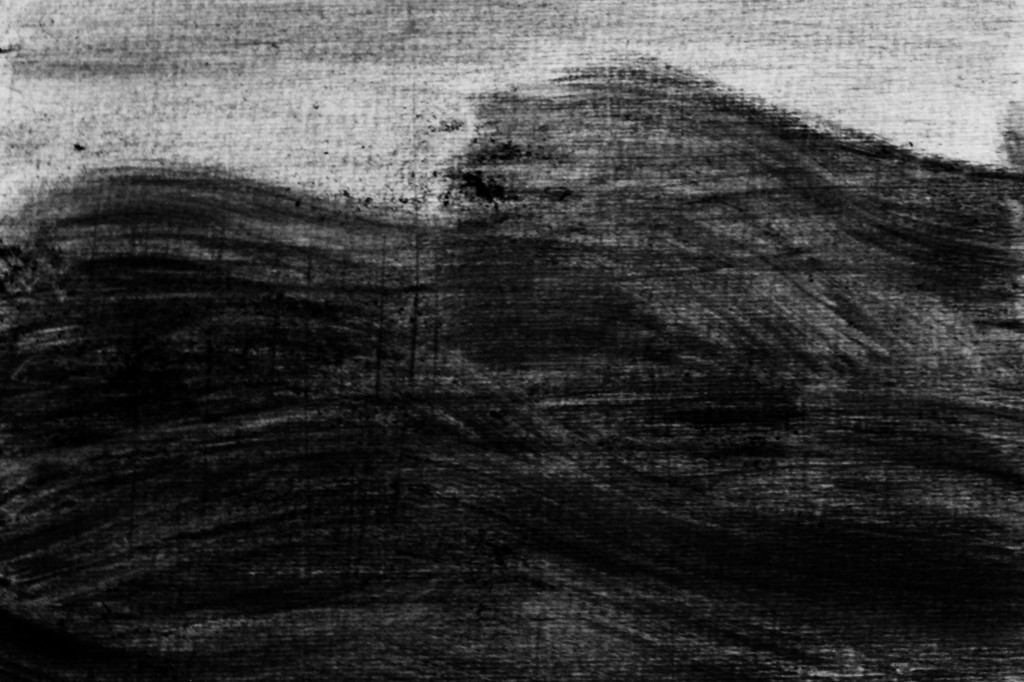
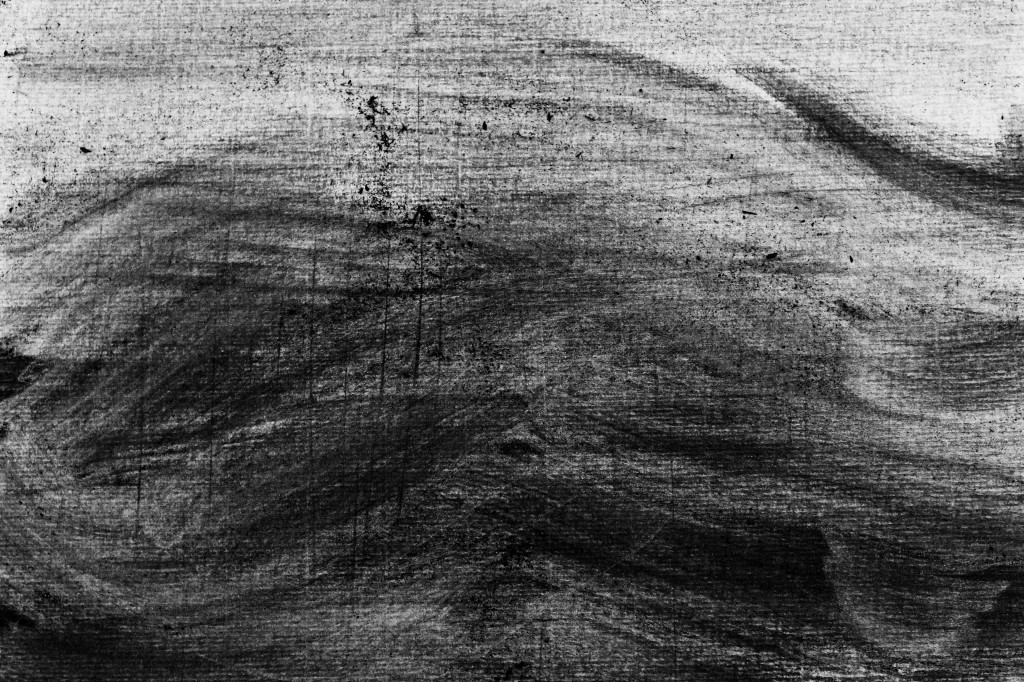
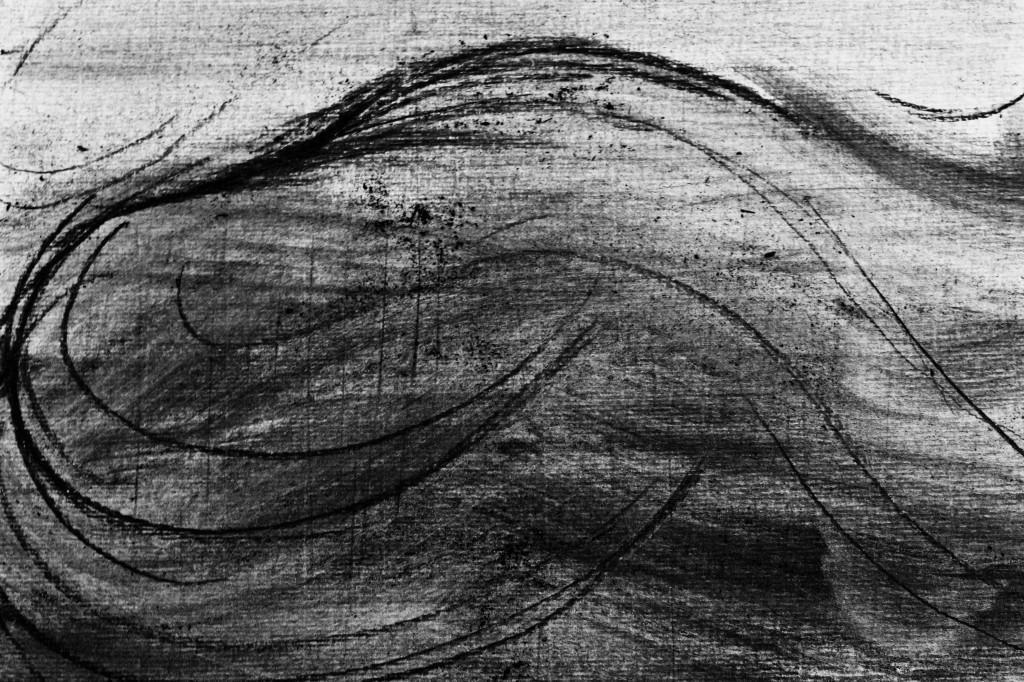
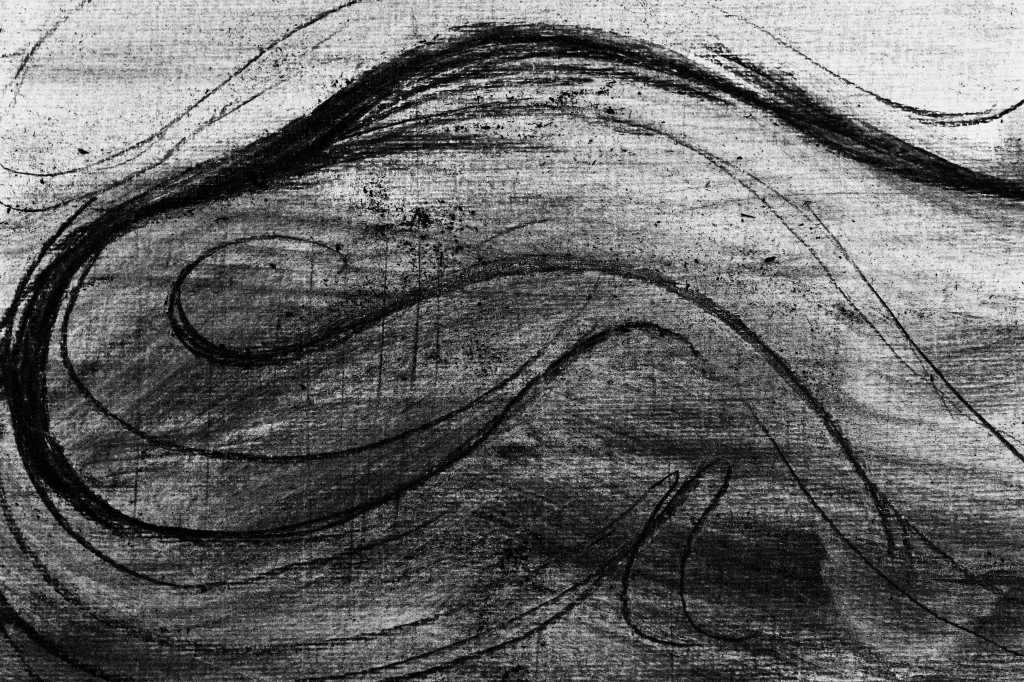
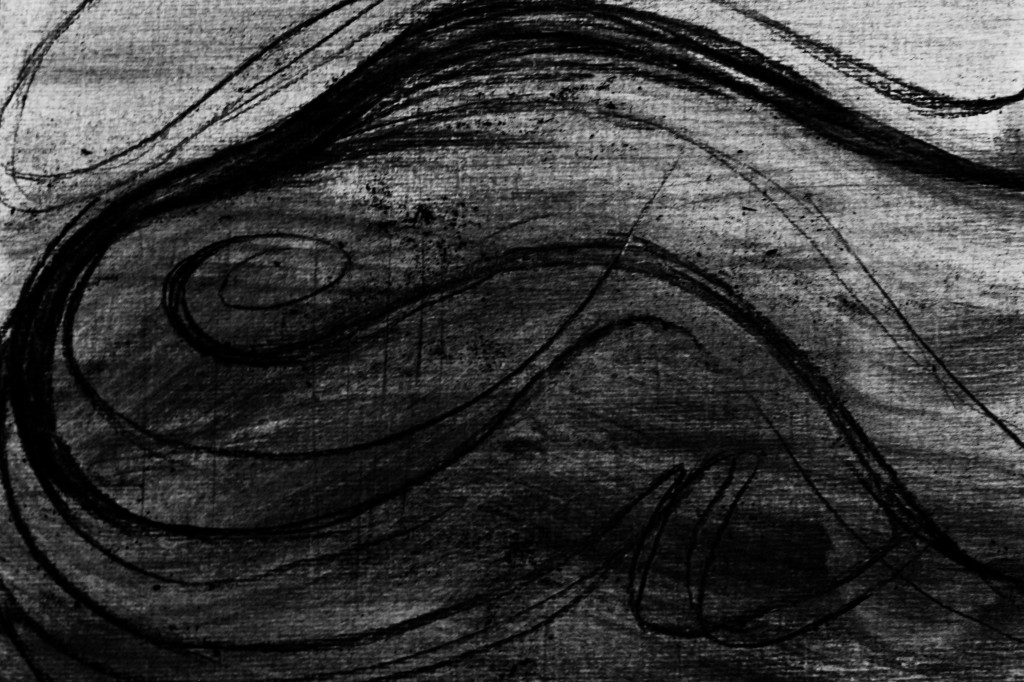



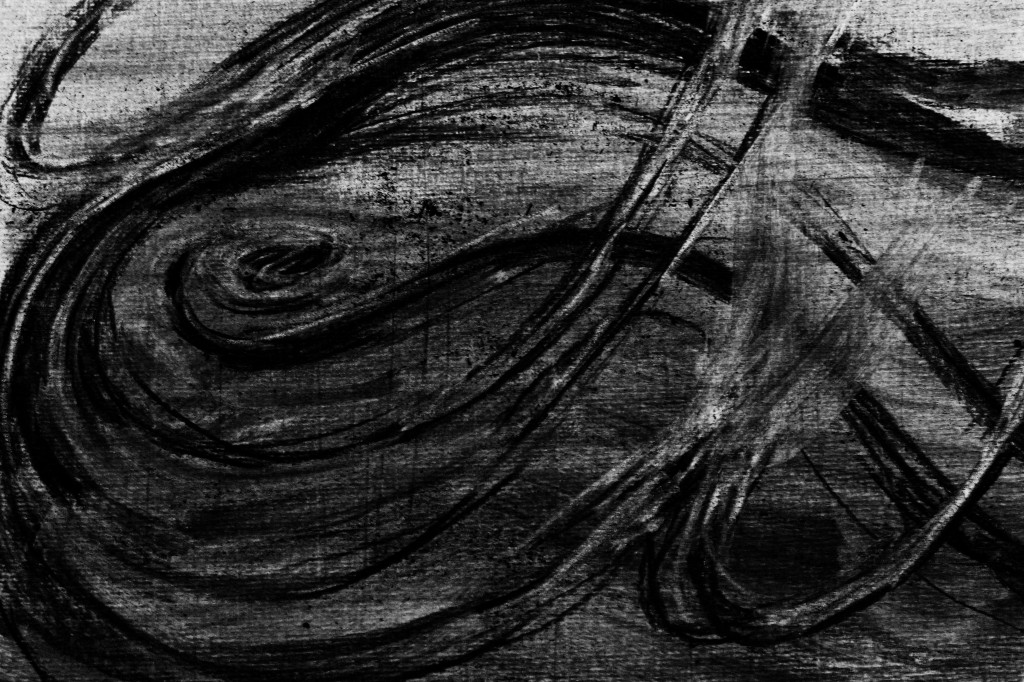

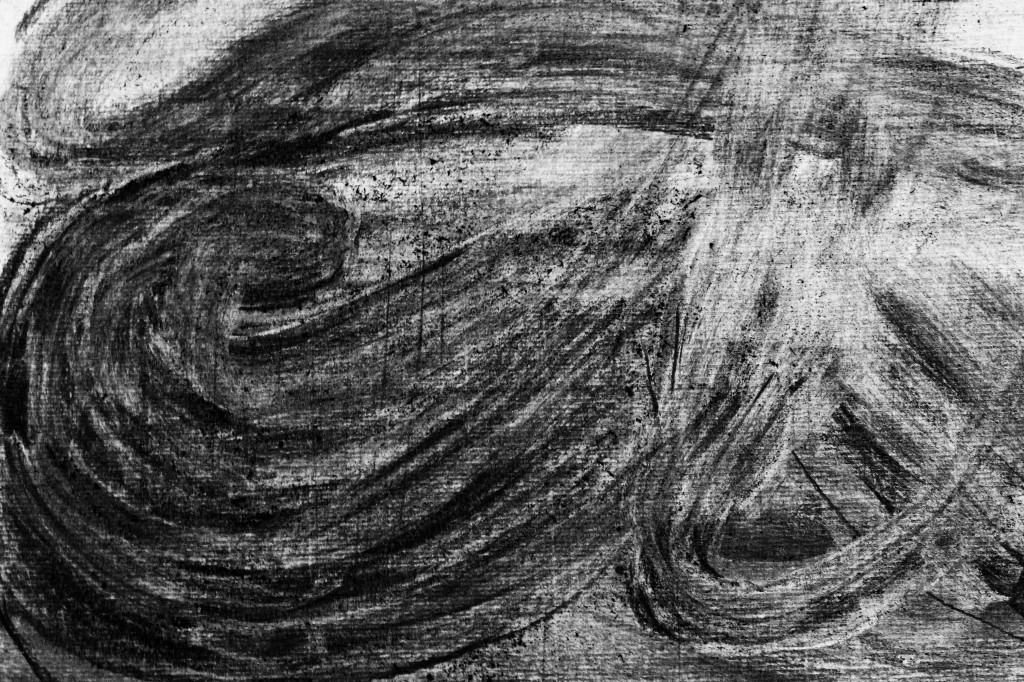


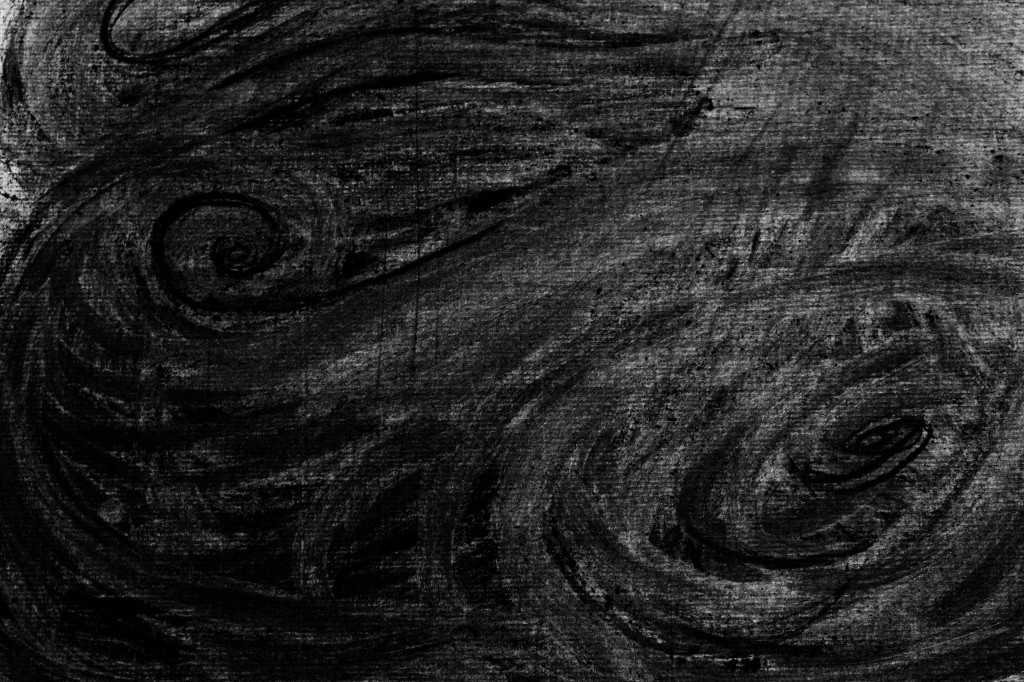
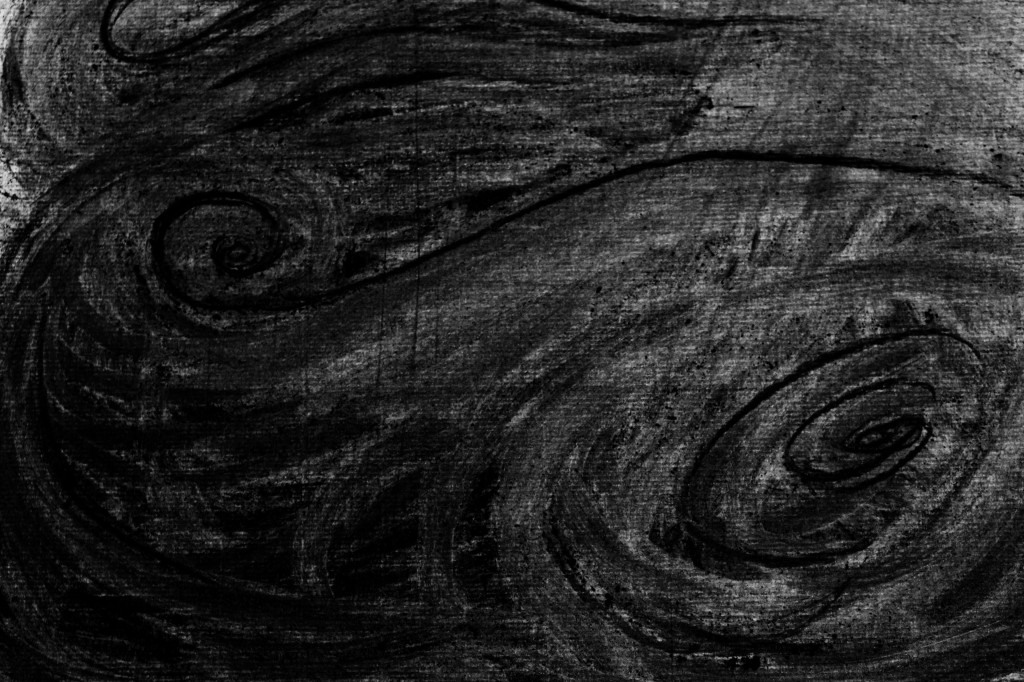
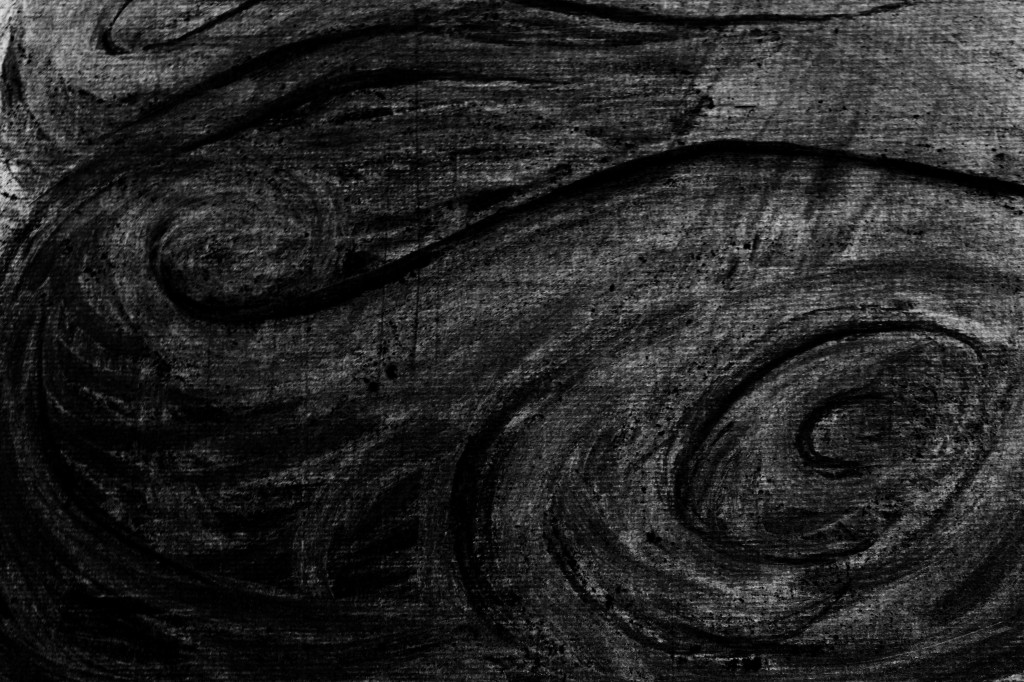





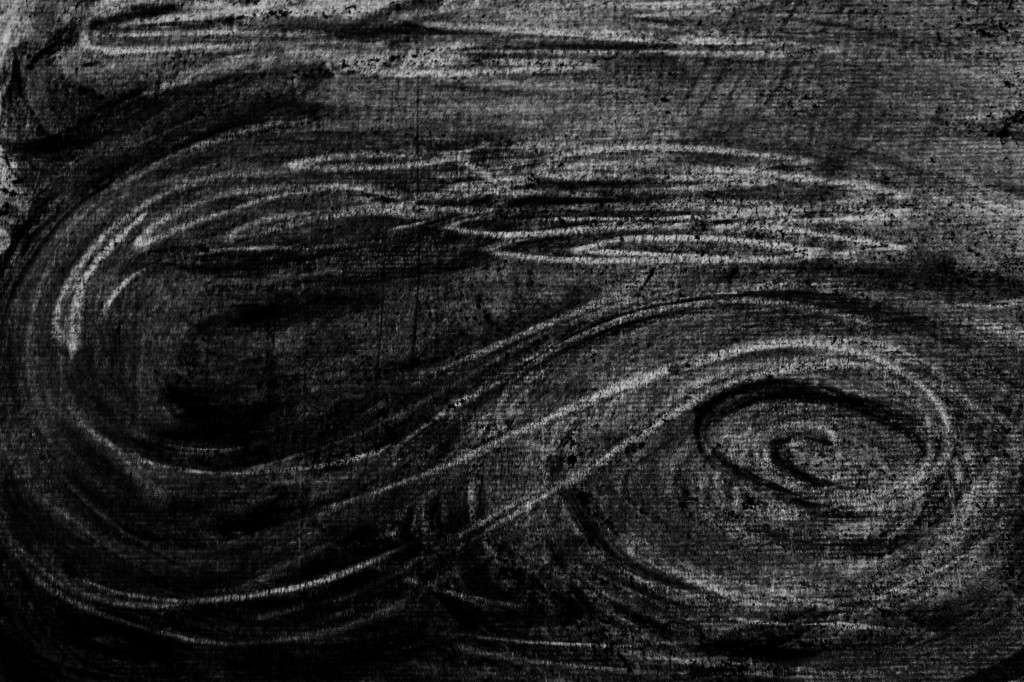
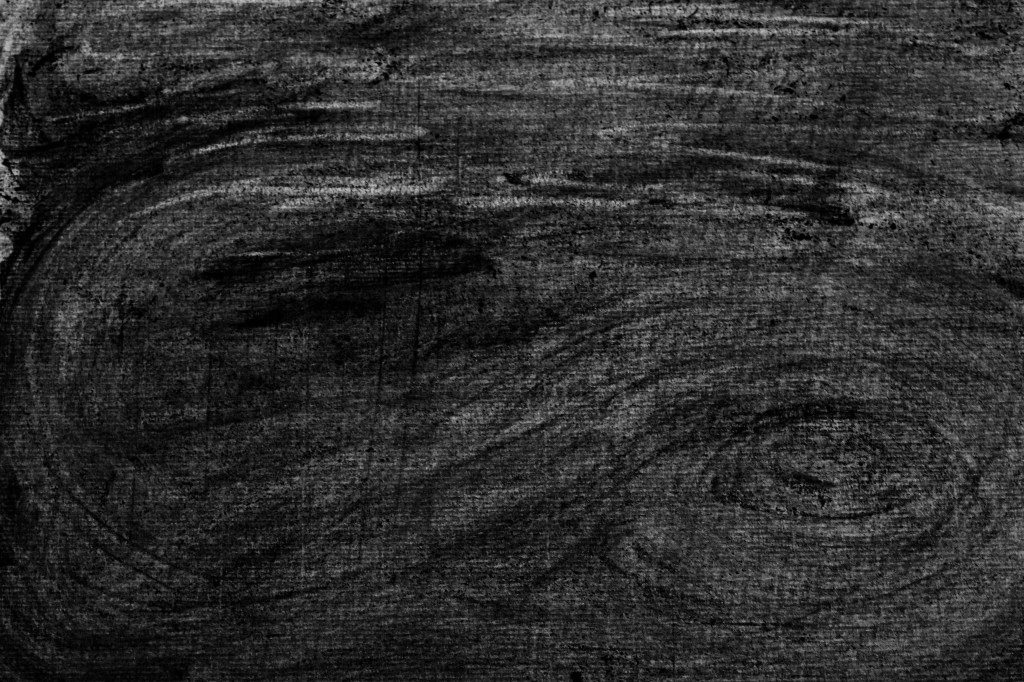

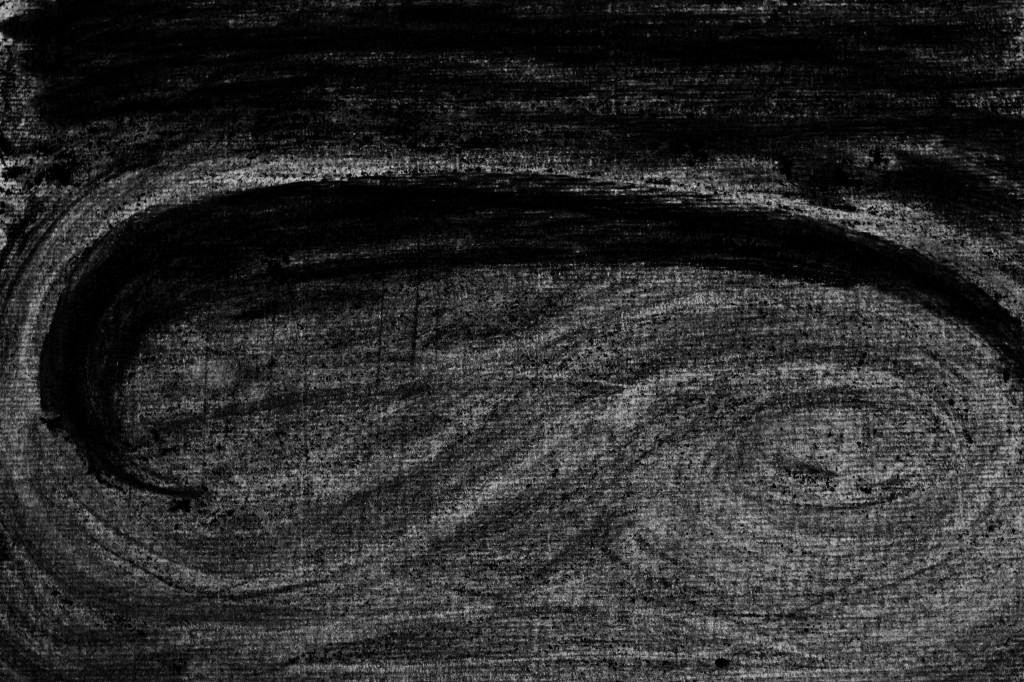

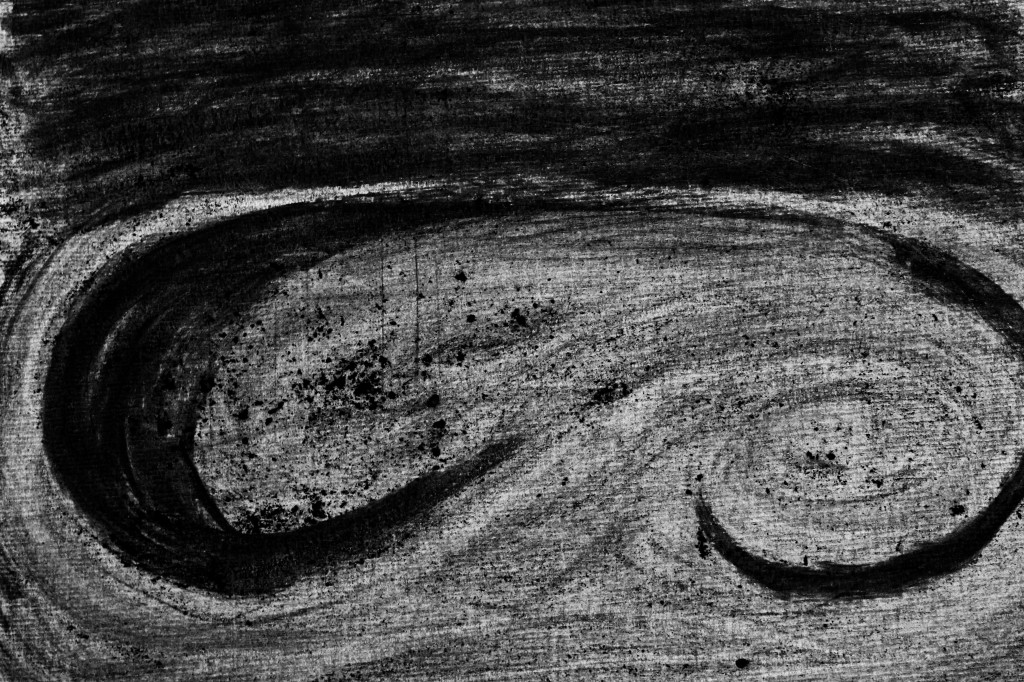

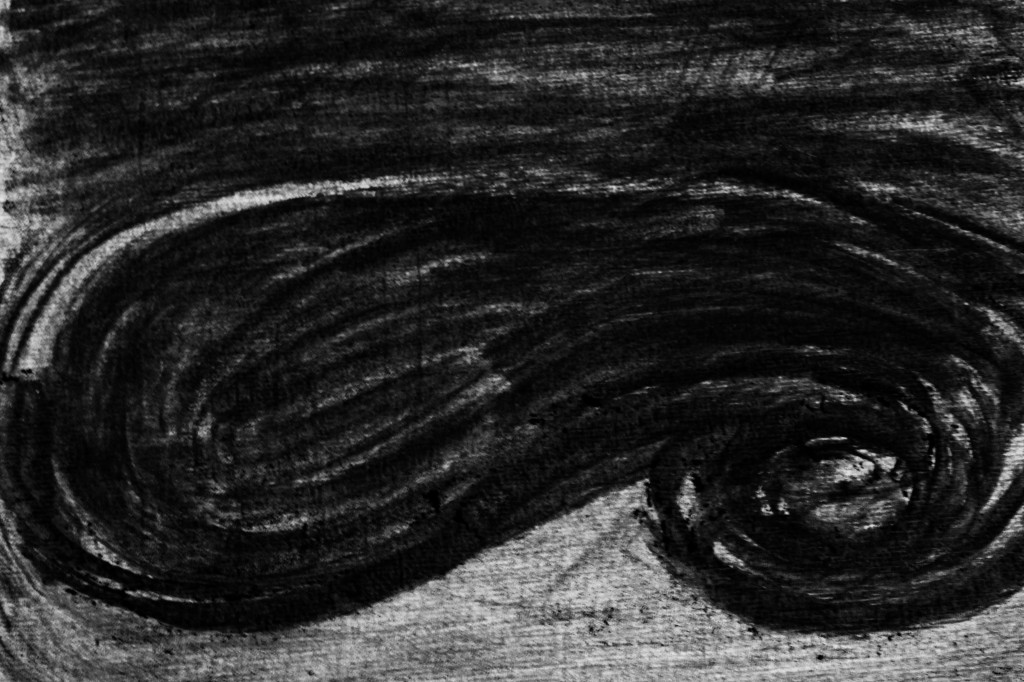

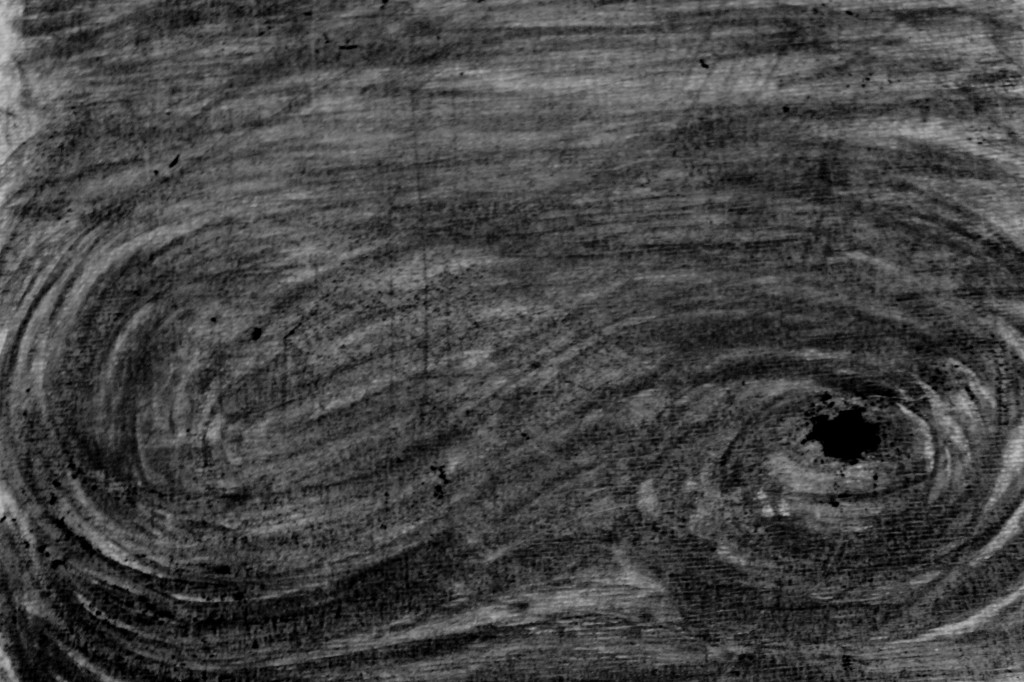
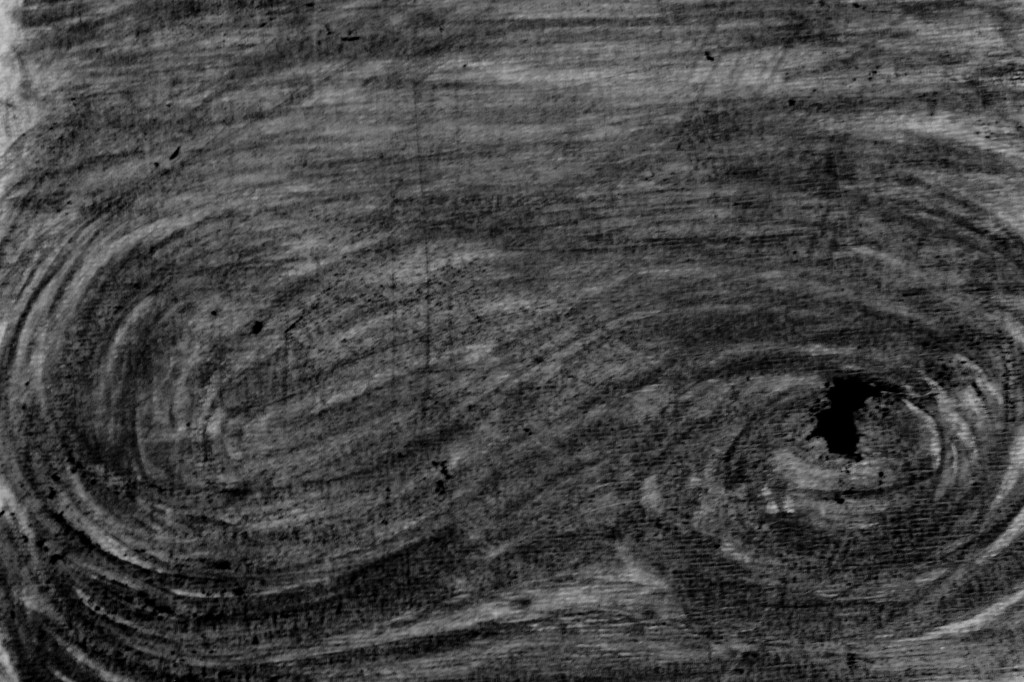
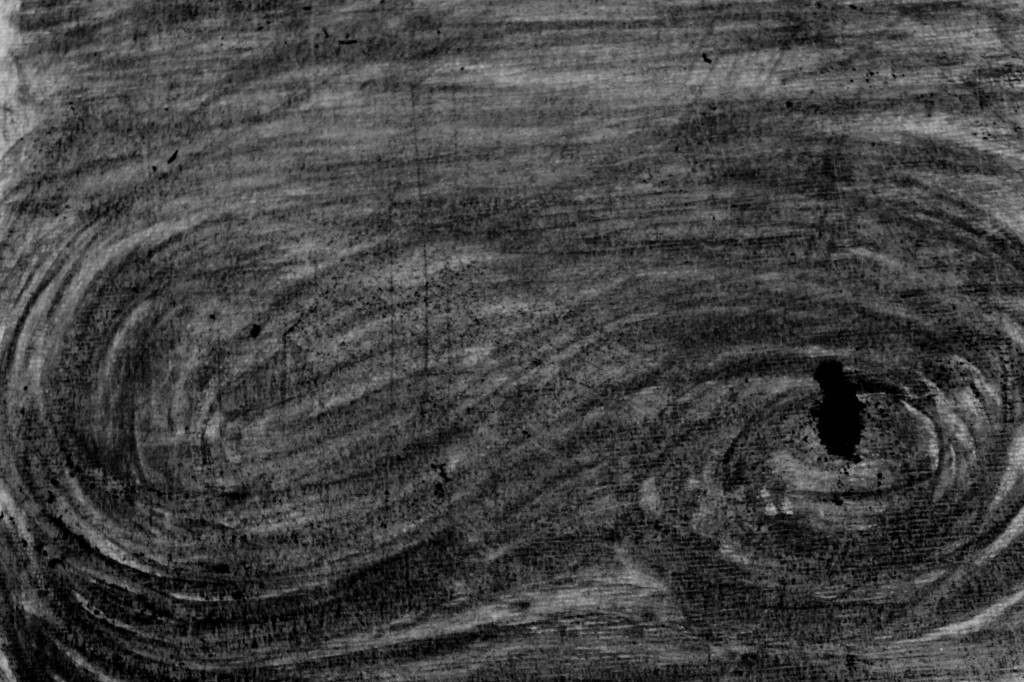



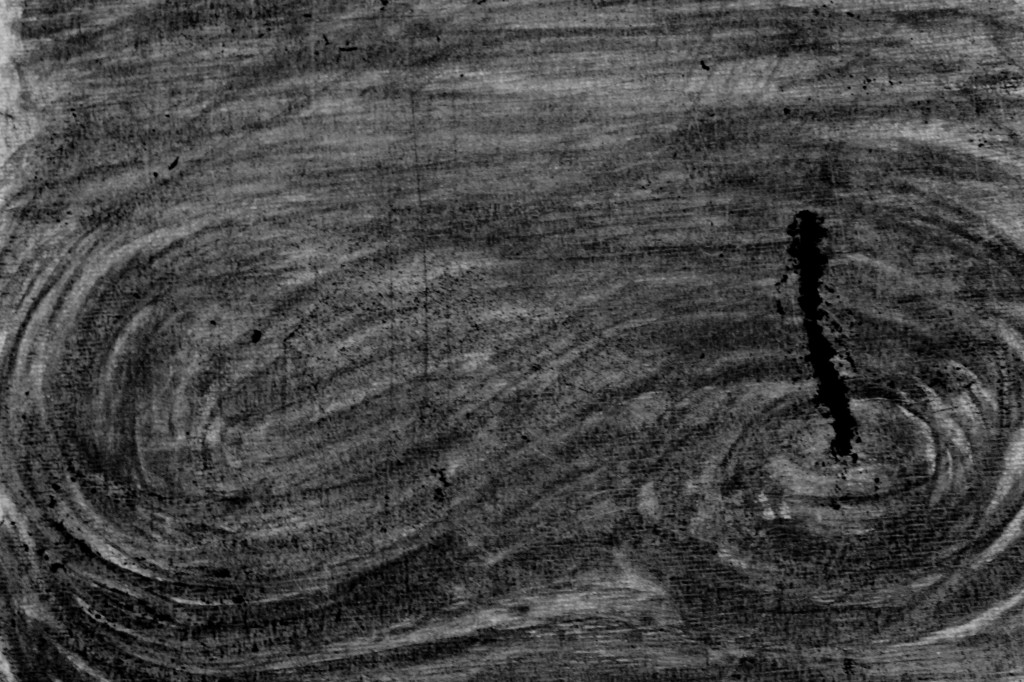
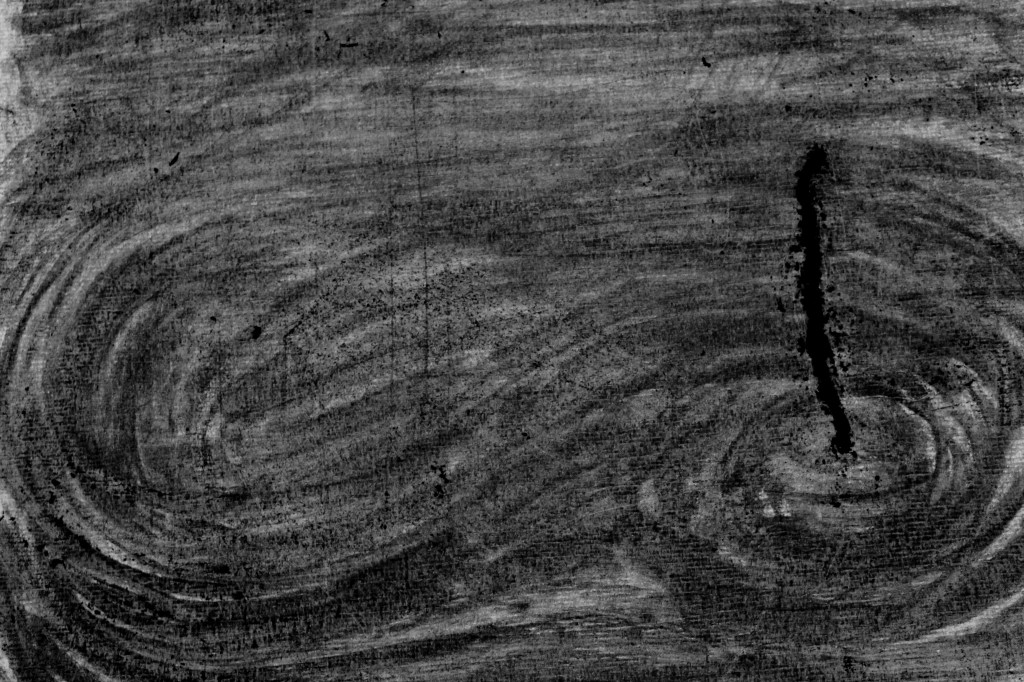

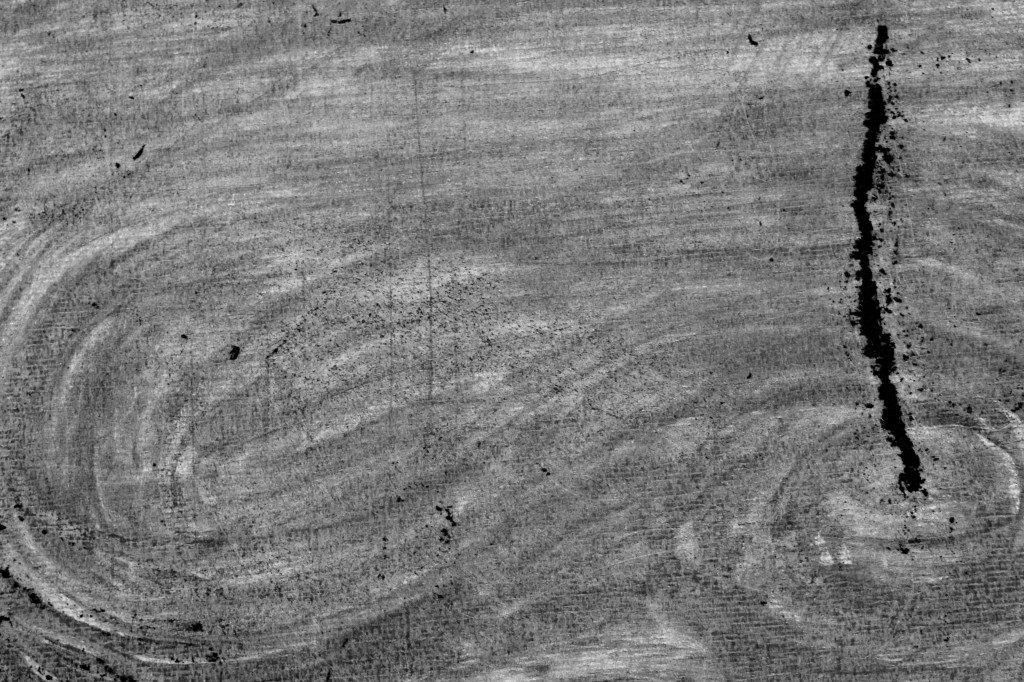
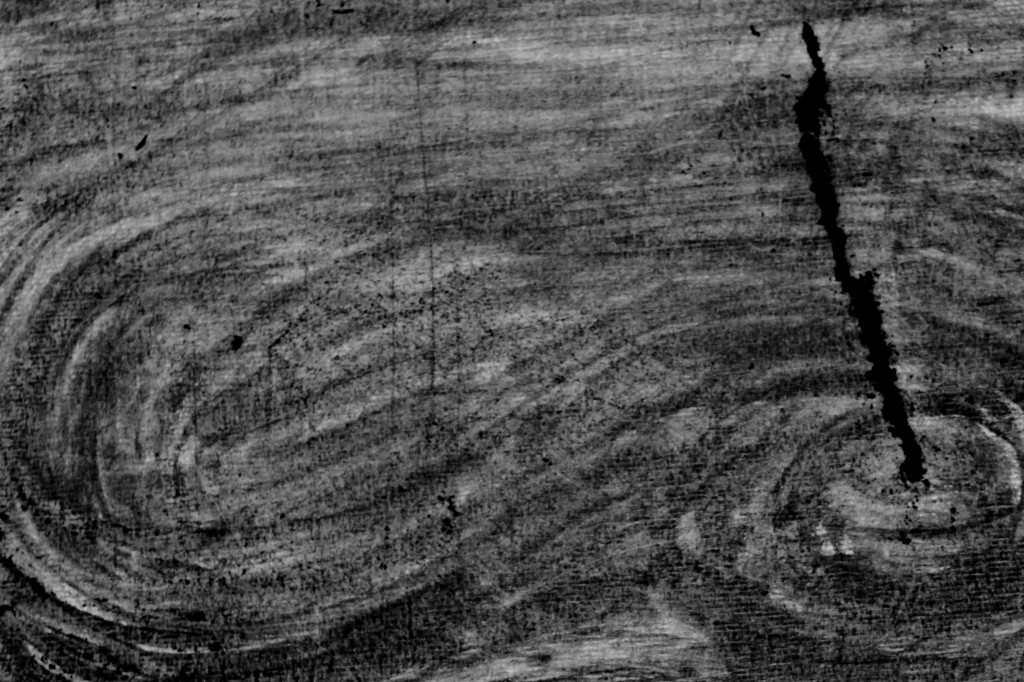
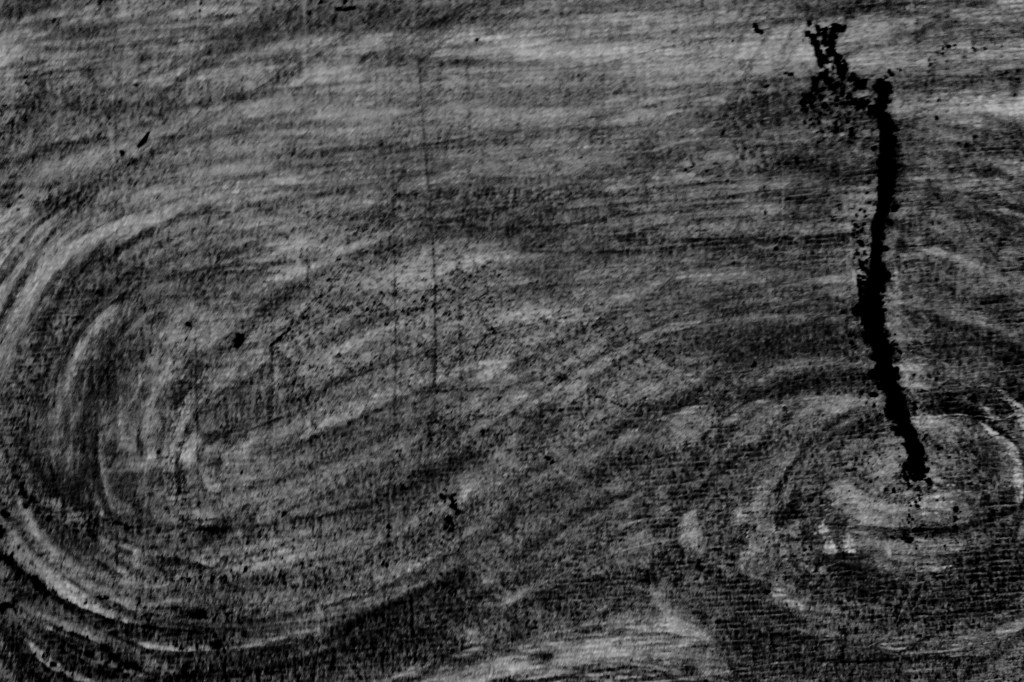

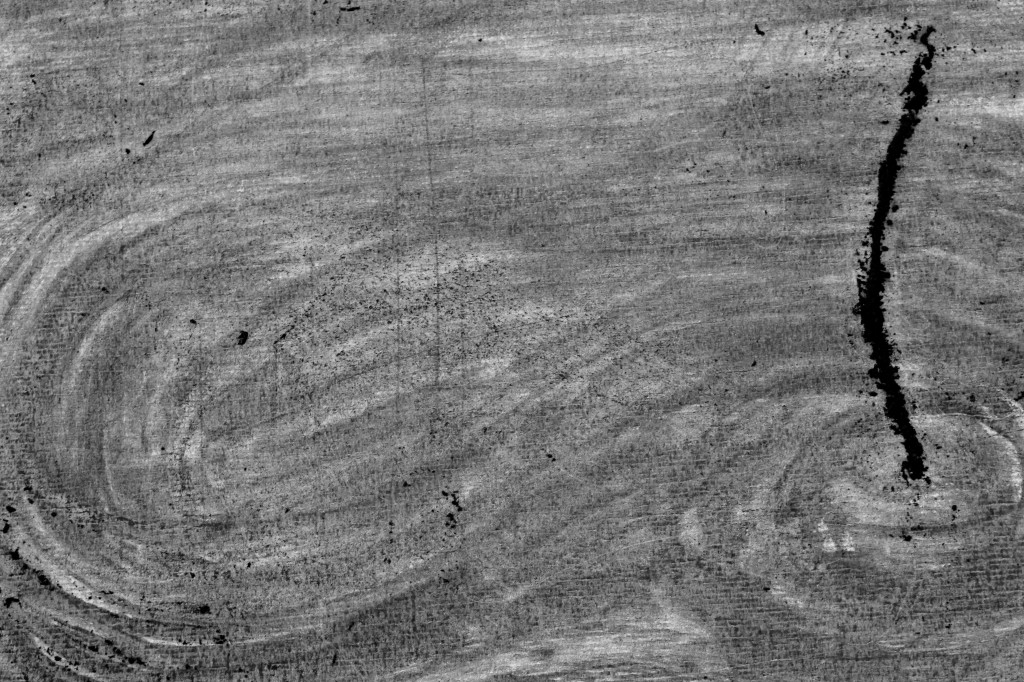


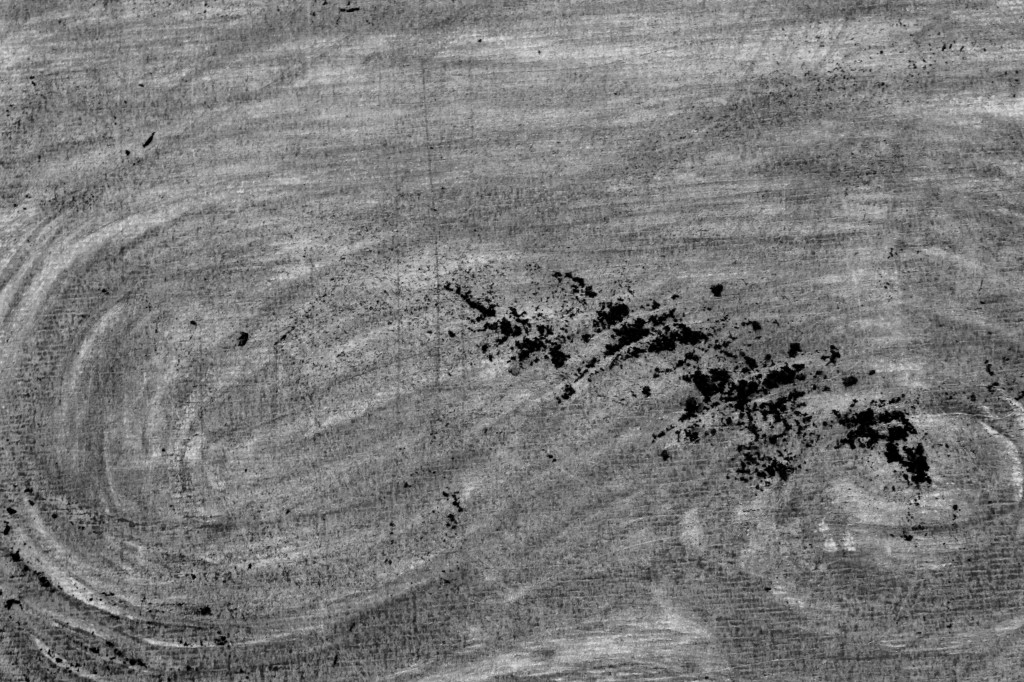


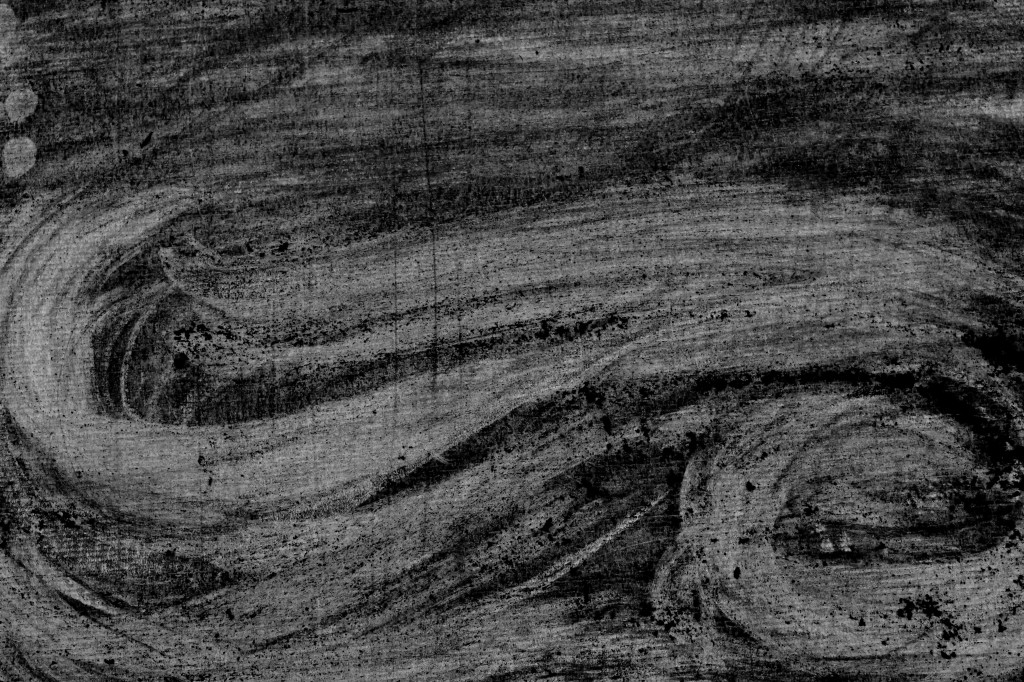


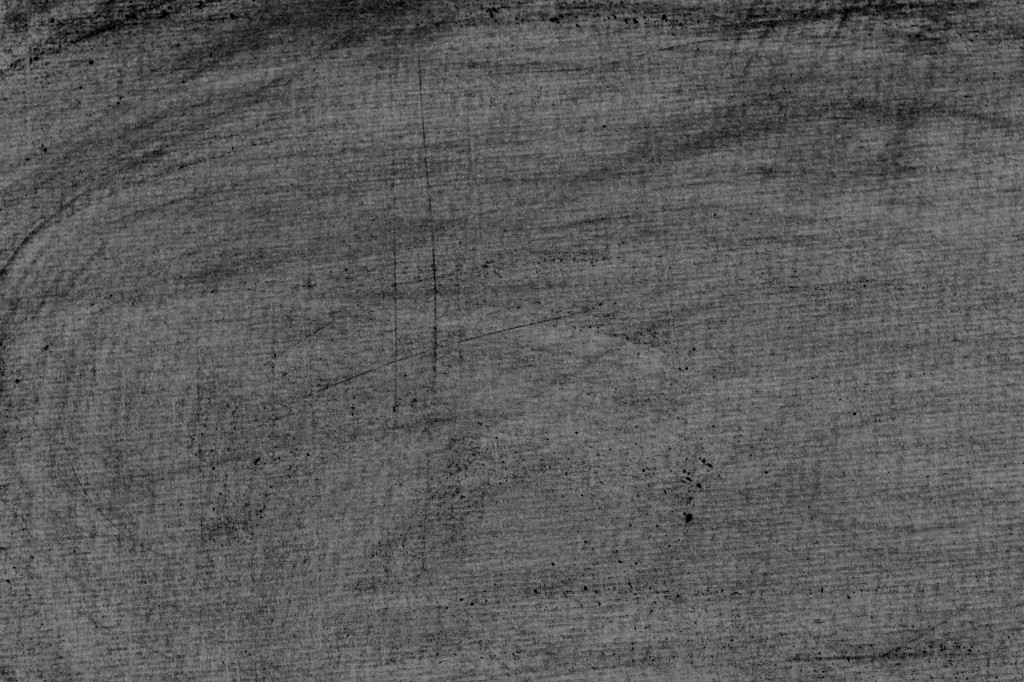

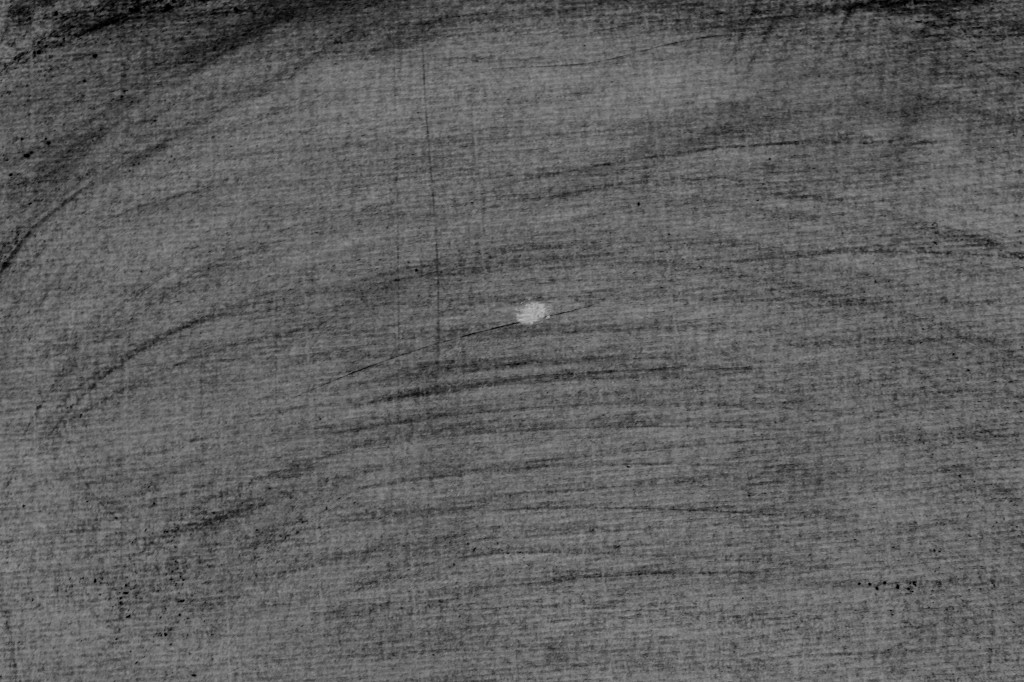



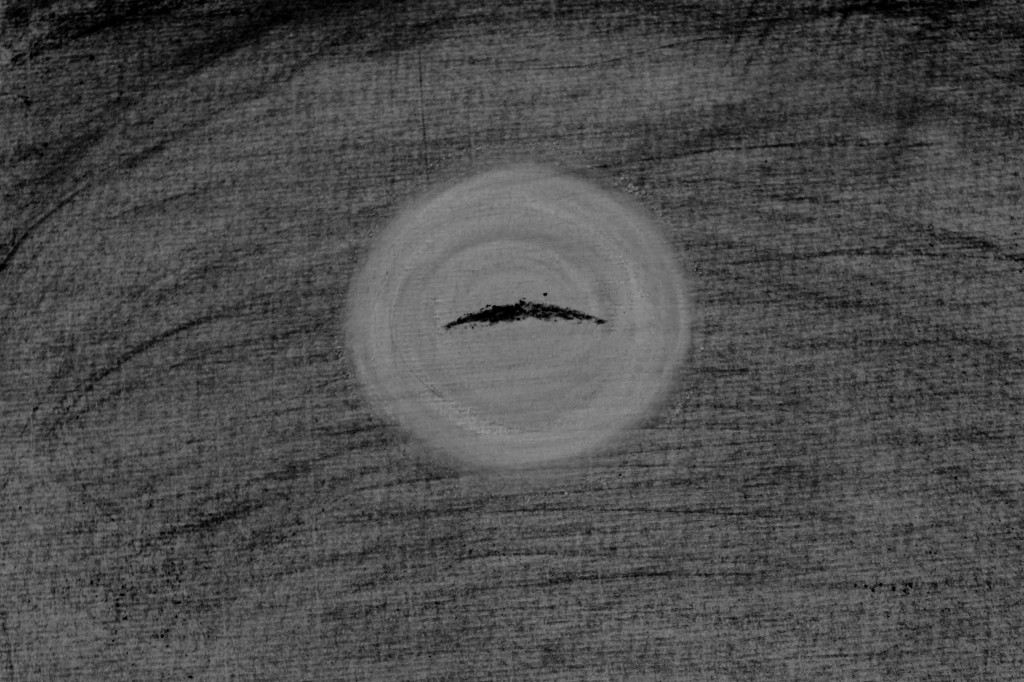
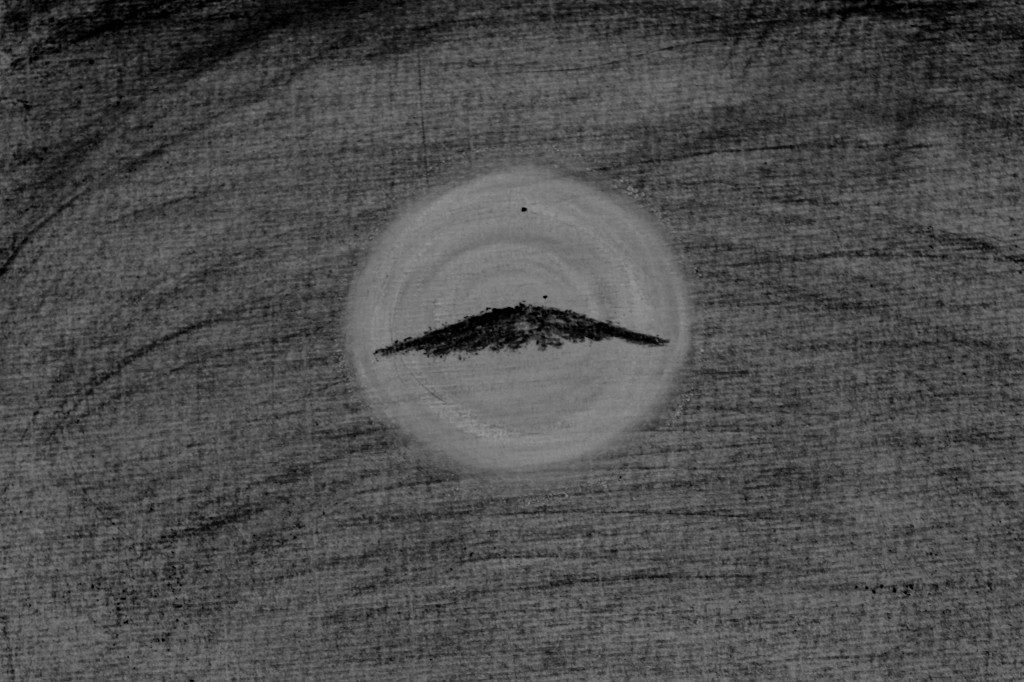
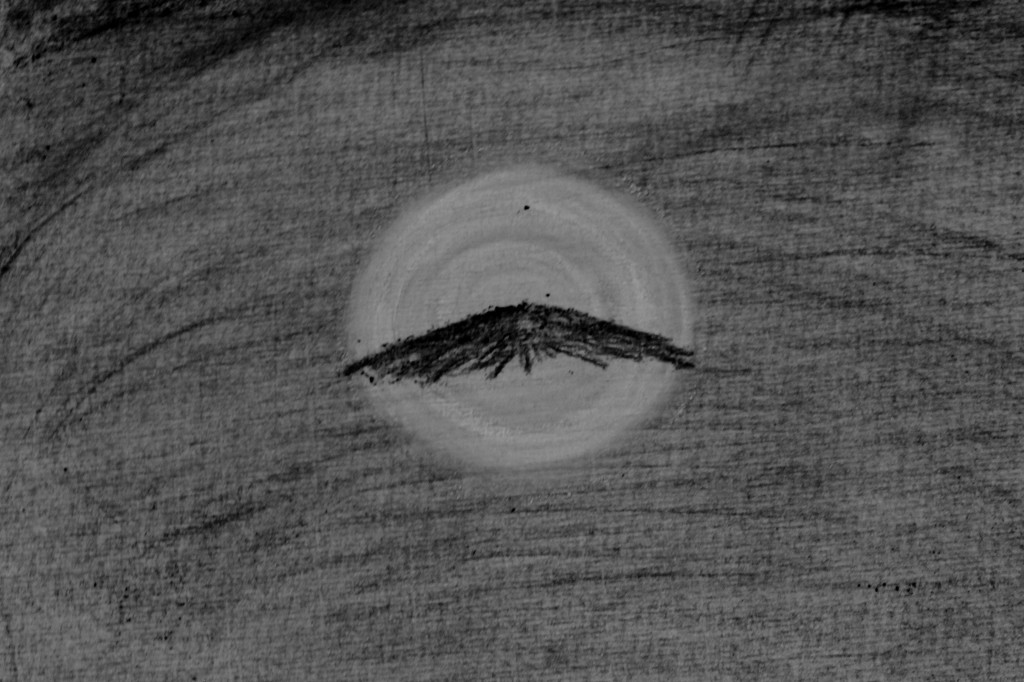







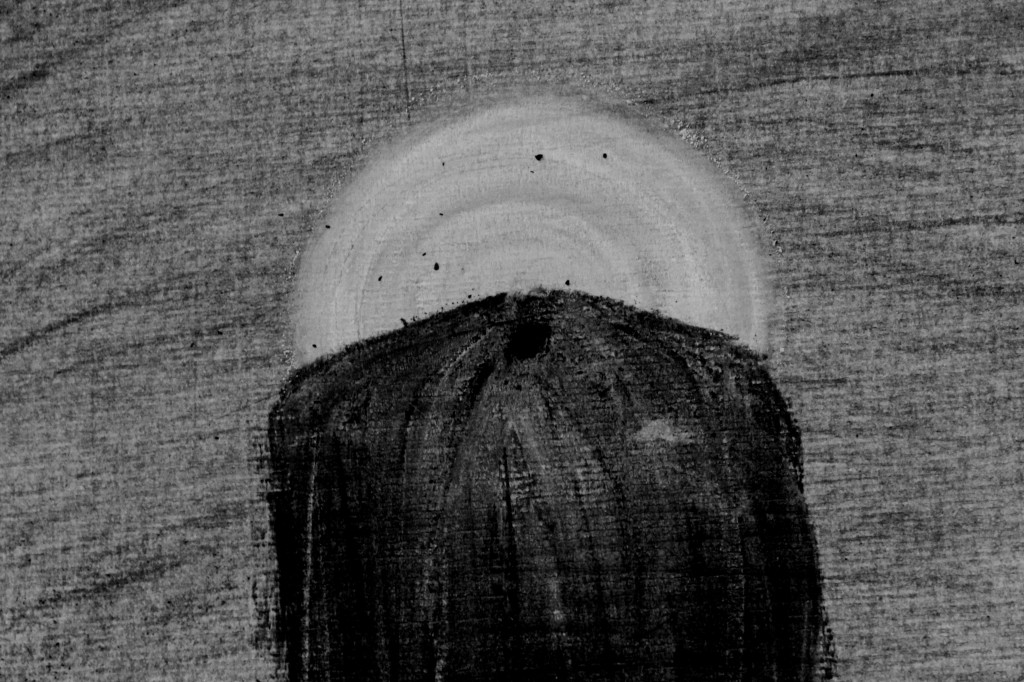
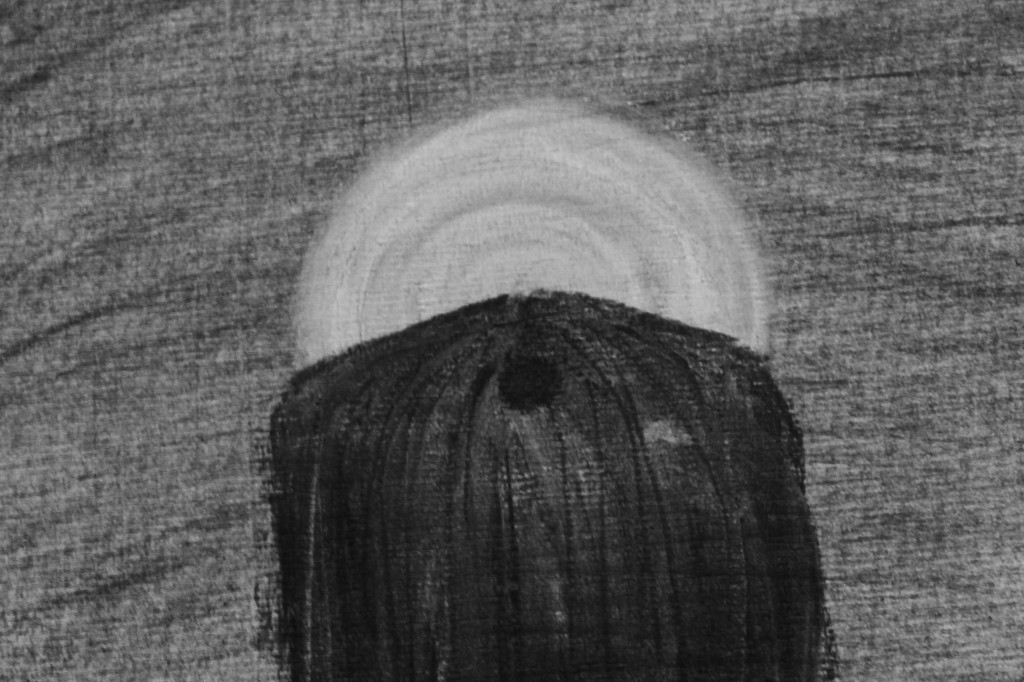
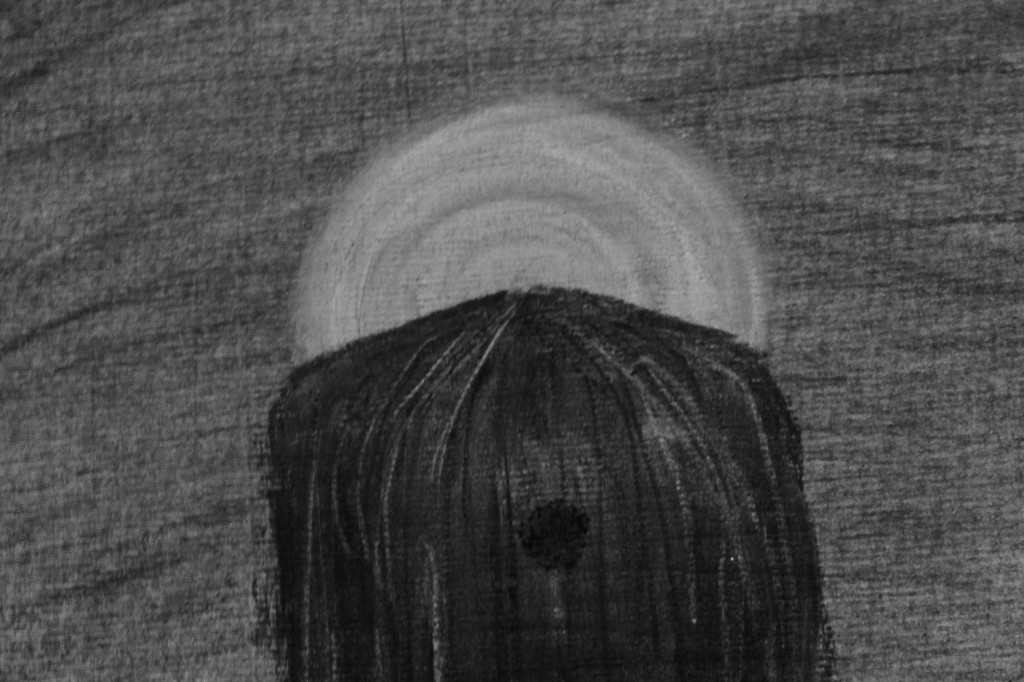





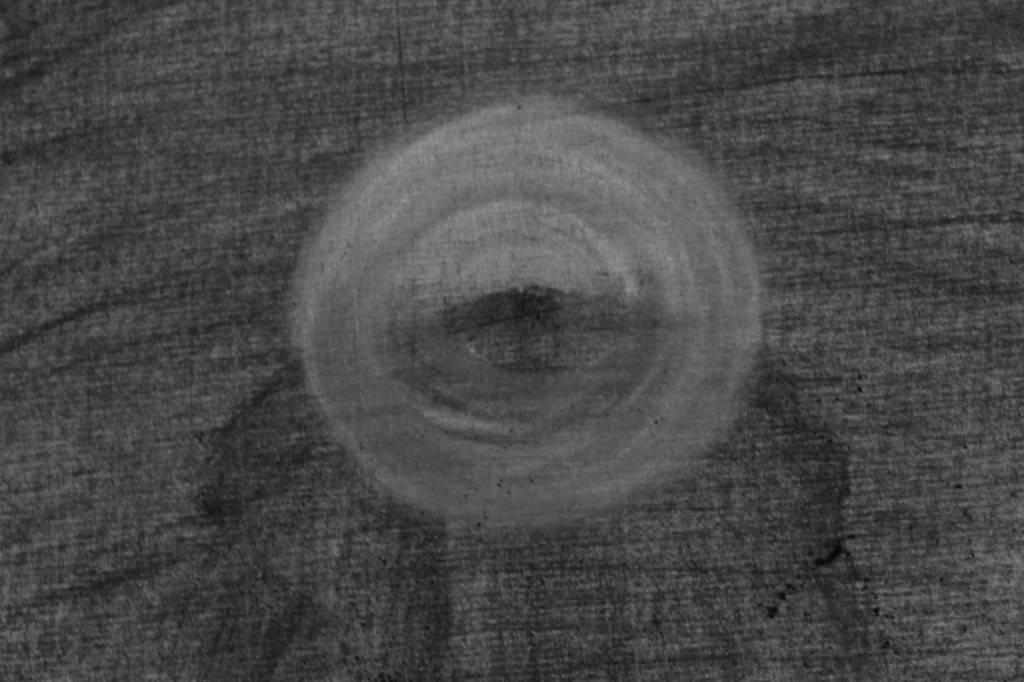

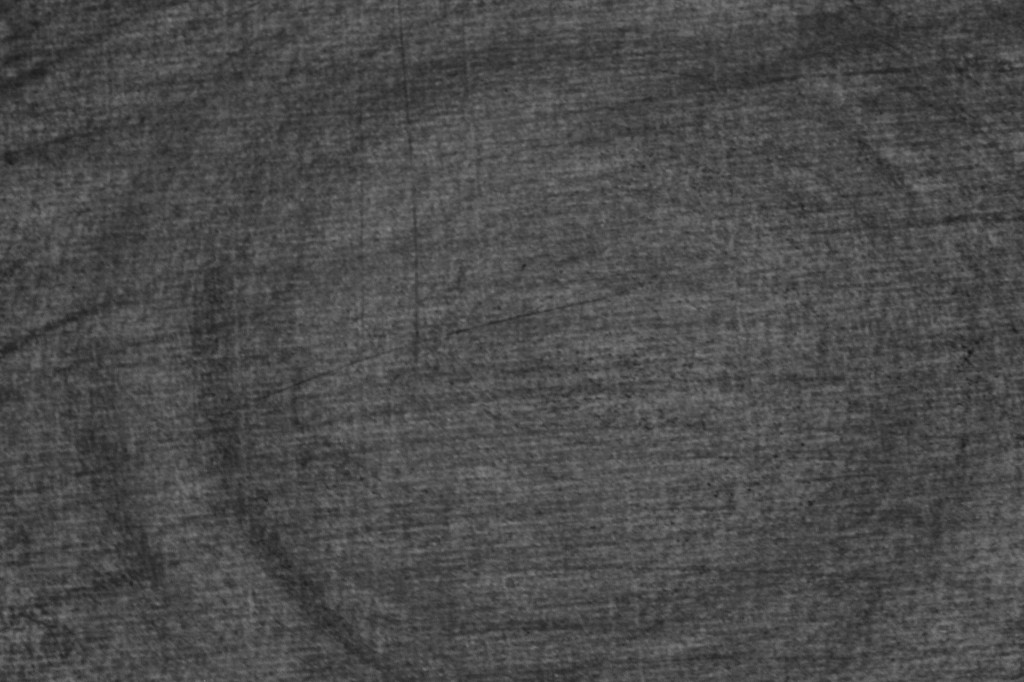

After this session, I wasn’t sure whether I was finished or not, but I went for a walk to the Axe river to see if I could grab any other imagery to start from. There happened to be a dead bird sprawled out on the Axe bridge after being hit by a car, and I felt that I must go back and use this as another starting point for the next session of drawing.

I continued on letting the drawing draw itself, and I don’t think I’ve really drawn this way before, I felt that the drawing was leading me rather than vice versa.
Rather than wait for the charcoal dust to build up in this session, I grated charcoal onto the page with my hands, trying to mimic the organisms that will eventually break the bird carcass down into soil. In Breathe, Kentridge uses assistants to fan pieces of paper and captures their movement on camera (ART21, 2010). Similarly, I bent down to the page and gently blew the charcoal around to try and capture a more organic movement than if I had drawn each speck individually.
At this point, I noticed that the page was starting to discolour from the constant erasing and applying, going a strange murky brown colour – the colour of the river at times – so I changed direction to an underwater scene until my camera ran out of battery and I had to stop.



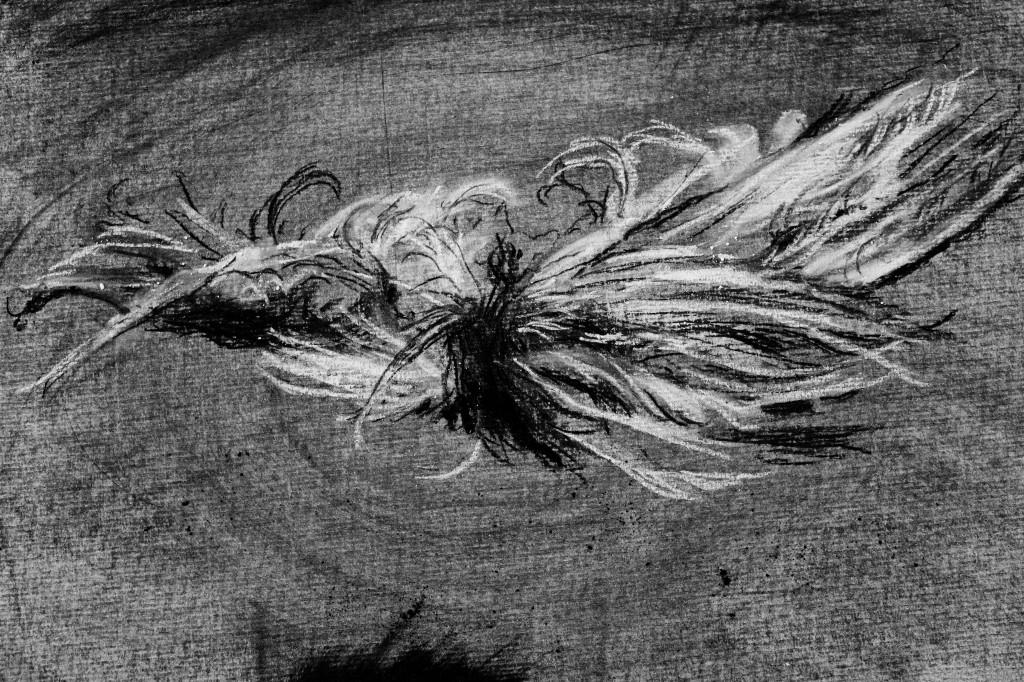
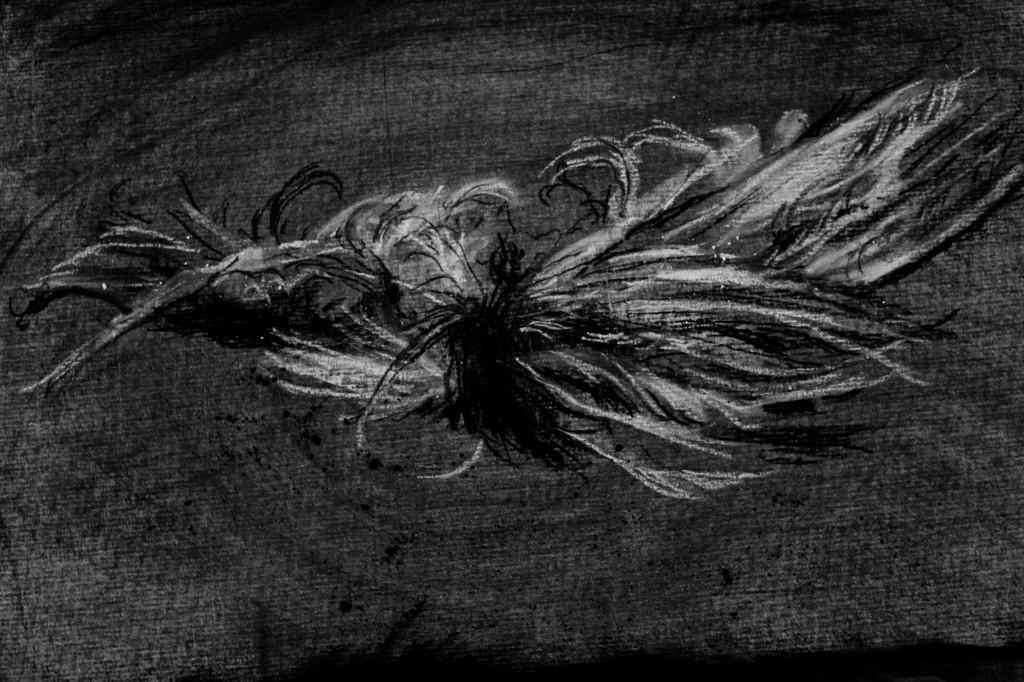
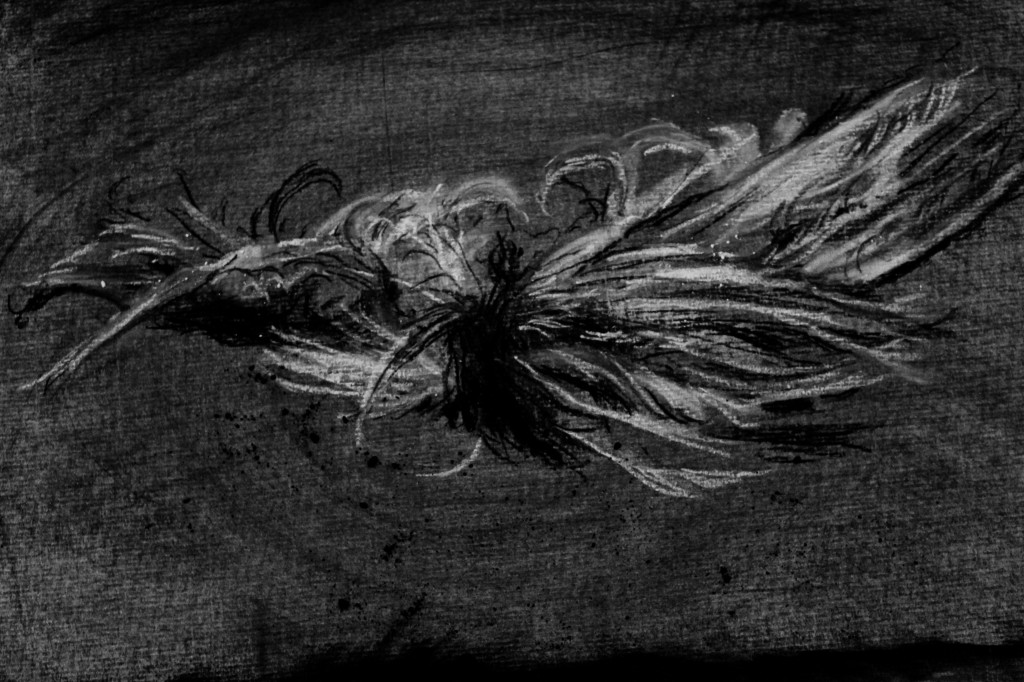
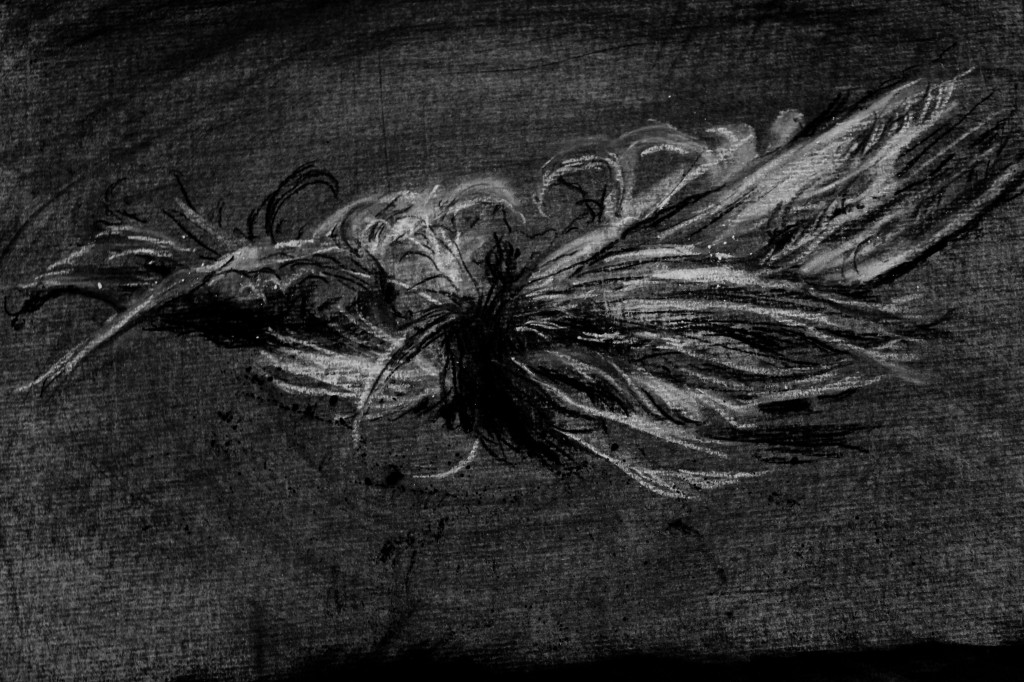

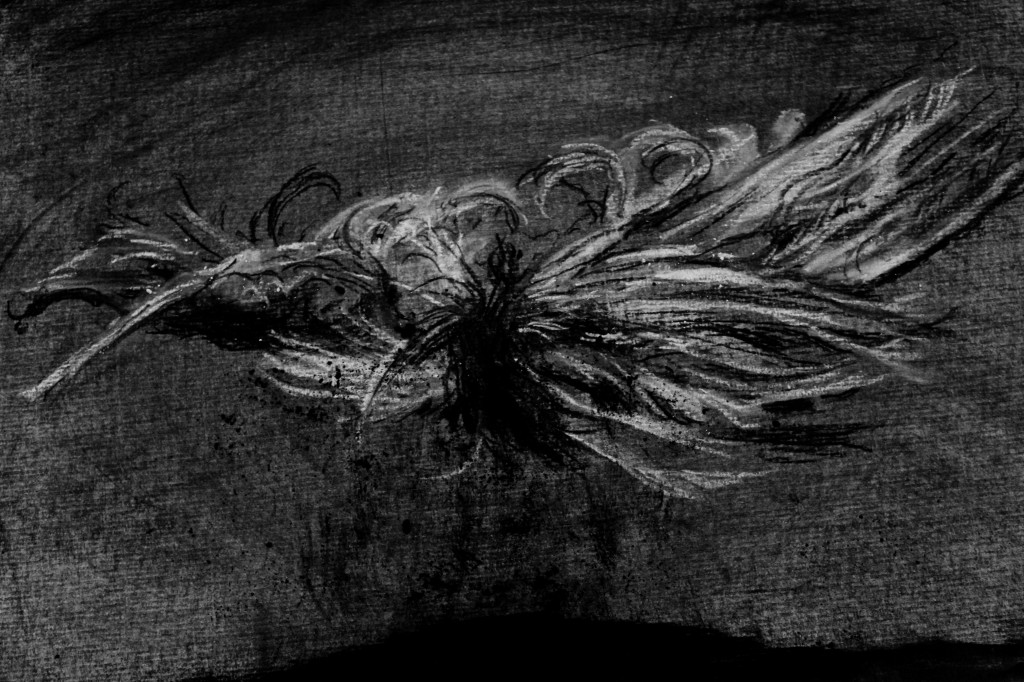

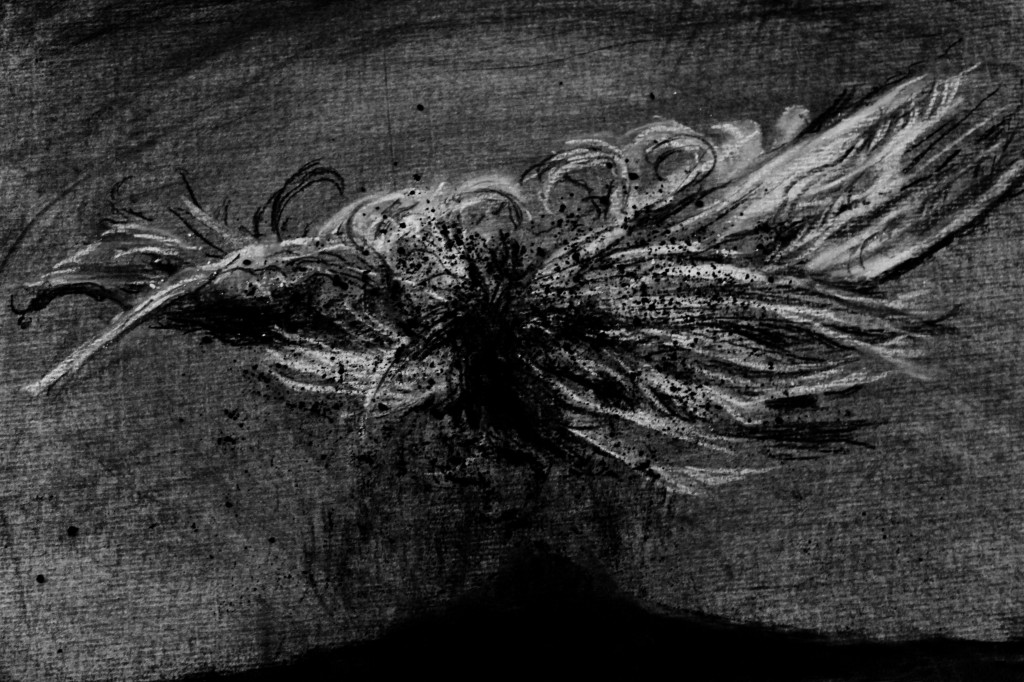


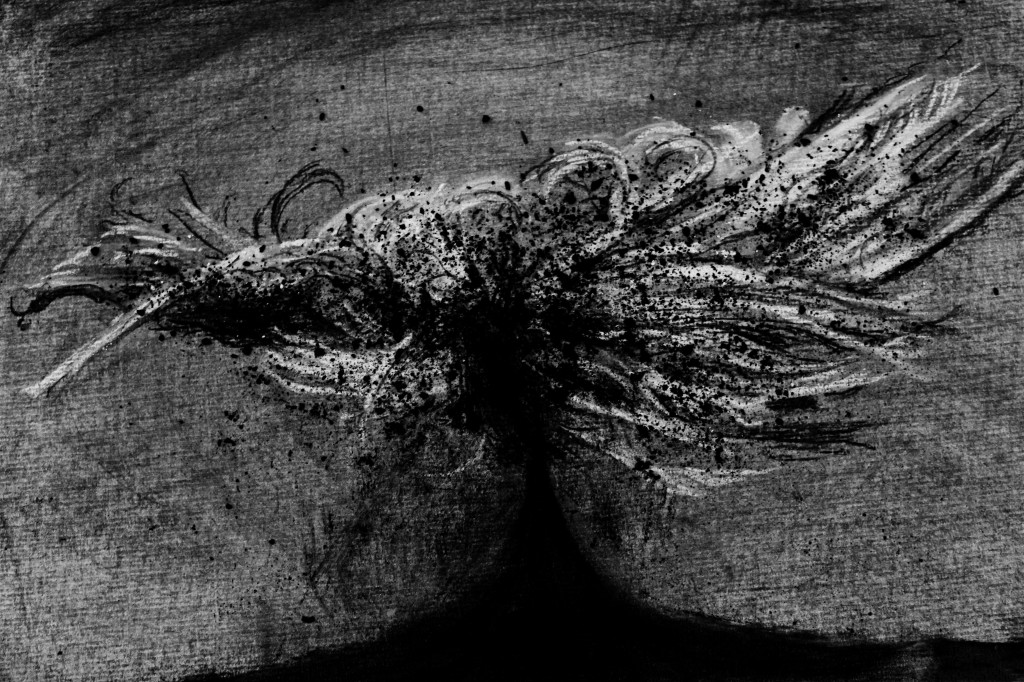
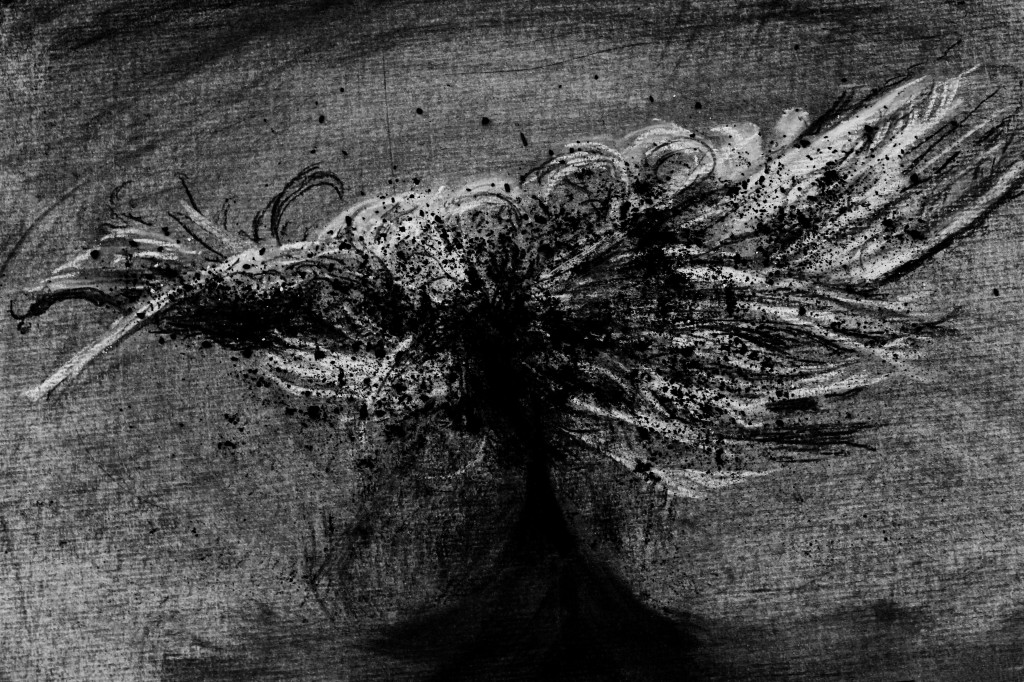


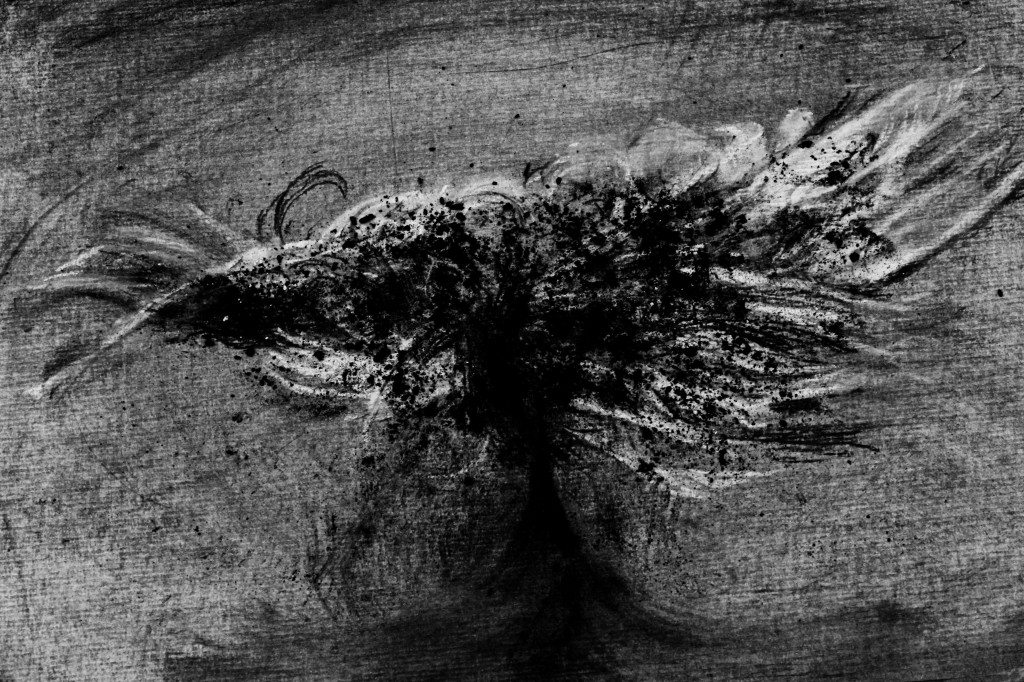


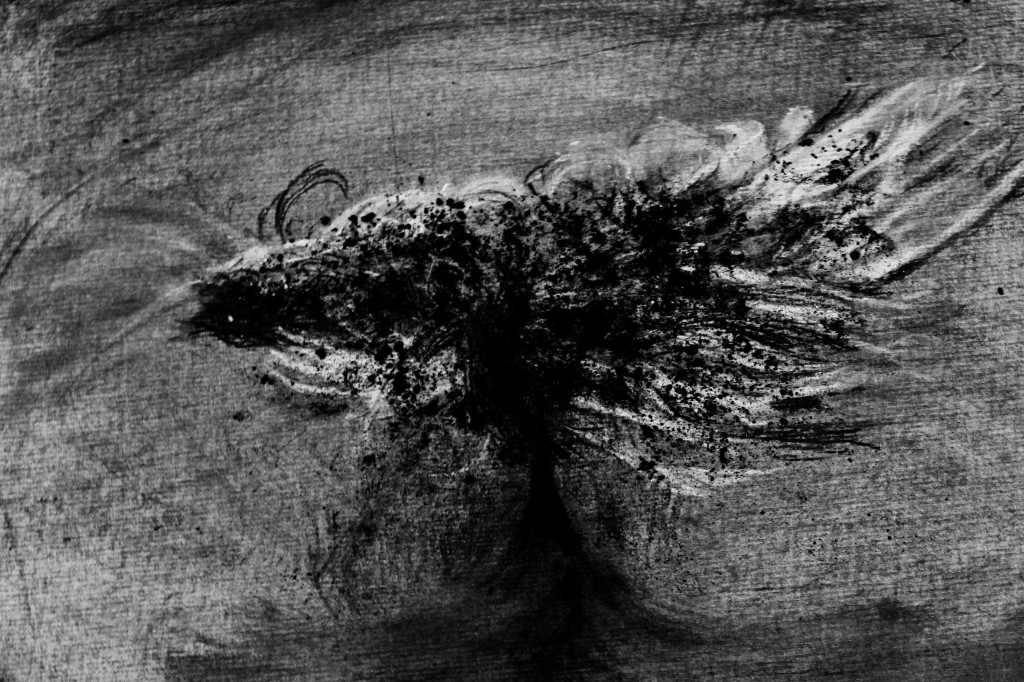
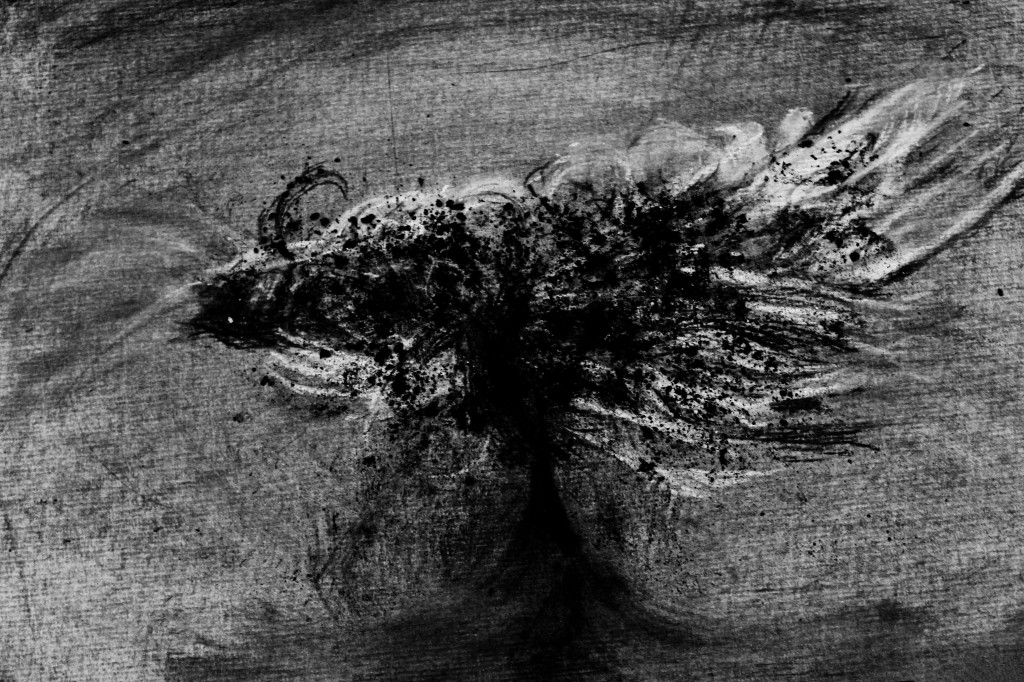

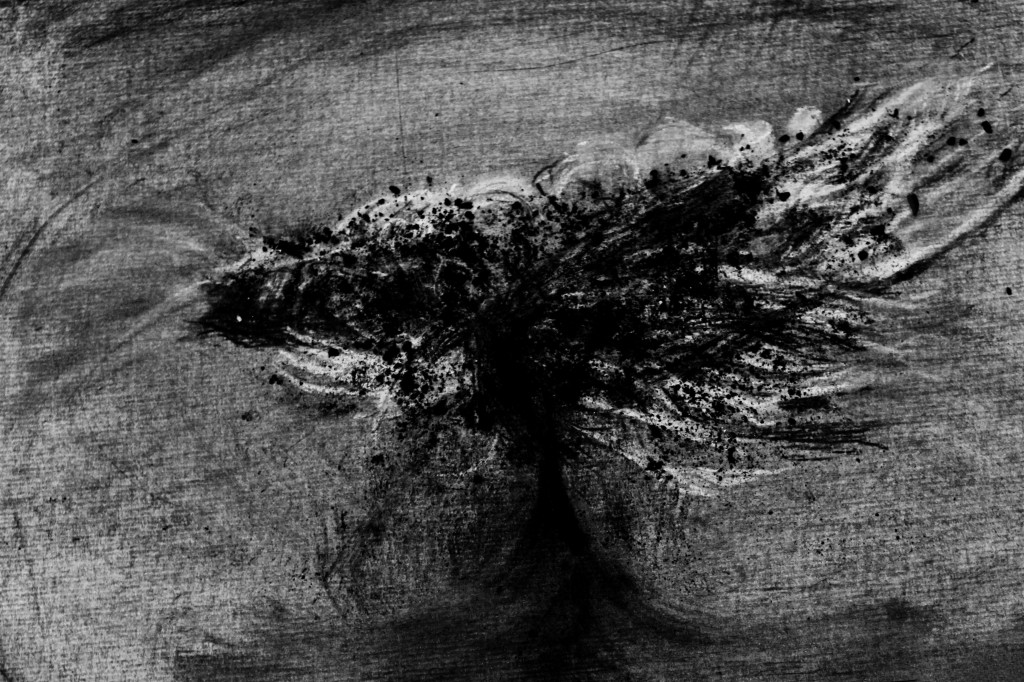


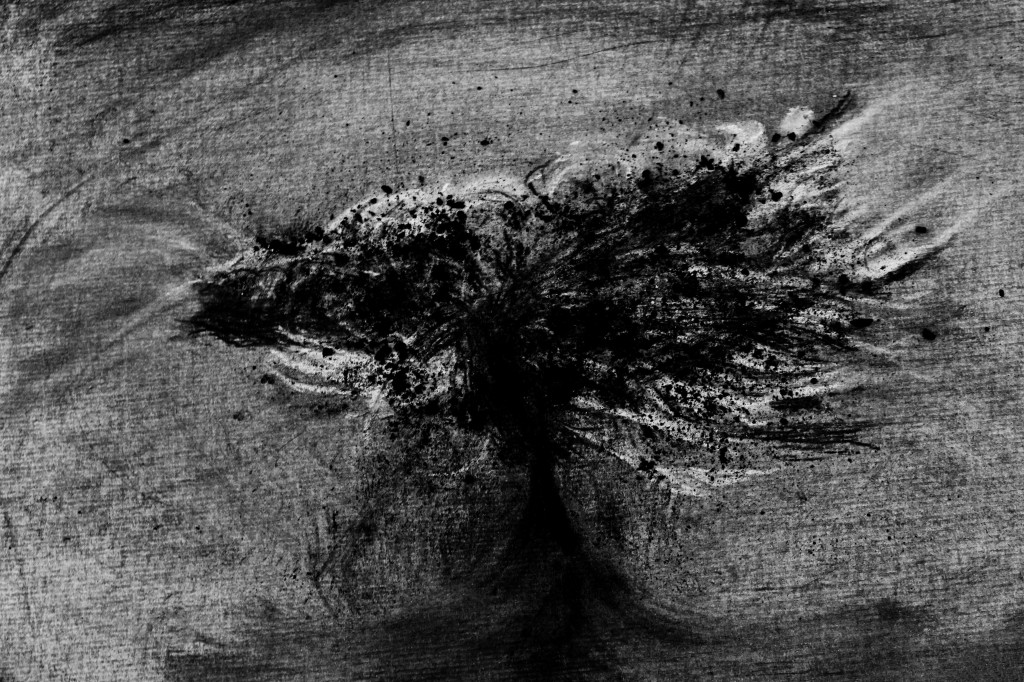
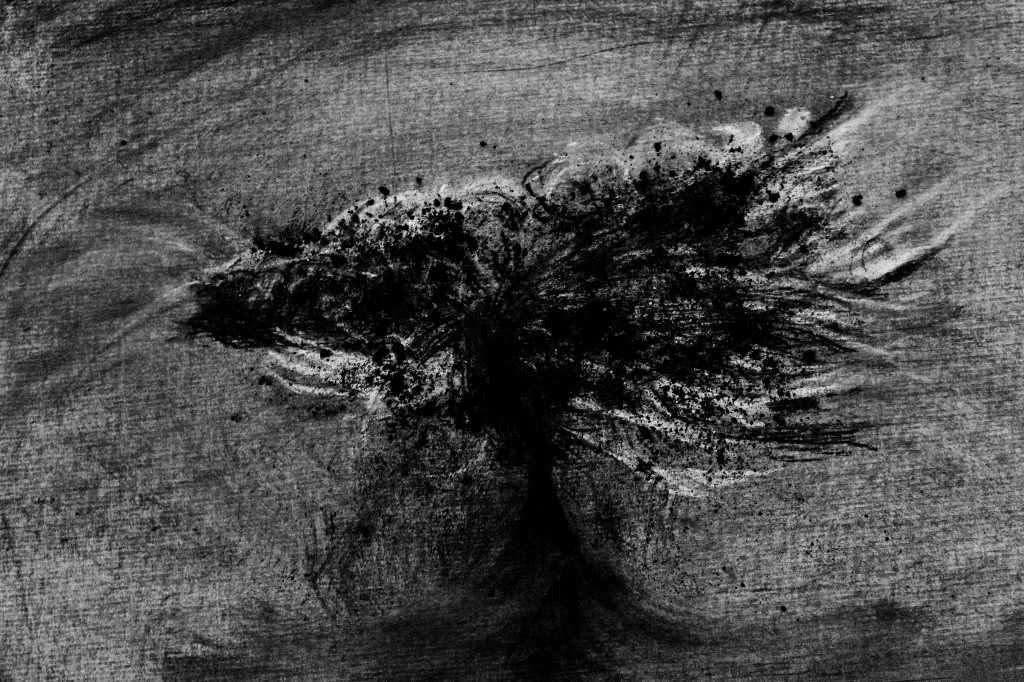
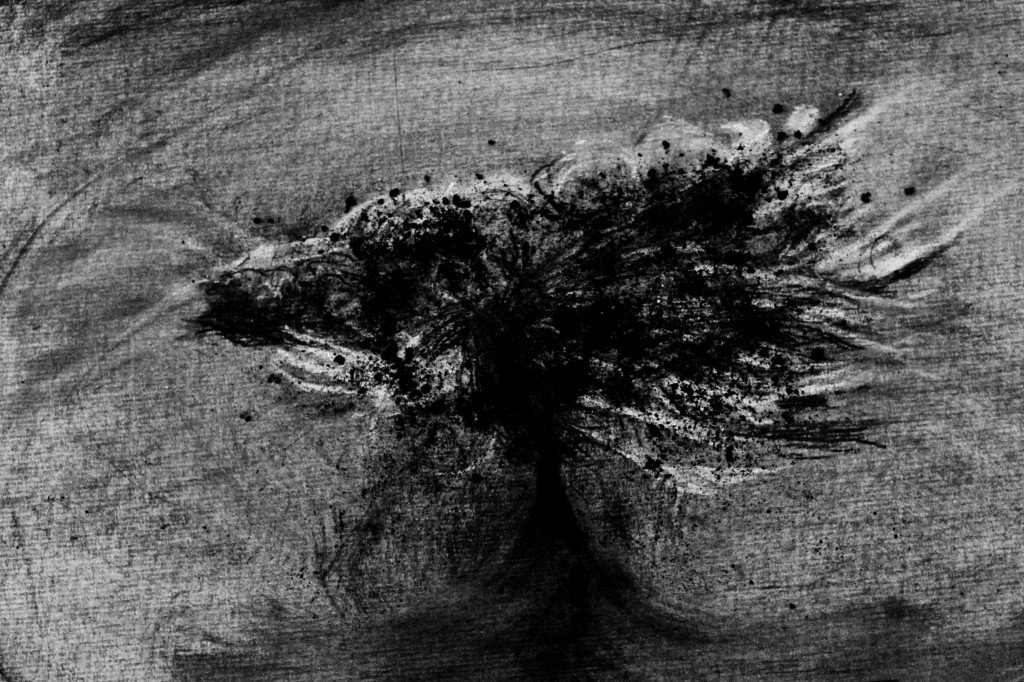



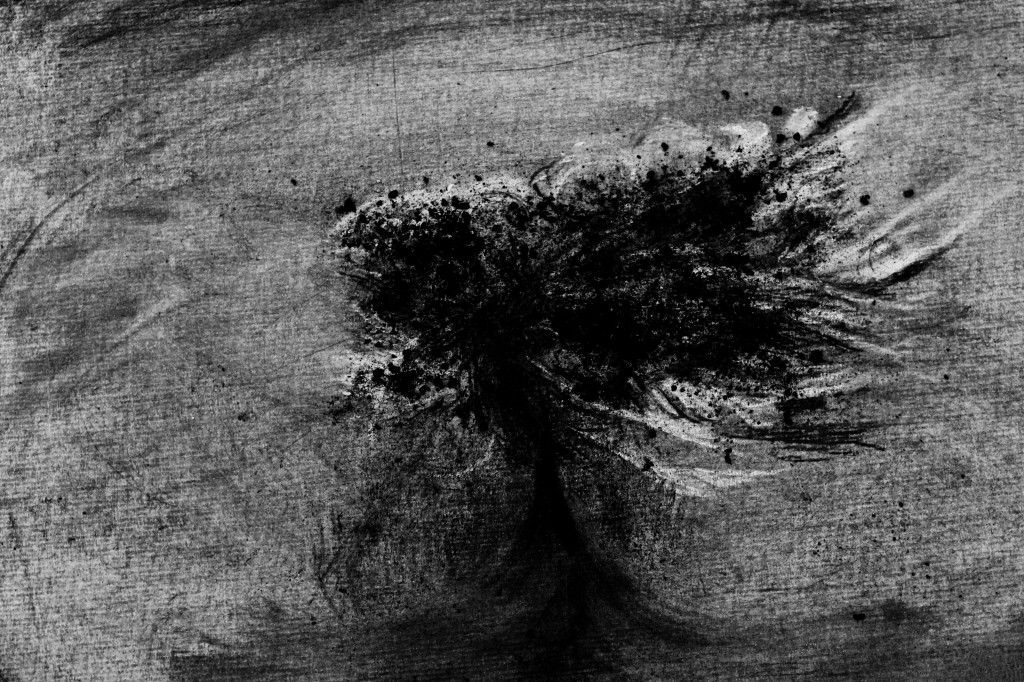




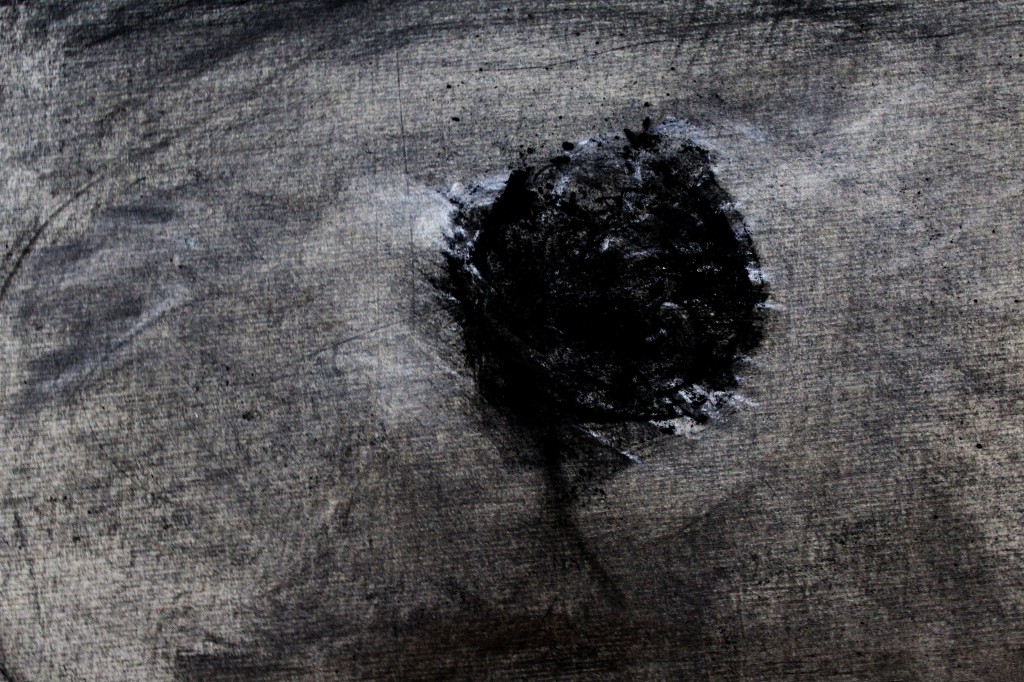




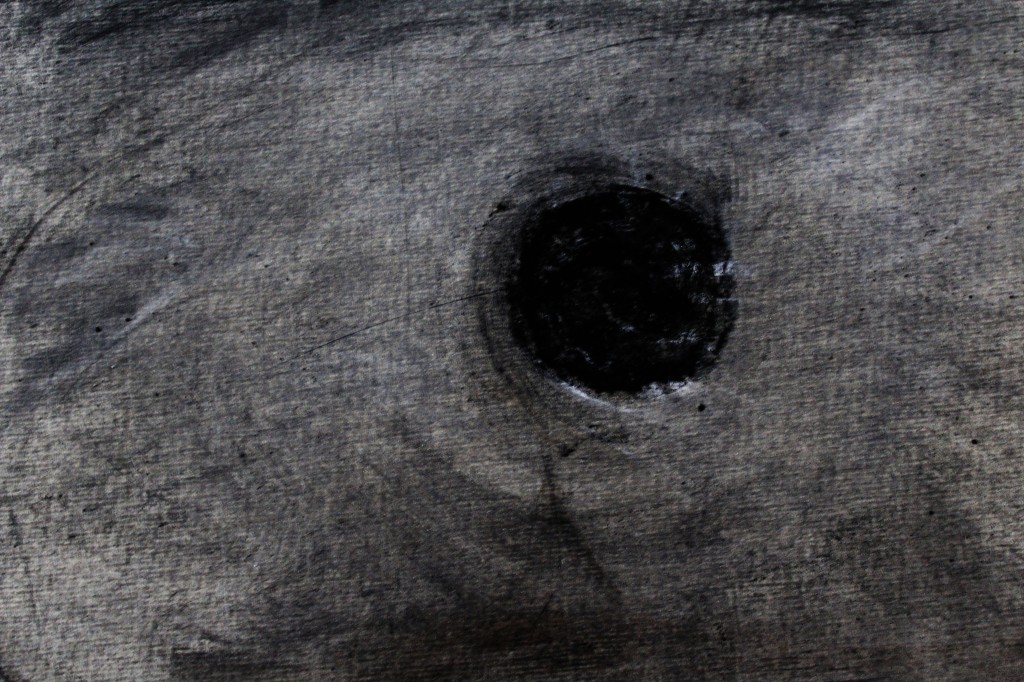







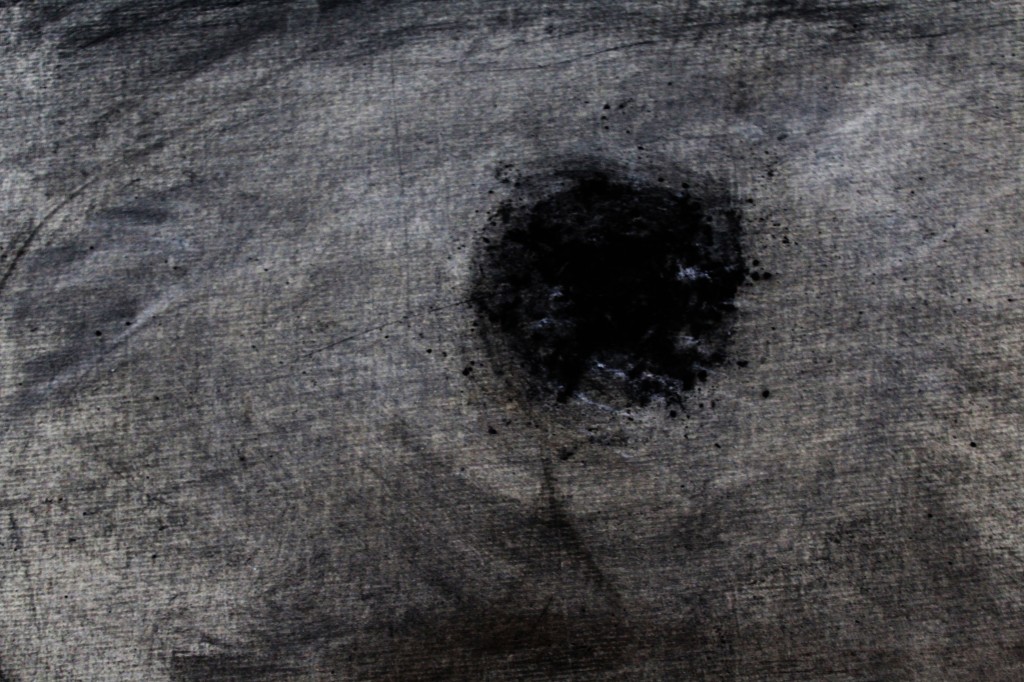


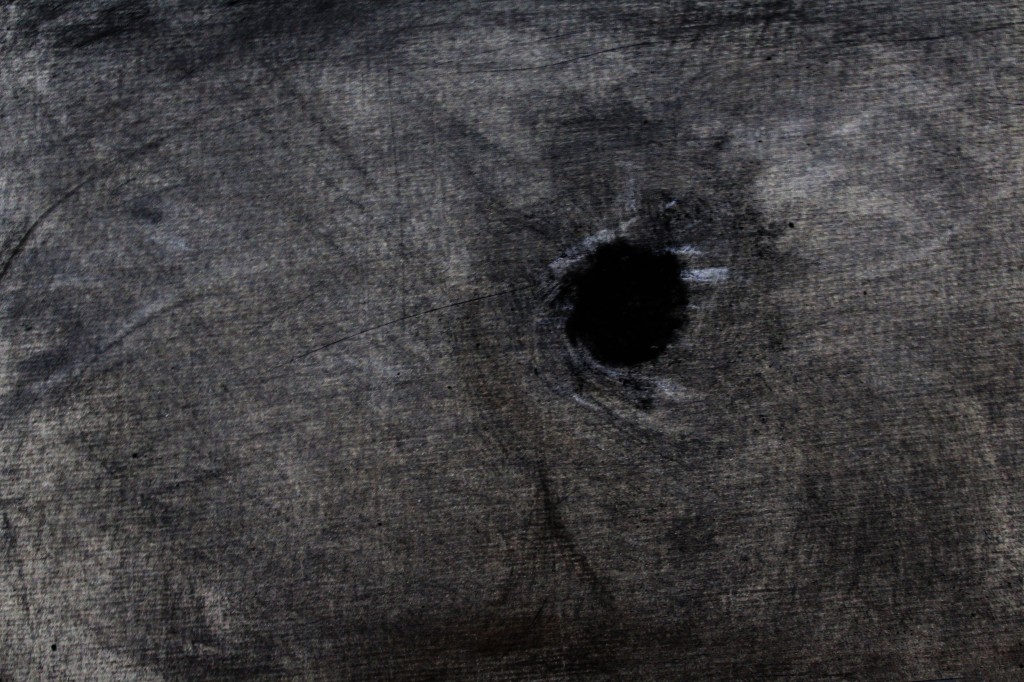




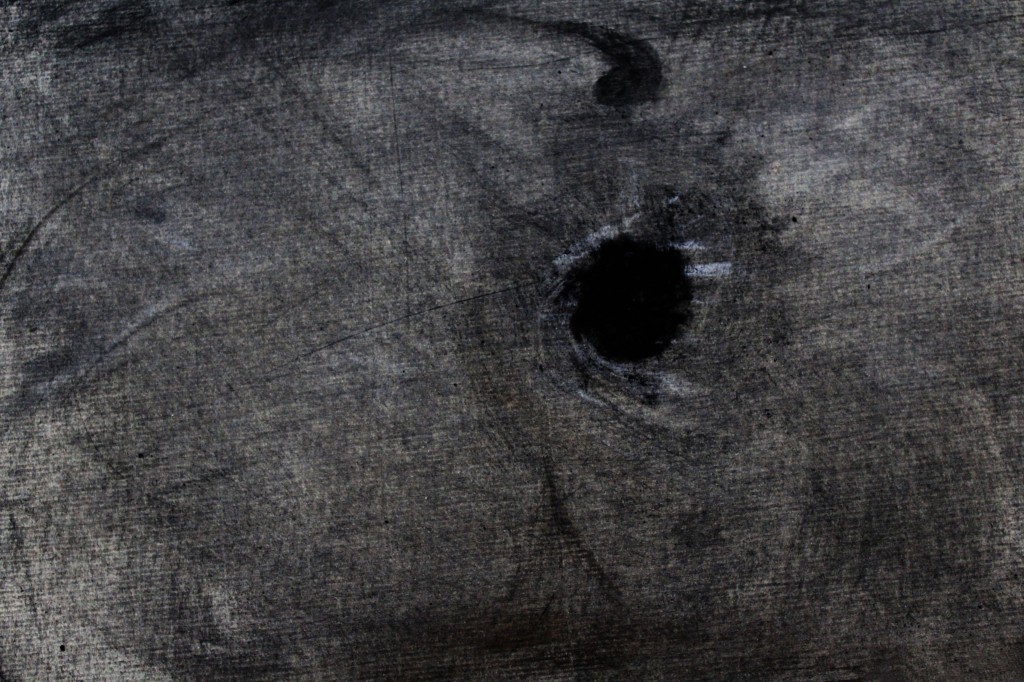

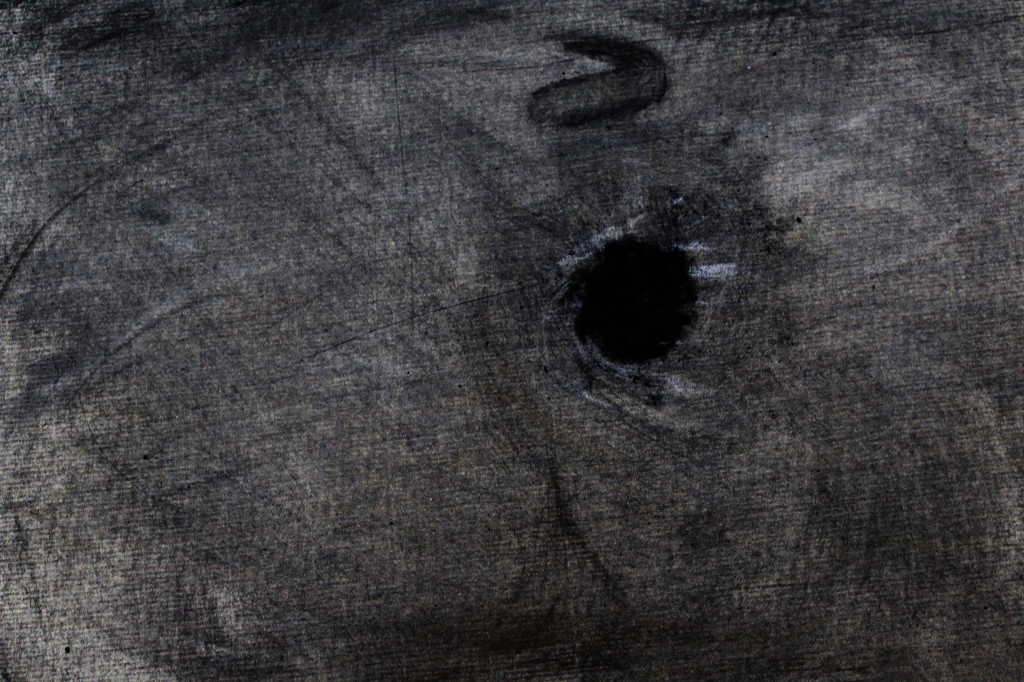





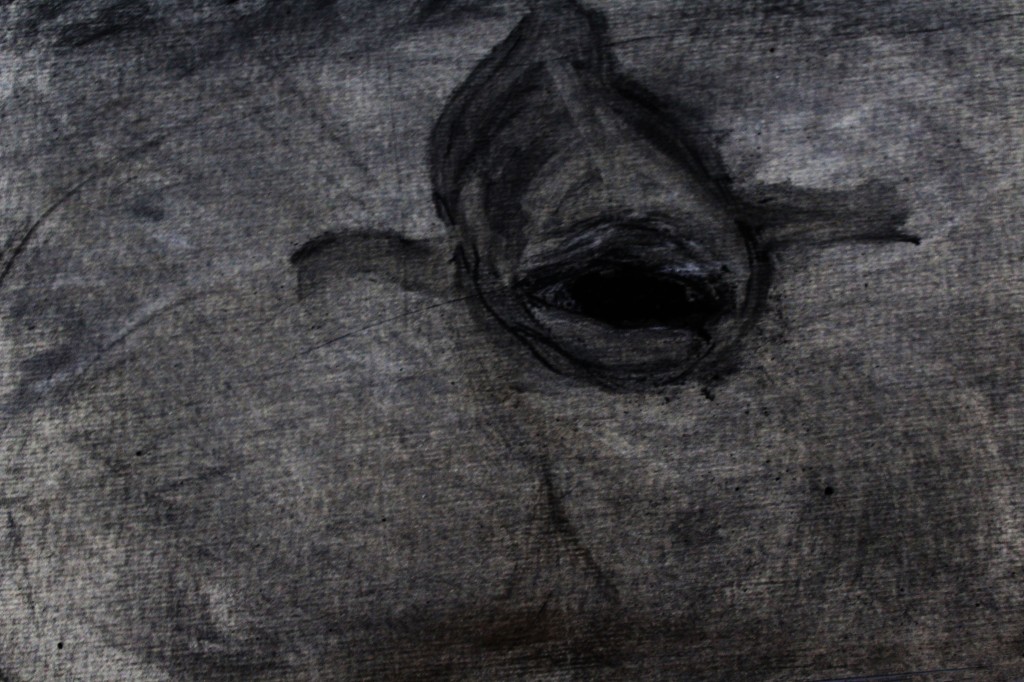








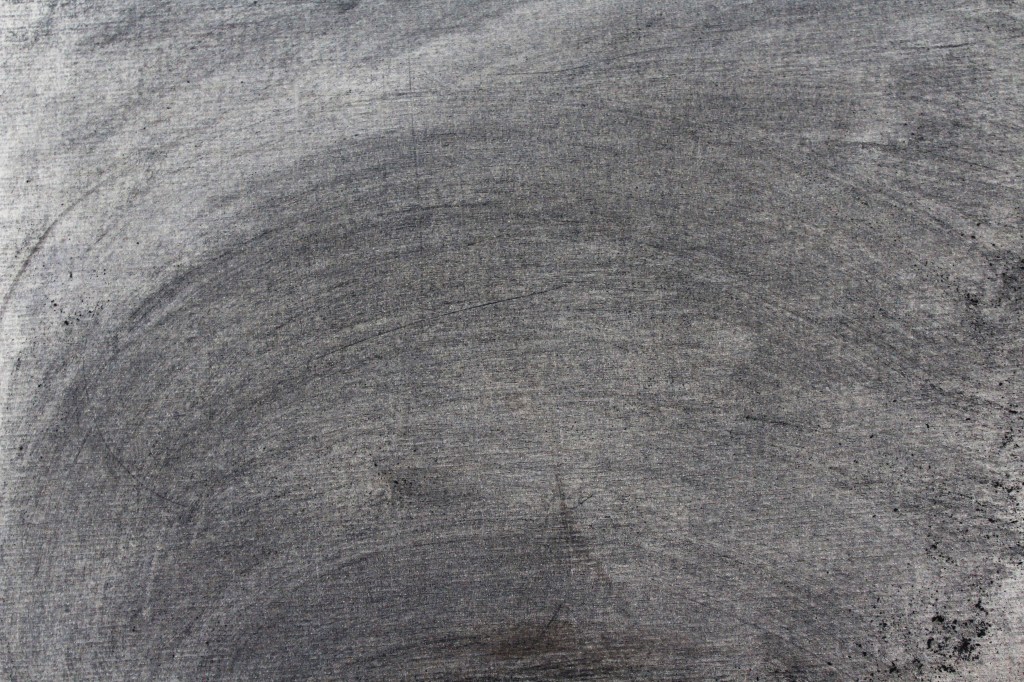
It was very long and very tiring arranging the frames within After Effects using ‘Null Objects’ and ‘Checkbox Control’ expression to create an off an on switch for each drawing. After running through the first play through, I thought back to Assignment Three where music was used to guide the drawing. At the time of arranging the frames I was listening to a band who I associate with the sounds of the sea and the river Axe, the constant changing weather. I wondered if like the vocals in the music I was listening to, I could layer the drawings on top of each other to create an effect of ‘fullness’ at certain stages of the drawing. Where the water is washing in and out, and in other segments through out the animation I have added another animation layer a few frames behind the ‘main’ one, as I found that it gave a smoothing and feeling of fullness, much like vocal layering.
I thought I had completed my animation, but I went out again and came across a prayer cairn – a lot of these have been popping up around Seaton the past few years. I had been thinking that my introduction to the video needed more of a build up, and so I took a photograph of the prayer cairn and used this, alongside hand drawn animation of a pebble to begin my animation. I think that the tossing of the pebble into the prayer cairn sets off the subsequent events, and it may be the River who is making a prayer.
I used this new introduction to go slowly into the rest of my drawings. I had watched Béla Tarr’s The Turin Horse a few nights before, and it’s an incredibly slow film, I was really taken by the way the sound of the storm outside the house is repeated again and again over three hours (example from a clip here), and how by the end it sounds like a human choir – but the sound hasn’t changed at all, only my interpretation of the sound. The film gave me the confidence to be slower than I would normally be, to repeat drawings and sounds when arranging them in After Effects.
Finally, I used my own recordings of the harbour that I had taken in the winter – this is the main tune throughout the animation, wind passing through sails and creating an eerie song. The introduction uses the sound of rain I recorded from the back of my flat. I also added a couple of sounds that I couldn’t record myself, factory sounds of metal creaking and also a drum, all from the BBC Sound Library. Livia Bloom Ingram (2011) described the sound of the wind in The Turin Horse as “a character all its own”, and I tried to think of the sounds I used in a similar way, equal to the drawings.
Creating this animation has really sparked off an interest in creating longer animations in the future, letting drawings draw themselves and being open to new ideas spontaneously, and exploring further how sound can influence the perception of drawings.
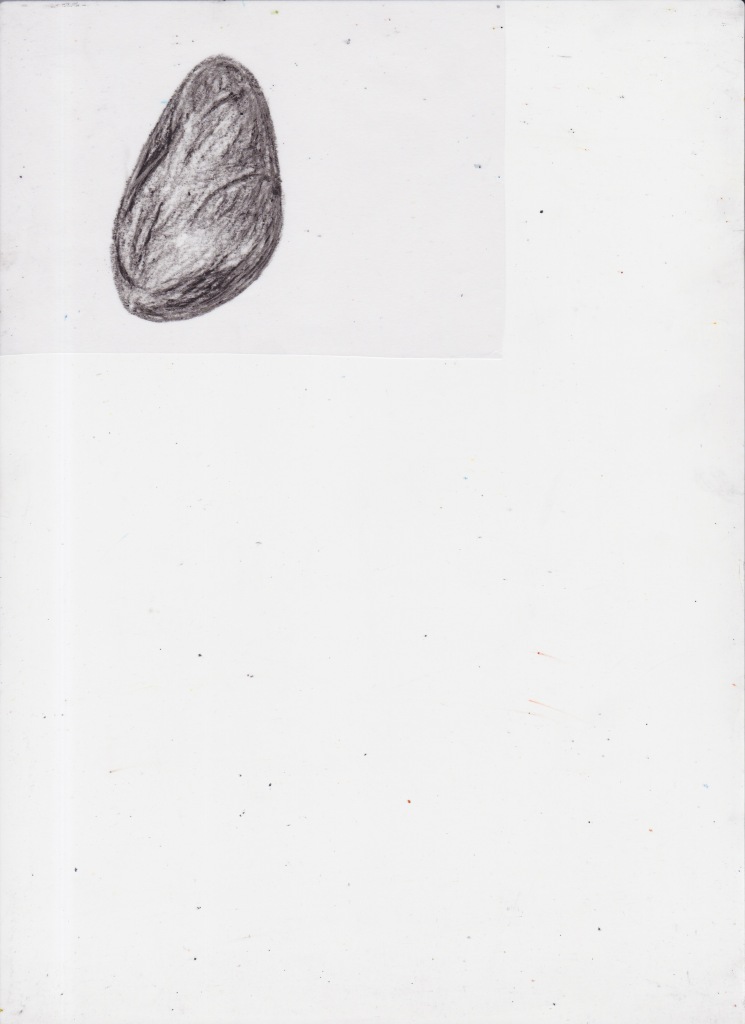


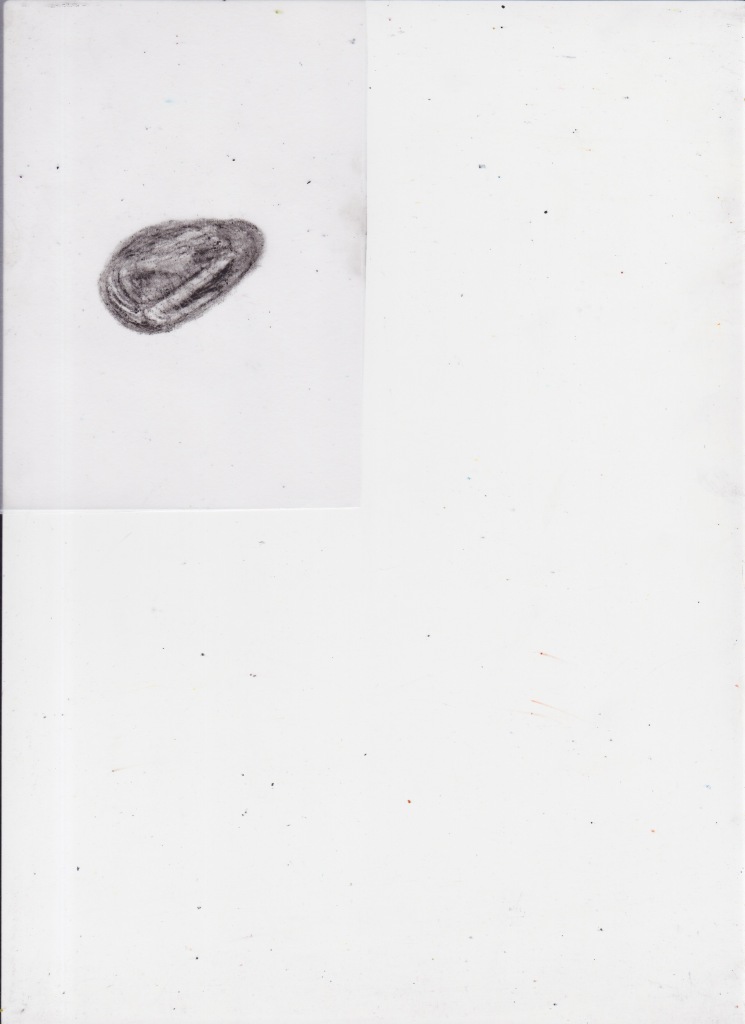




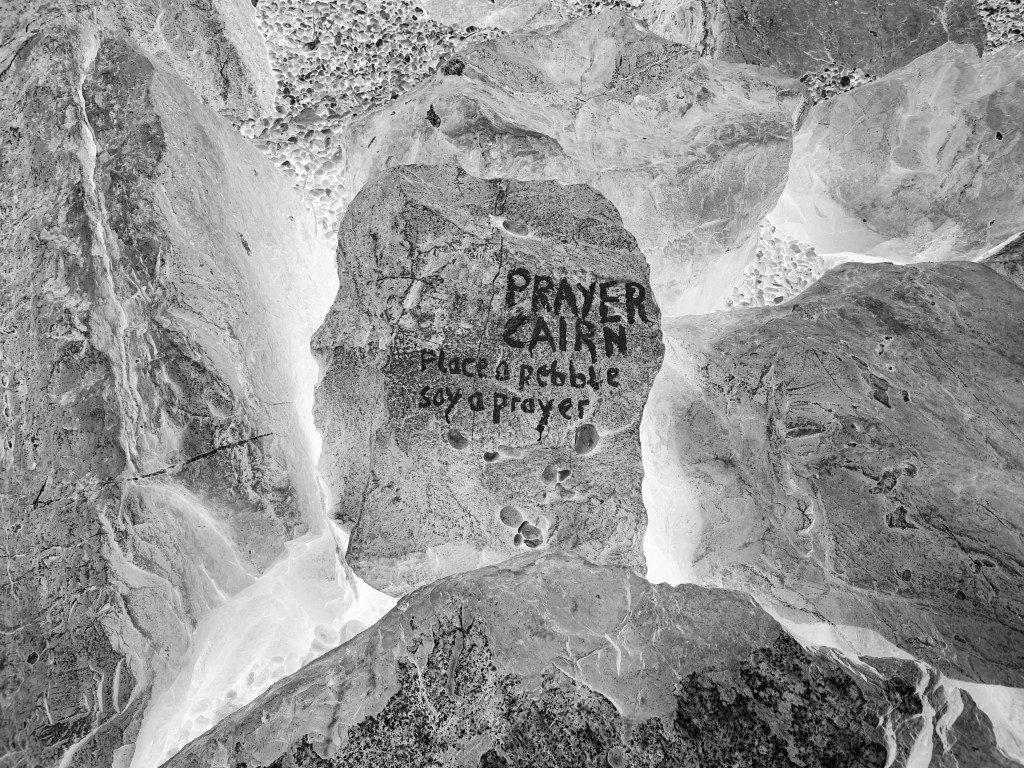
Final Animation:
Creating this animation has really sparked off an interest in creating longer animations in the future, letting drawings draw themselves and being open to new ideas spontaneously, and exploring further how sound can influence the perception of drawings.
When I initially read the interview with Tania Kovats suggested by my tutor, I didn’t really understand what Kovats meant by, “you can find your way into a drawing, as they often tell the story of their making. And I trust that that one drawing can speak to another” (Artspace, 2021). Now having completed this assignment/parallel project, I do understand what she means. The two batches of charcoal drawings did at the time seem to be speaking to each other, I had no real idea of whether they would go together until after they had been completed, but they seemed to know each other and it was quite a natural process transitioning from one batch to the other.
Bibliography
ART21, 2010. William Kentridge: “Breathe” | Art21 “Extended Play”, Available at: https://www.youtube.com/watch?v=ja4Wk7g6sdE.
Artspace, 2021. Tania Kovats – why I draw. Artspace. Available at: https://www.artspace.com/magazine/interviews_features/meet_the_artist/tania-kovats-why-i-draw-56738.
Bloom Ingram, L., 2011. Sound and fury: Bela Tarr’s “The Turin Horse” plus more at the Cannes Film Festival: Filmmaker Magazine. Filmmaker Magazine | Publication with a focus on independent film, offering articles, links, and resources. Available at: https://filmmakermagazine.com/24093-sound-and-fury-bela-tarrs-the-turin-horse-plus-more-at-the-cannes-film-festival/#.Yqtesy8w1gg.
Jacobs, D., 2014. The Bigger Picture… the making of. Available at: http://www.thebiggerpicturefilm.com/ .
Ndiritu, G., 2021. Ways of Seeing: A New Museum Story for Planet Earth. Ways of Seeing – Gropius Bau. Available at: https://www.berlinerfestspiele.de/en/gropiusbau/programm/journal/2021/grace-ndiritu-ways-of-seeing.html.
The Rivers Trust, 2022. Key issues. The Rivers Trust. Available at: https://theriverstrust.org/key-issues.
San Francisco Museum of Modern Art, 2010. William Kentridge: transformation with animation, Available at: https://youtu.be/5_UphwAfjhk.

